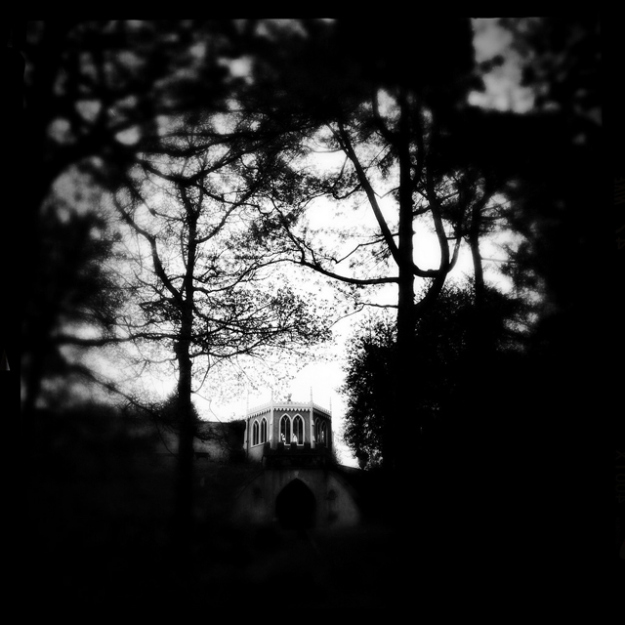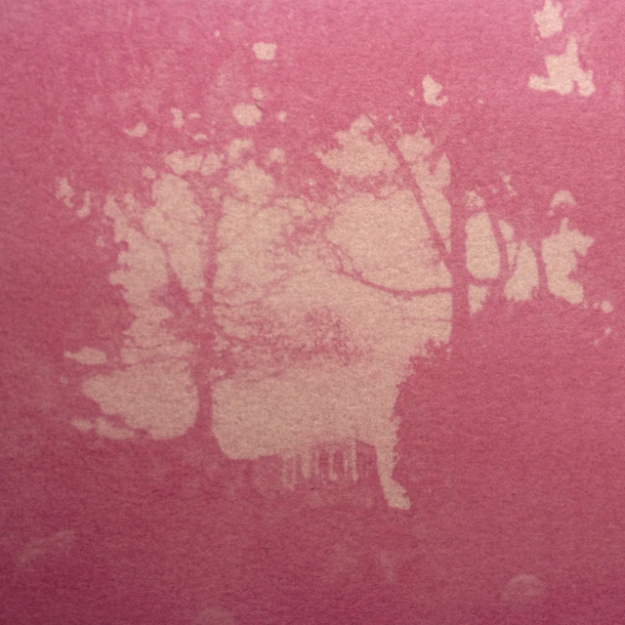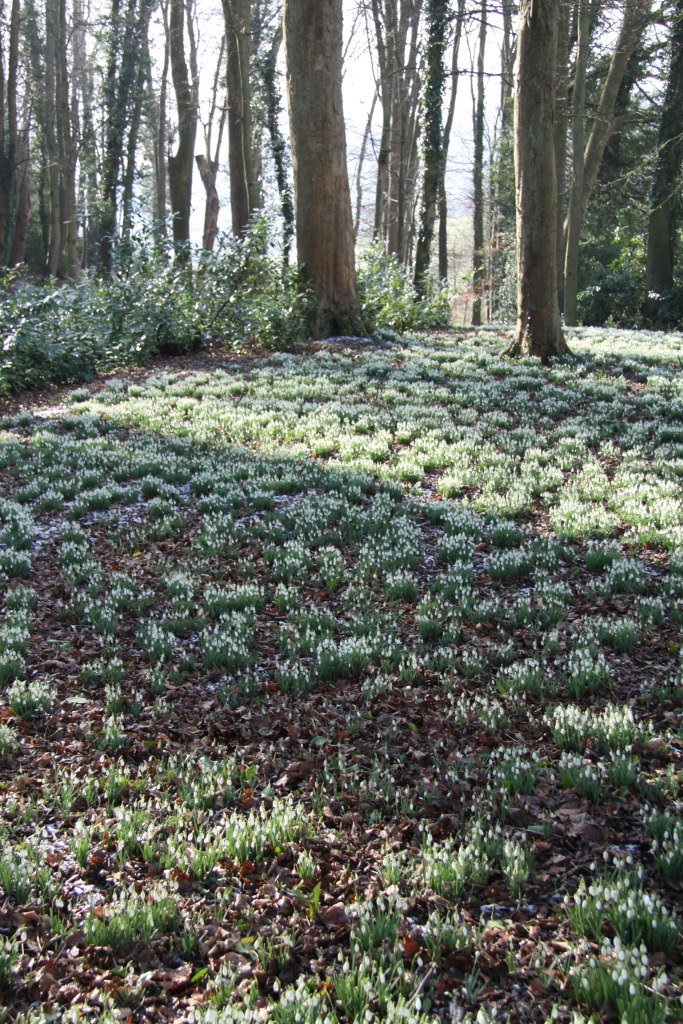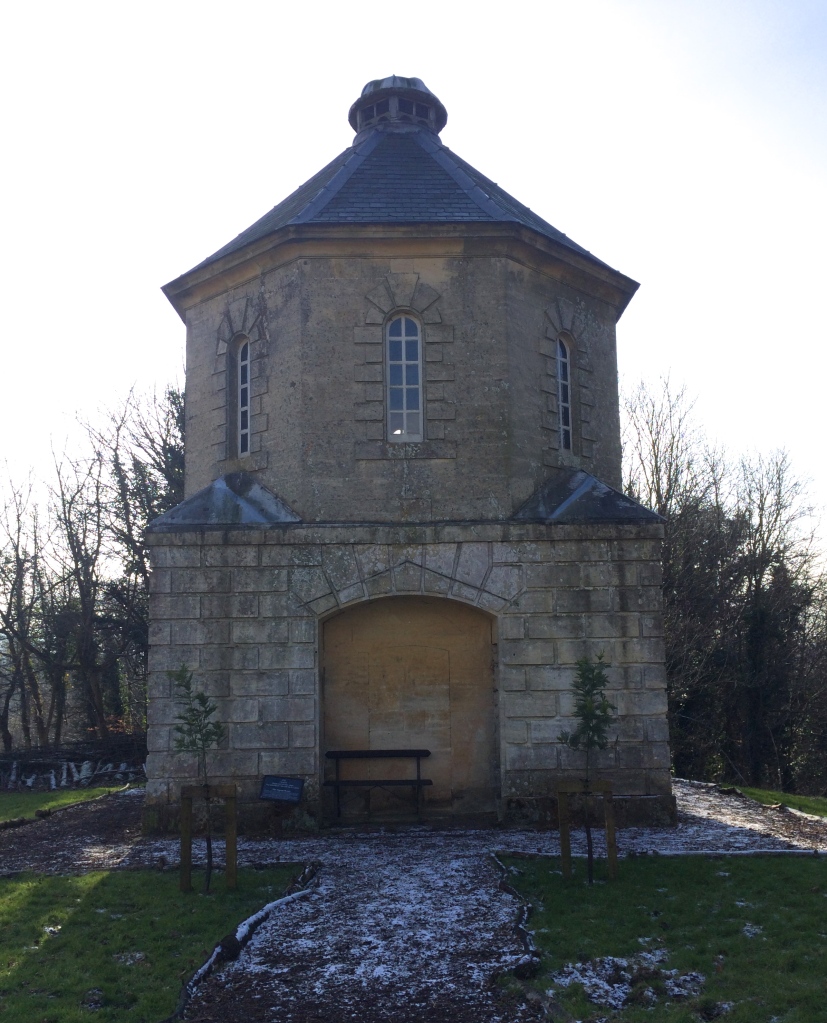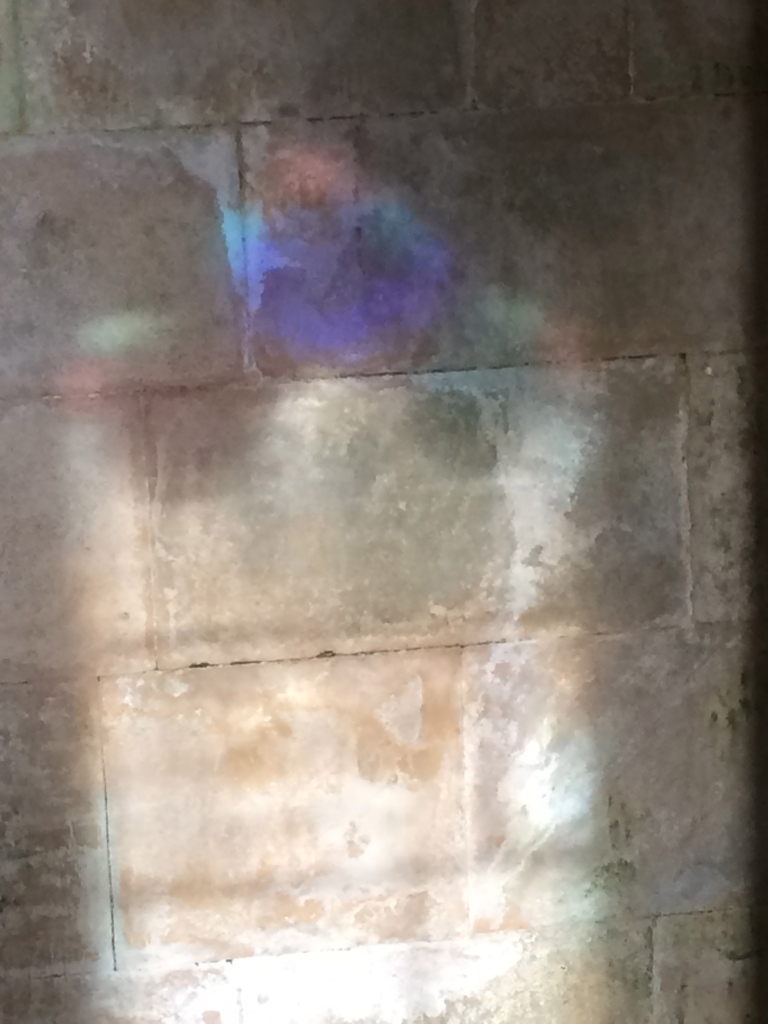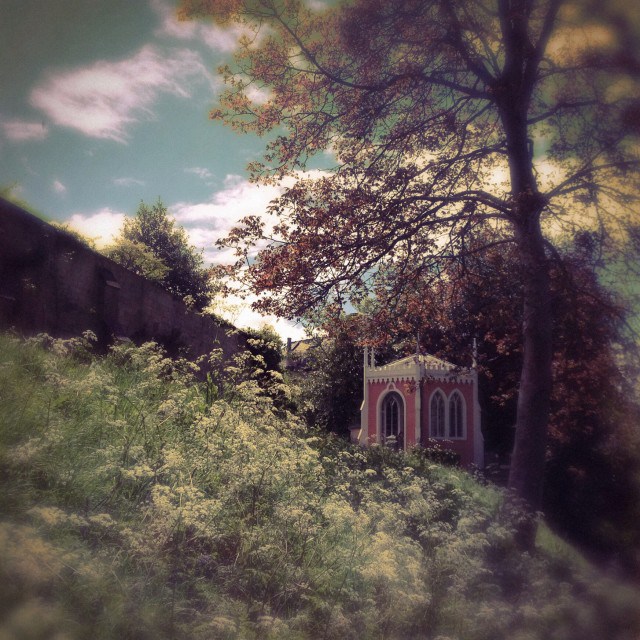THE DREAM GARDENS OF LE NÔTRE AND JULIAN & ISABEL BANNERMAN
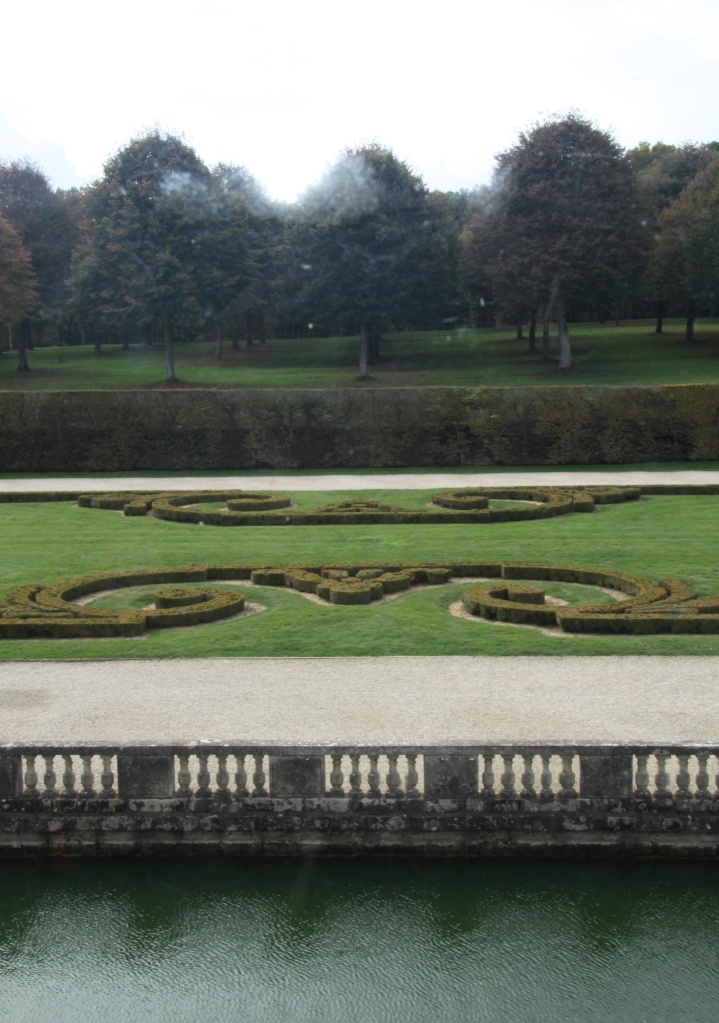 View through an old glass pane at the Château de Vaux-le-Vicomte: forest, box parterres (‘broderies’), stone balustrade, moat.
View through an old glass pane at the Château de Vaux-le-Vicomte: forest, box parterres (‘broderies’), stone balustrade, moat.
I would like to bet that André le Nôtre and also Isabel and Julian Bannerman would enjoy this view through one of the side windows of the Château de Vaux-le-Vicomte about an hour south of Paris. The reflection in the old glass gives the image the slightly burnt-out quality of an old photograph. The ordered parkland, the painstakingly curvaceous broderies of clipped box, the restrained, light-catching pallor of the gravel, the perfectly proportioned balustrade of local stone, now blotchy with lichen, and the serried ripples on the shiny blue-green water of the elegant square moat that makes Vaux-le-Vicomte appear to float on water are even more tantalising because they are seen from the inside and make you want to get out and explore the garden for yourself.
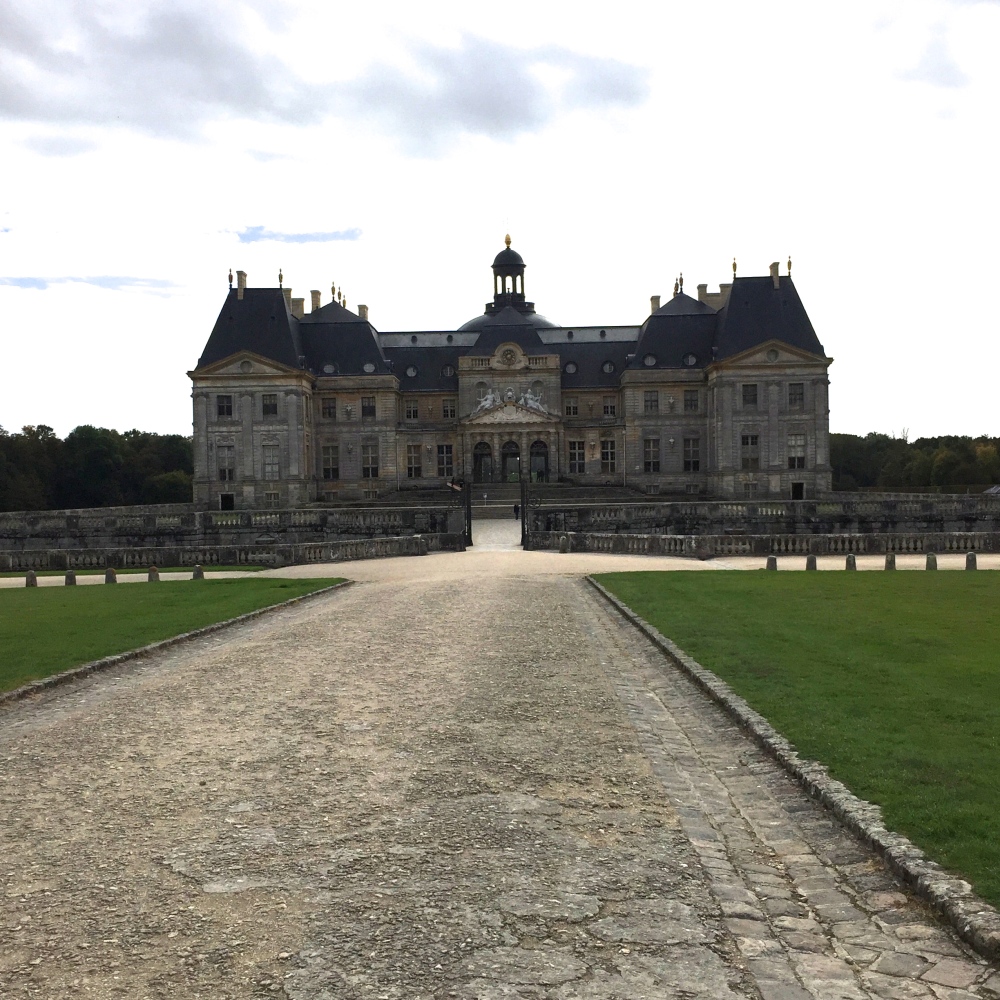 Vaux-le-Vicomte – the approach.
Vaux-le-Vicomte – the approach.
I am on the Eurostar to Paris, and onwards to the Château of Vaux-le-Vicomte, checking my facts with a certain amount of trepidation: Vaux-le-Vicomte is the precursor to Versailles, an estate of 1235 acres, 8 miles of surrounding wall, 81 acres of French formal garden, 17 acres of water, 1.86 miles main axis, 26 basins in 1661 of which 20 remain, 12 miles of pipework ….
I let the miles go by and allow myself to get lost again in the gloriously enthusiastic new book by Isabel and Julian Bannerman about their ambitious, inventive and heart-on-sleeve approach to garden-making over the last 25 years: Landscape of Dreams.
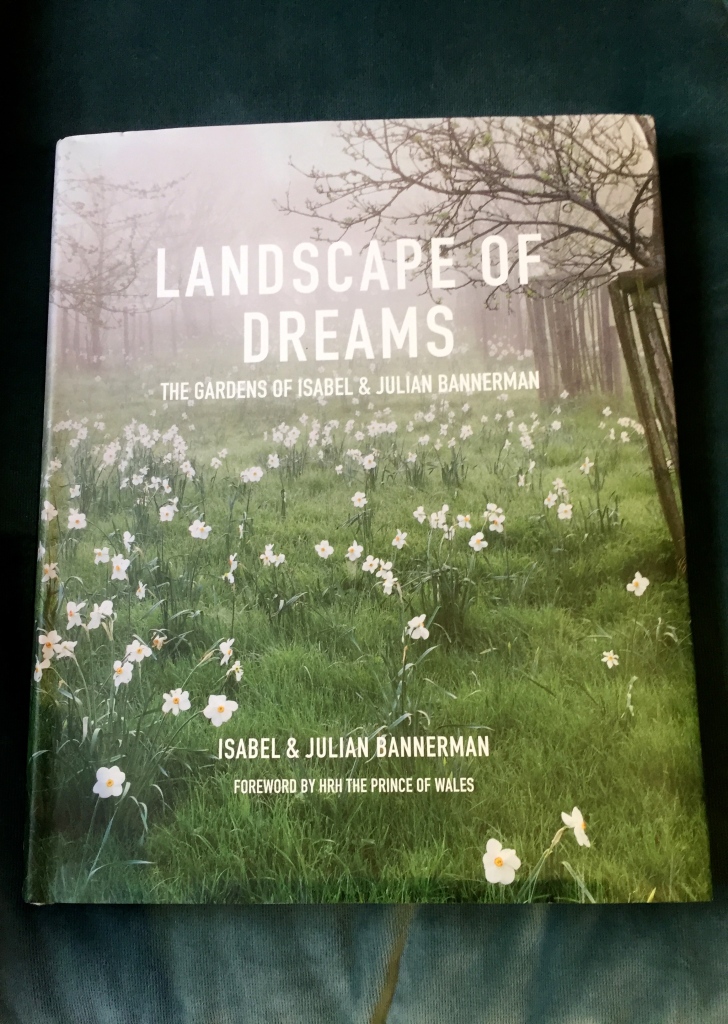 Landscape of Dreams by Isabel & Julian Bannerman.
Landscape of Dreams by Isabel & Julian Bannerman.
Landscape of Dreams is the finest, most intimate, most generous book about garden-making I have read since Frank Lawley’s Herterton House and a New Country Garden . It is also fundamentally infectious. Isabel Bannerman takes you step by step through the reading and looking and learning that has evolved into the couple’s personal, ambitious and dream-filled approach to garden making, and you immediately want to follow. “Looking across the shelves here there sit a broad range of heroes: John Aubrey; Inigo Jones; Charles Bridgeman; Thomas Wright; Batty Langley; William Blake; Eric Ravilious; Barbara Jones and Hylton Nel. Books about all the decorative arts as well as architecture and gardening have been pivotal in shaping the way we both think, along with of course observing the real world closely at all times”. You are sent off in so many directions, making lists of who next to find out about, and you feel safe in this exciting, brilliantly layered world where nothing you might find out about will ever be wasted.
There is a French connection in stories of Julian’s childhood. Holidays spent at Tours-sur-Marne staying with the Chauvet family who ran a small champagne house ‘opposite Lauren Perrier’ (a playful pleasure in all things more glamorous than less glamorous is a constant theme). Here Julian absorbed the ‘cyclical and studied way’ of living in France but, although his spoken French remained excellent, the impossibility of passing his Maths O Level ‘put paid to his ideas of becoming an architect’. But you don’t need a Maths O Level to be inspired by everything around you and to put it all to wonderfully good use. Inspiring images, such as American landscape architect Dan Kiley’s description of his long driveway in Connecticut where he had planted so many lilac shrubs that ‘when they flowered in May it resembled a puffing steam train’, were the sort of romantic inspiration that Julian would store away and never forget.
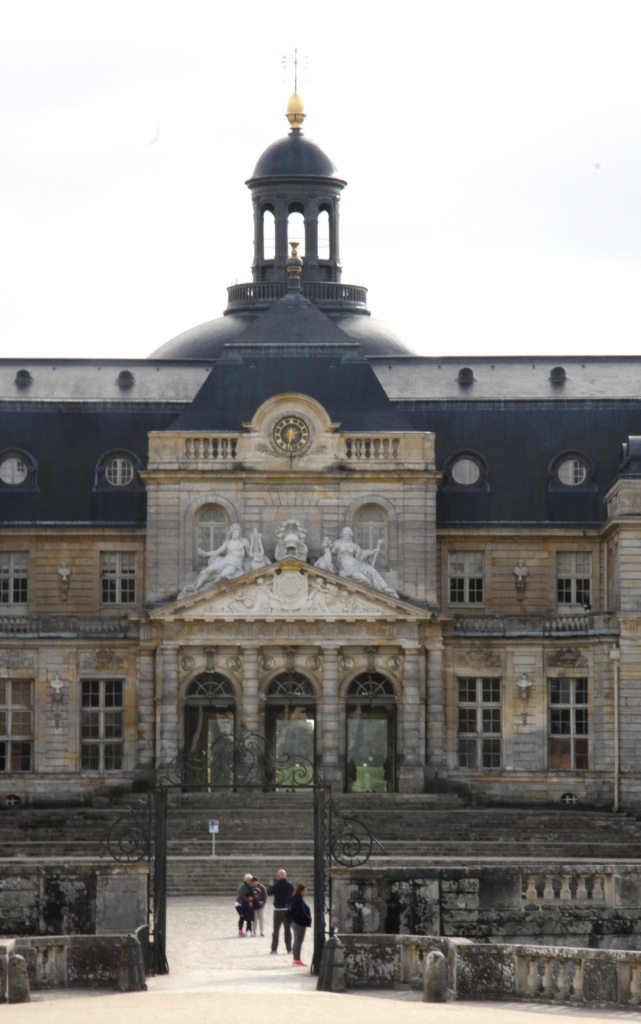 The entrance facade to Vaux-le-Vicomte – you can glimpse the main part of the garden through the three central arches.
The entrance facade to Vaux-le-Vicomte – you can glimpse the main part of the garden through the three central arches.
We are crunching along the fine gravel to the entrance of the château itself. Le Nôtre’s great idea was that the central axis of the garden should start with the approach, travel through the house and continue without stopping to the main garden on the other side. I look back at the achingly huge entrance courtyard with unfinished almost Egyptian 17th century stone figures, looking dangerously white against the dark forest and stormy sky beyond and I begin to get excited.
 Entrance Courtyard with unfinished 17th century stone figures at the boundary wall.
Entrance Courtyard with unfinished 17th century stone figures at the boundary wall.
Suddenly we are in the Grand Salon, built by architect Louis Le Vau and decorated with paintings by Charles Le Brun, looking out on Le Nôtre’s garden, the whole commissioned as one integrated work of splendour by Louis XIV’s Superintendent of Finances, Nicolas Fouquet. Key to understanding the significance of this commission is that Fouquet brought the three men together for the first time and invited them to take the empty land stretching before them and work together to create something splendid. Fouquet’s rise had been rapid and extraordinary, but his fall was more dramatic still. An extravagant party was held for King Louis XIV on August 17, 1661 – a new play by Molière was just a fraction of the delights on offer – but weeks later Fouquet was imprisoned, and the King requisitioned the entire contents of the château (except for a pair of extremely heavy marble topped tables you can still see in the dining room) and brought Le Vau, Le Brun and Le Nôtre to Versailles to transform his hunting lodge along similar lines. Versailles the TV series – with its infamous offer of ‘sex, violence and intrigue, sometimes simultaneously’ (The Telegraph) – was filmed mostly at Vaux-le- Vicomte rather than Versailles as there is so much at Vaux that has remained in tact and unchanged.
 View of the garden from the Grand Salon.
View of the garden from the Grand Salon.
Taking my eyes off the view spread out before me for a moment, I am smitten by the glittering candle stands (the château is famous for its magical candlelit evenings every Saturday from May to October when the house and garden are lit by hundreds of candles), the way the black and white stone floor is further chequered by light and shadow from the enormous windows, by glimpses of the garden to the front, back and to both sides, and by the arching sky blue oval ceiling painted with a soaring eagle.

One of the handsome tiered candle stands catching the light in the Grand Salon.
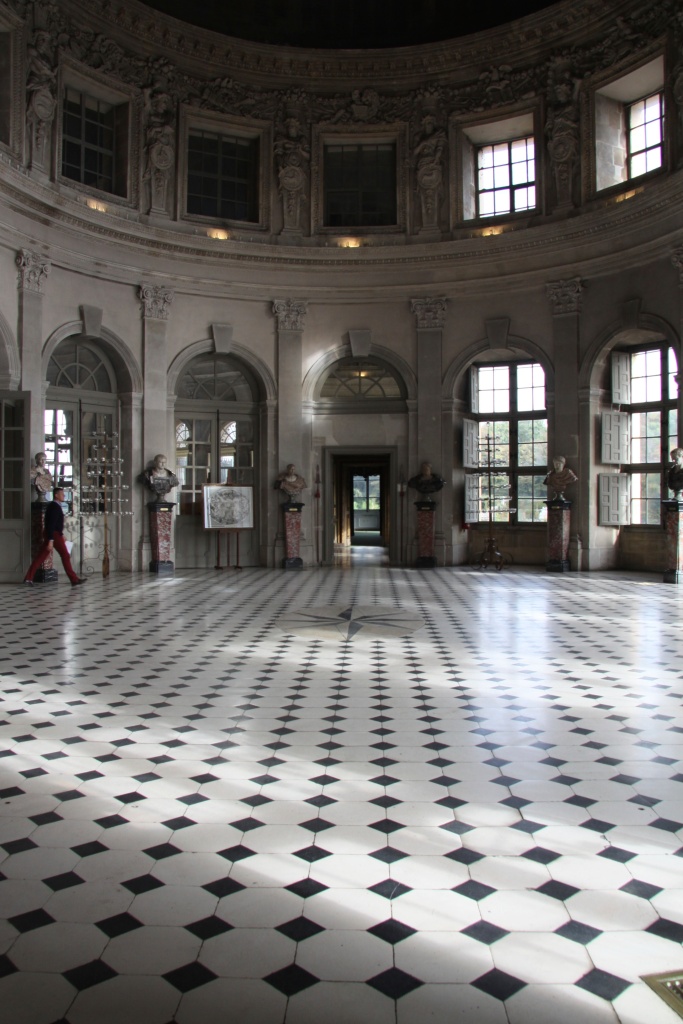
 Shadows and light falling across the black and white stone floor.
Shadows and light falling across the black and white stone floor.
 View through to the garden at one of the sides of the château.
View through to the garden at one of the sides of the château.
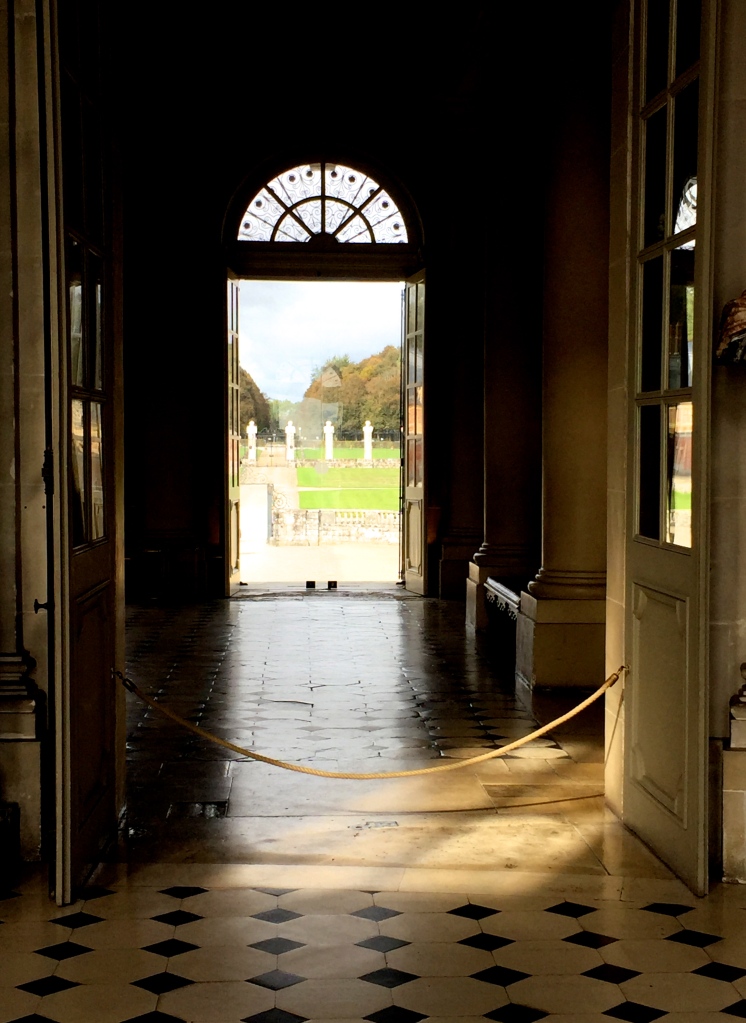 View from the Grand Salon back out to the entrance to the château.
View from the Grand Salon back out to the entrance to the château.

 Windows everywhere framing a tempting view of lawn, topiary, and statuary.
Windows everywhere framing a tempting view of lawn, topiary, and statuary.
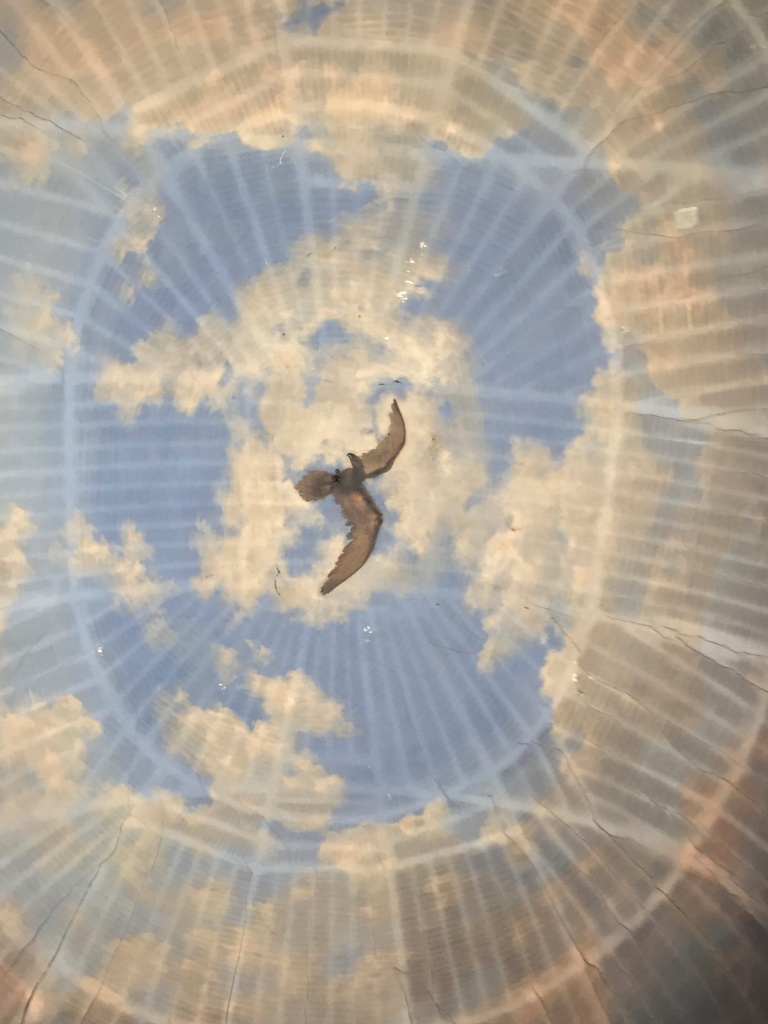
The gorgeous domed oval ceiling painted in the 19th century.
Before I am let loose in the gardens I explore the house. Although richly decorated on almost every surface – my visit coincides with a major restoration programme for many of the painted areas, unusually and imaginatively the restoration is taking place in situ, in full view of the visitors – everything is somehow on a manageable scale. So different to Versailles where to enter the house you have to pass through airport style security and the density of i-phone wielding visitors is overwhelming.
The newly restored Games Room is extremely beautiful with every surface painted, and mirrors and gilt to add depth and glamour. There is a charming table with candle stands and an open game of backgammon which you could almost sit down to play:
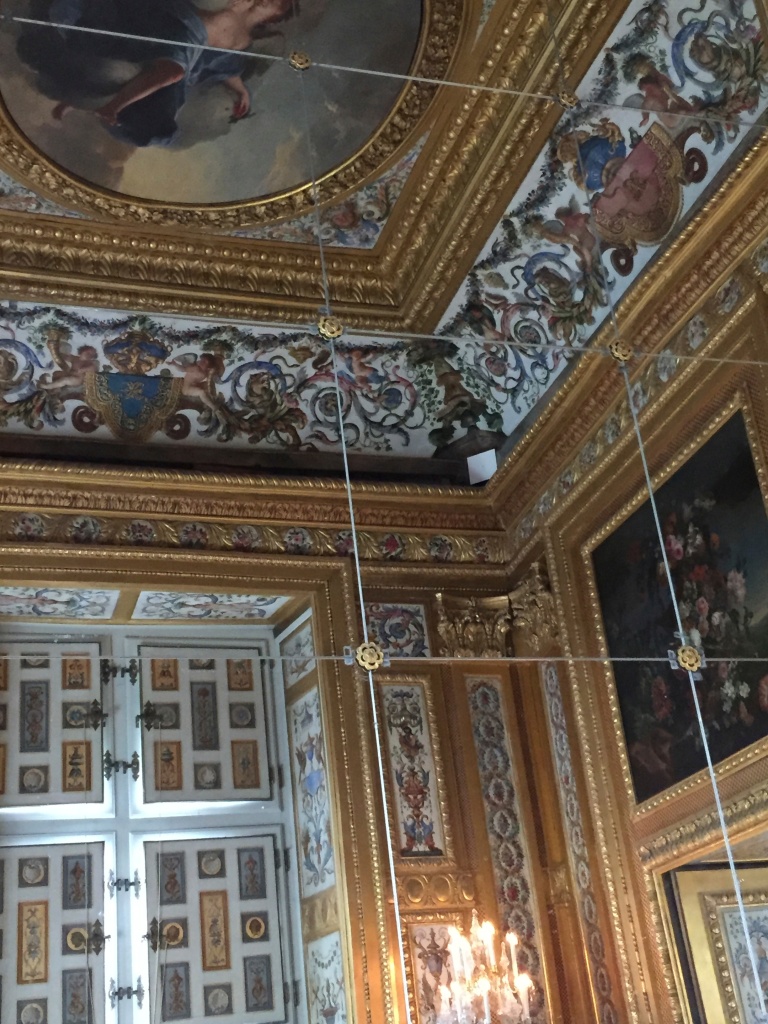
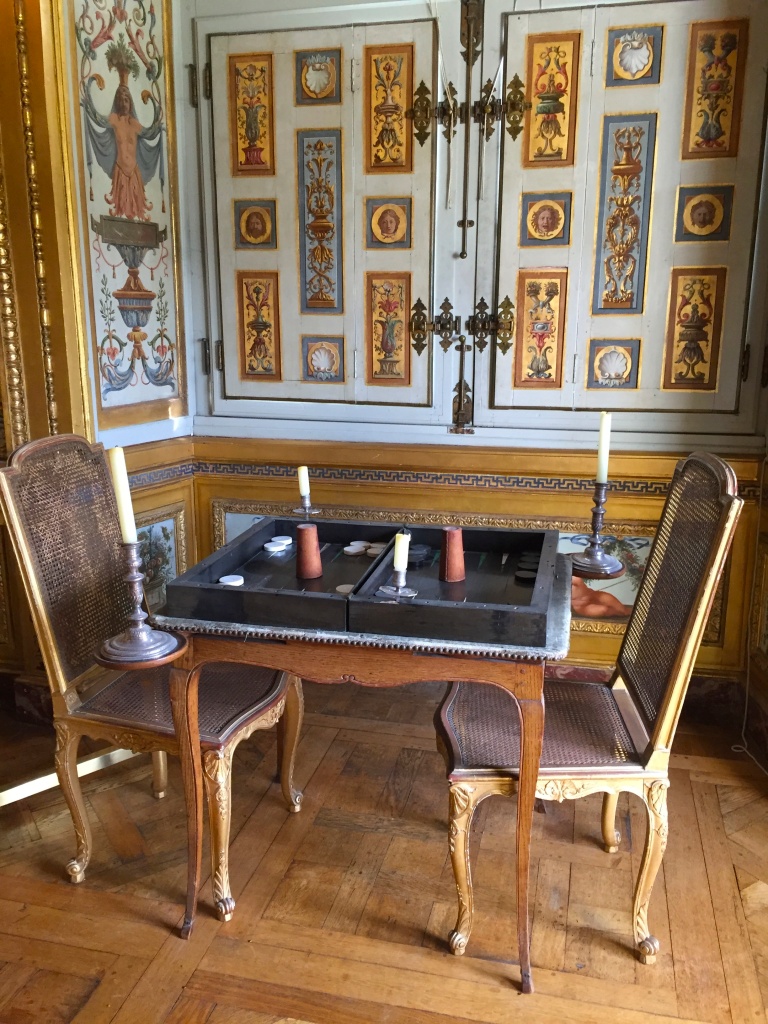
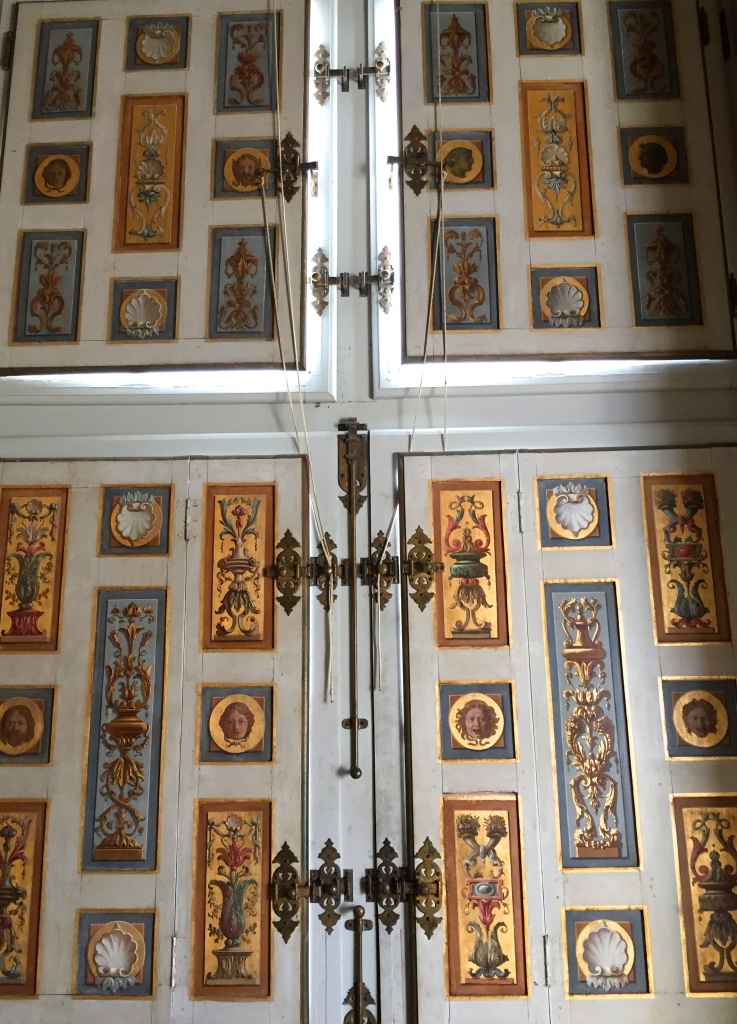
The Games Room with backgammon table and exquisite shutters.
More brief snatches of garden – broderies, water, brick wall and stone figures – through a richly textured series of shuttered windows and patterned floors, and then we are out on the roof top looking down. I love the contrast of chalky grey-blue paint and skinny gold edging with the bright blues and greens of the garden beyond, and I love the promise of light and air in a room so dark that even its shiny floor cannot warm things up.
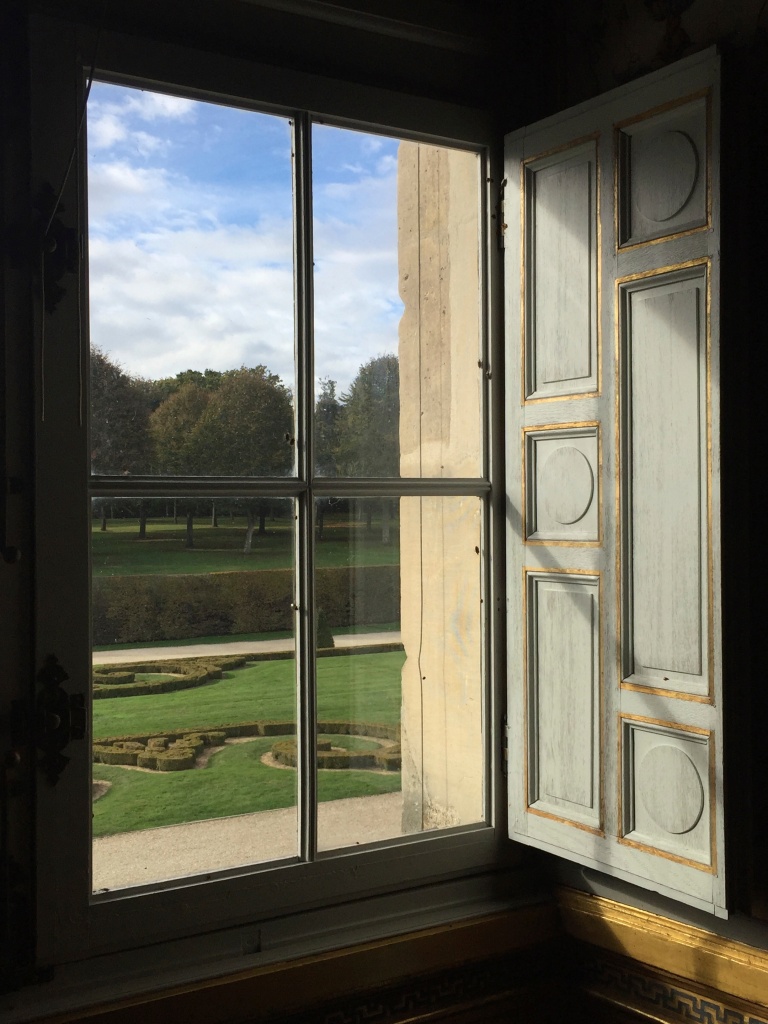
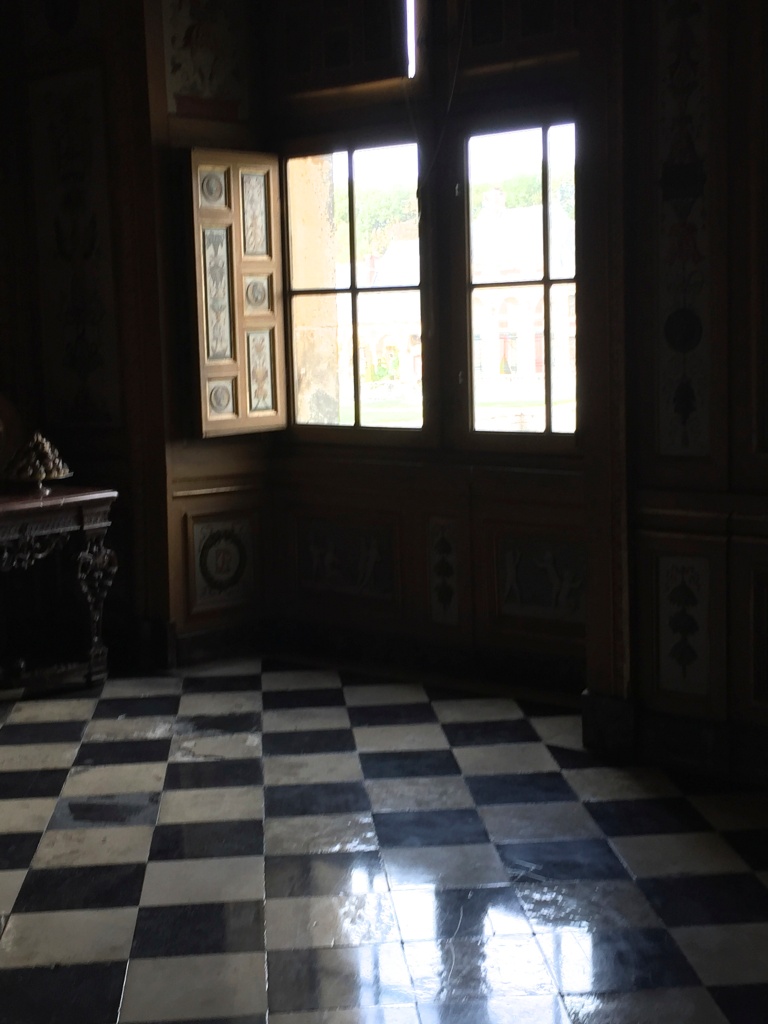
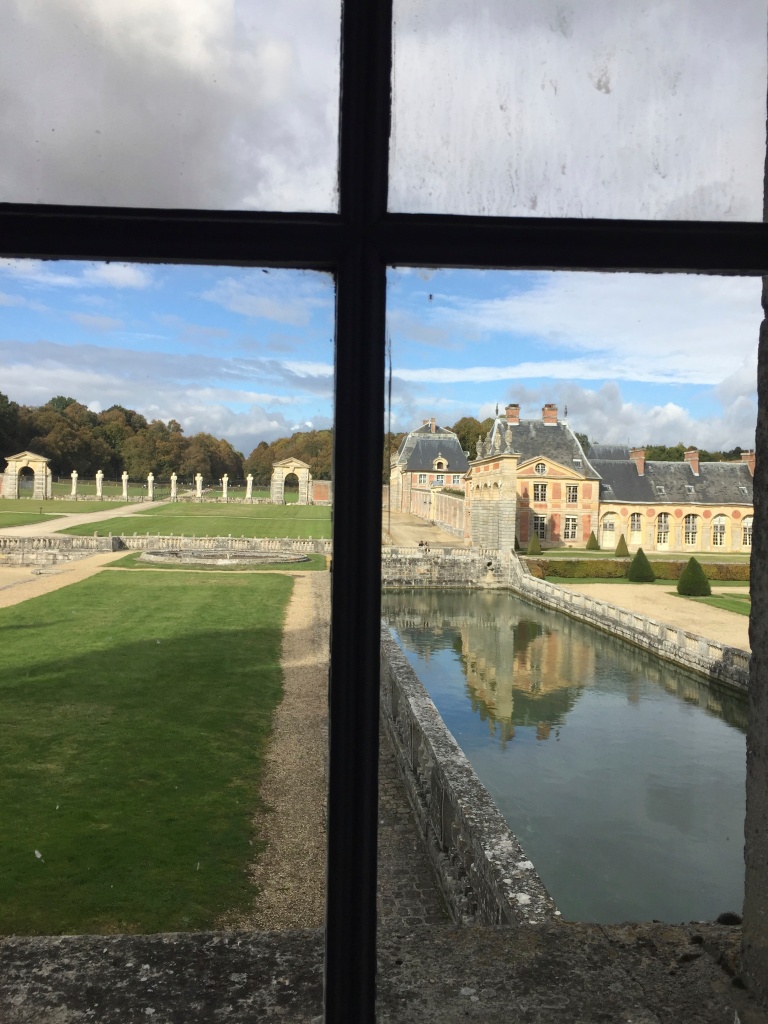
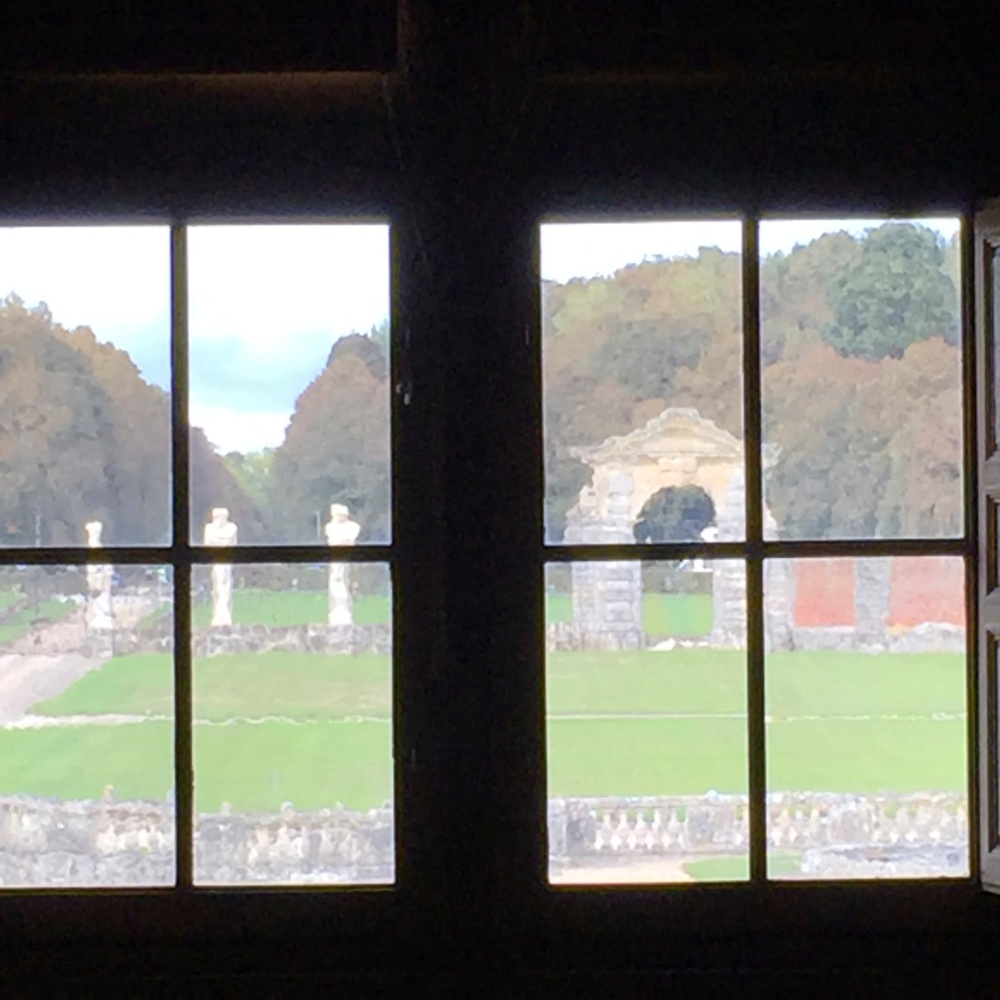
Glimpses of garden through a series of windows.
So at last the garden and the opportunity to drink in the scale of ambition and let yourself be fooled by the brilliant tricks of perspective designed for the visitor by le Nôtre. I am not often excited by a cool mathematical approach to gardening, but I do marvel at the cunning and sheer effort involved in making the garden seem longer by increasing the size of objects the further they are from the château – the circular pool at the centre of the photograph below may seem the same sort of size as the square pool behind it but the square pool is in fact eight times as big.

From the roof top looking down – the main garden extending into the distance.
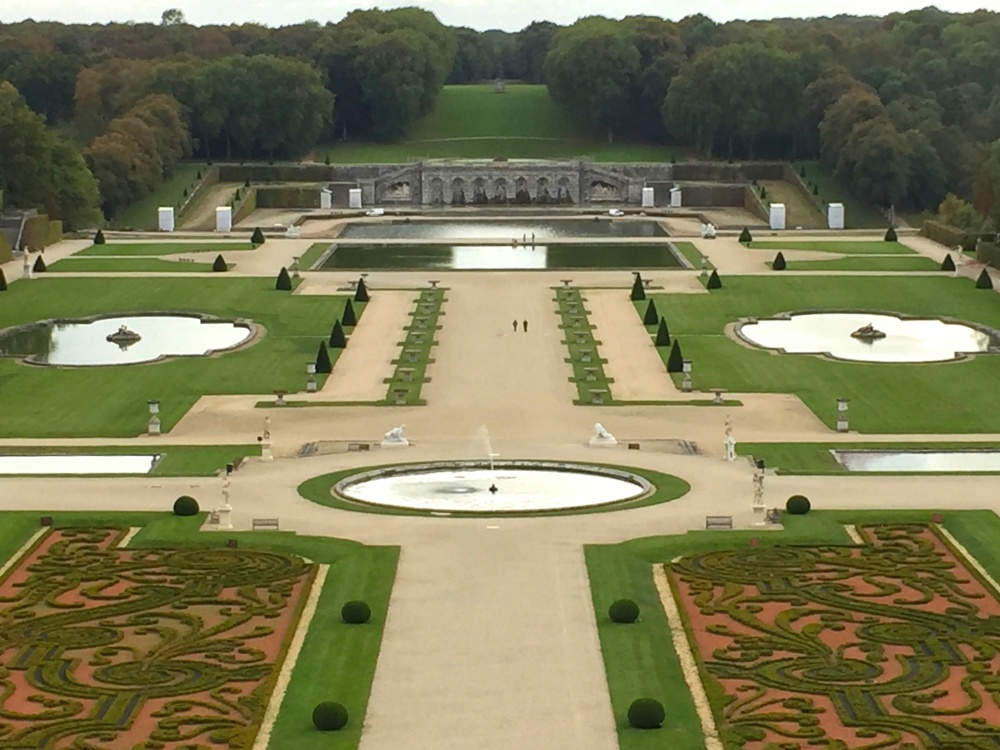 You can start to see that the square pool is considerably bigger than the round pool closer in the foreground.
You can start to see that the square pool is considerably bigger than the round pool closer in the foreground.
The square pool turns out to be designed as a reflecting pool, Le Miroir d’Eau, easily and magnificently embracing the reflection of the entire château on a calm day:

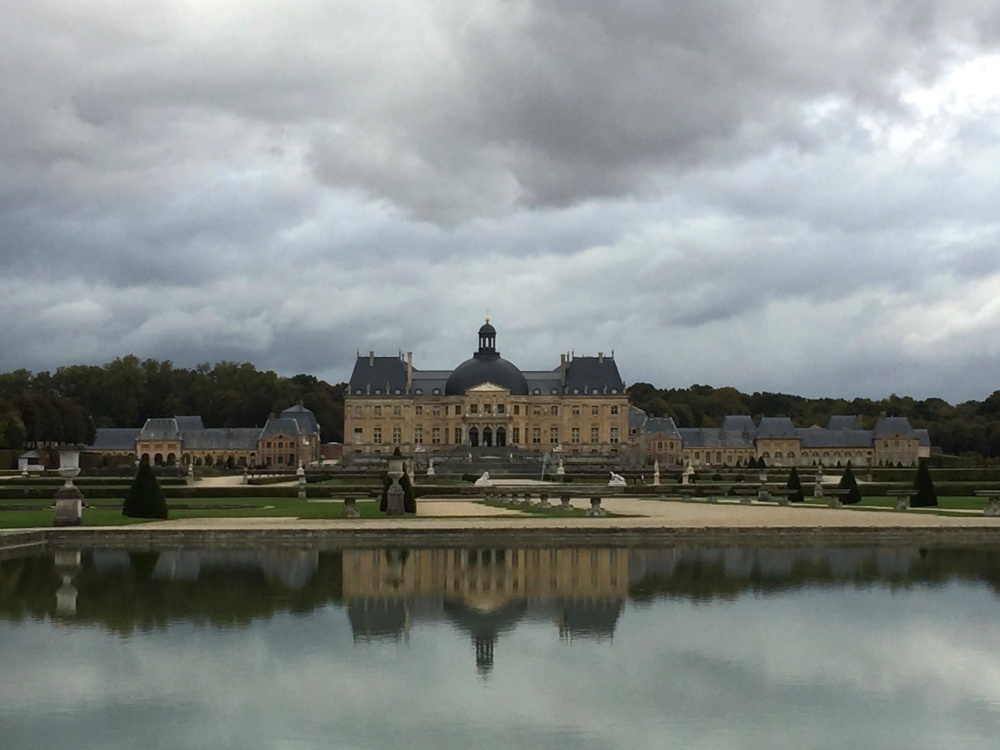 The château reflected in the Square Pool, Le Miroir d’Eau.
The château reflected in the Square Pool, Le Miroir d’Eau.
And then a third surprise, the ‘pool’ beyond the Miroir d’Eau turns out to be a section of canal that extends substantially to the West and East.
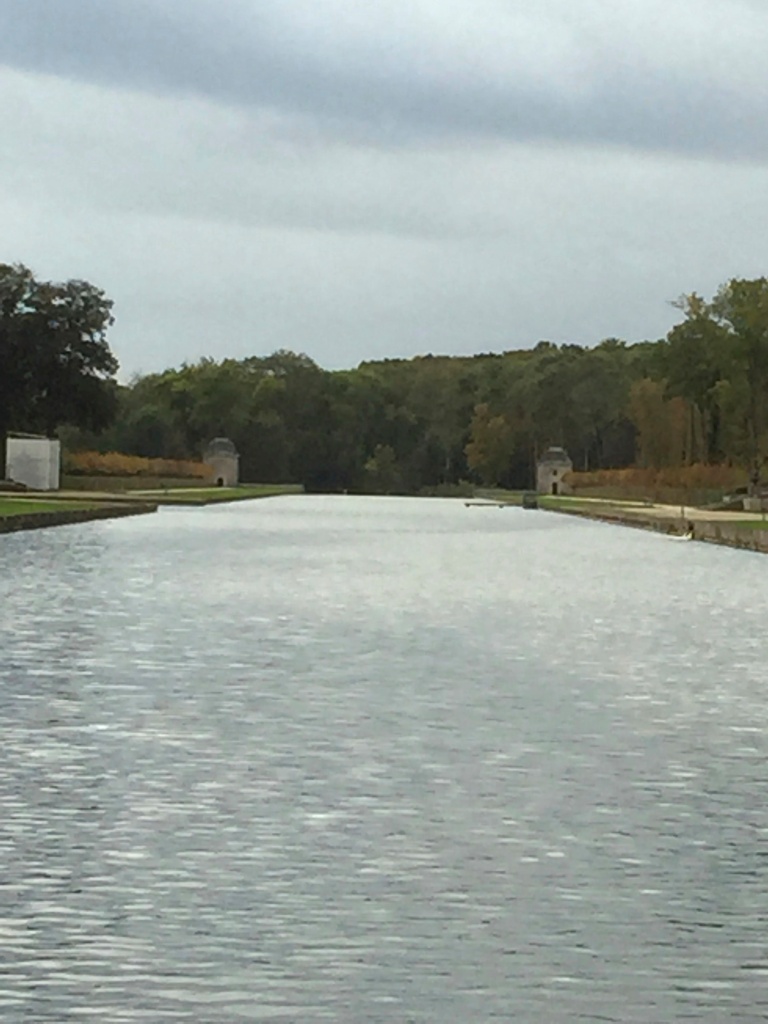
View to the East along the canal.
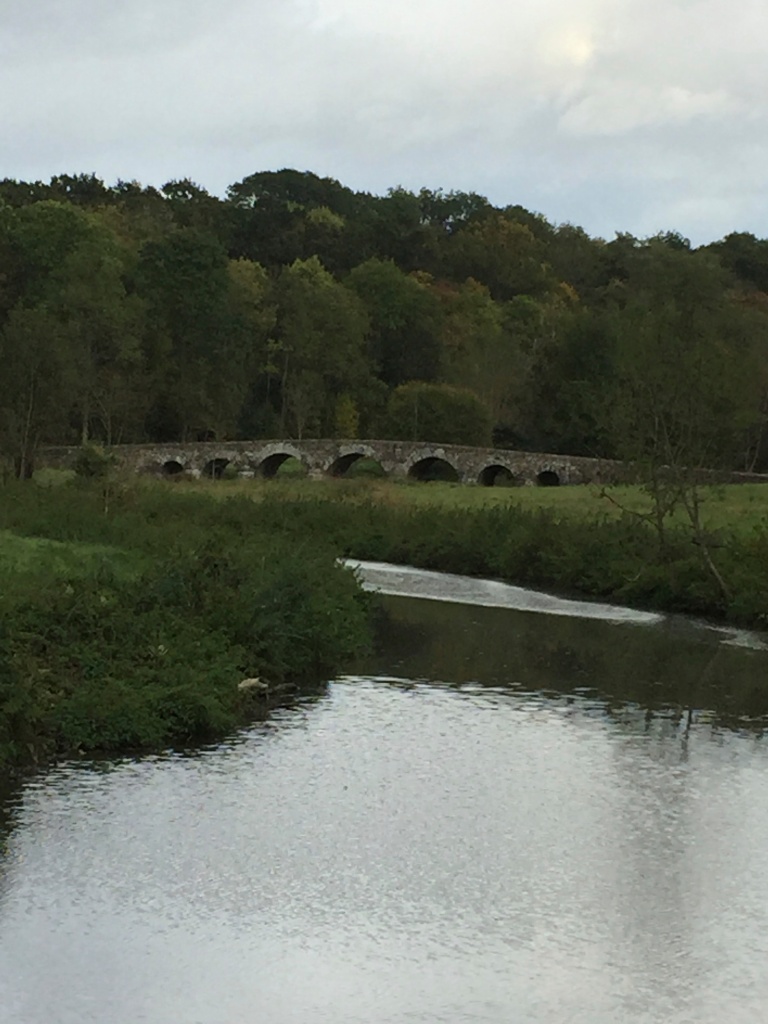 View to the West along the canal.
View to the West along the canal.
The path around the garden then splits and takes you up through drooping avenues of plane trees towards the statue of Hercules – rather staggeringly Hercules is nearly 2 miles away from the front entrance to the house.

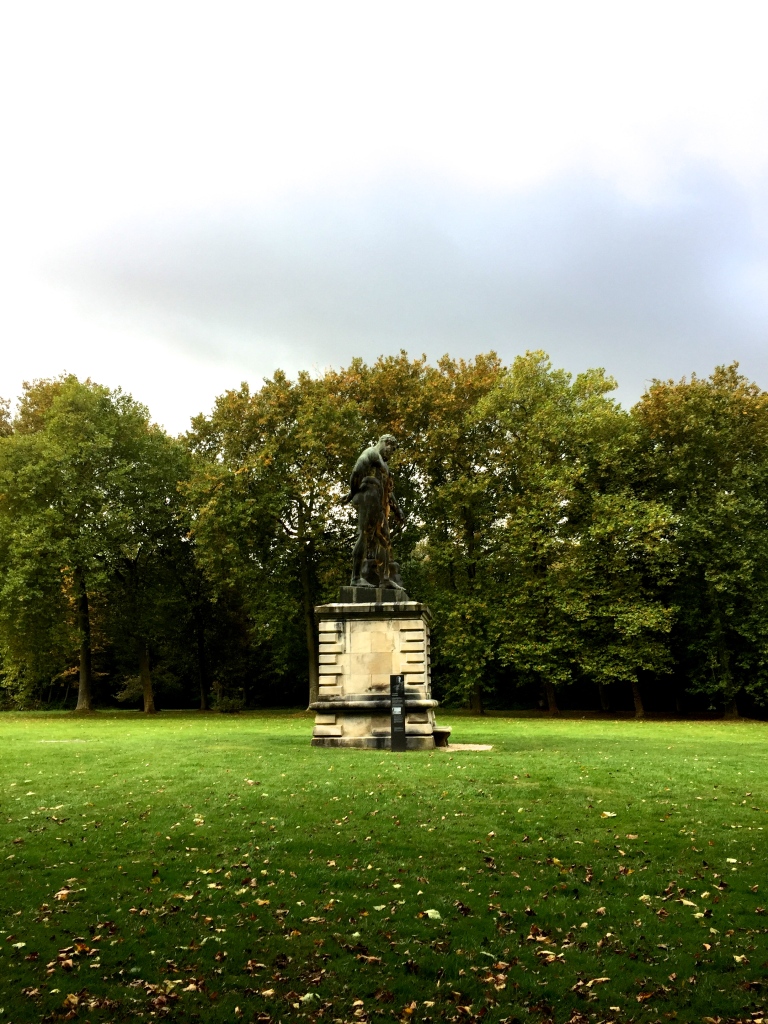
Hercules at the top of the hill at the centre of an avenue of drooping plane trees.
Hercules was a 19th century addition by Alfred Sommier who bought Vaux-leVicomte in 1875 and spent his lifetime and much of his fortune restoring house and garden. His descendants, the de Vogüé family, still live in the château buildings and run the place passionately, which explains why Vaux feels warmer and more intimate than its state run rivals. Over the winter of 2017 the bronze Hercules will be gilded once more to add another layer of lure and sparkle to this extraordinary garden.
I would love to return and spend more time exploring the garden. On this visit I am invited to whiz around in one of the Vaux-le-vicomte golf buggies and although time is tight (and some nameless people naturally derive a ridiculous amount of pleasure from driving the buggy around the slightly lethal/steep pathways ) I would love to spend another day here, in the Spring with a picnic, and maybe a bike, to do things at an easier pace with time to discover the wilder parts, to appreciate the deft and shifting balance of stone, water, topiary, perhaps even to return to see the fortnightly Water Show – when fountains and cascades are switched on for a couple of spectacular hours. I find myself extremely excited by the idea of the whole thing taking place with no electricity, just brilliant engineering and the pull of gravity.

Horse Chestnut trees in bloom at Vaux-le-Vicomte. Photograph by Bruno Ehrs from the book A day at Château de Vaux-le-Vicomte by Alexandre, Ascanio and Jean-Charles de Vogüé.
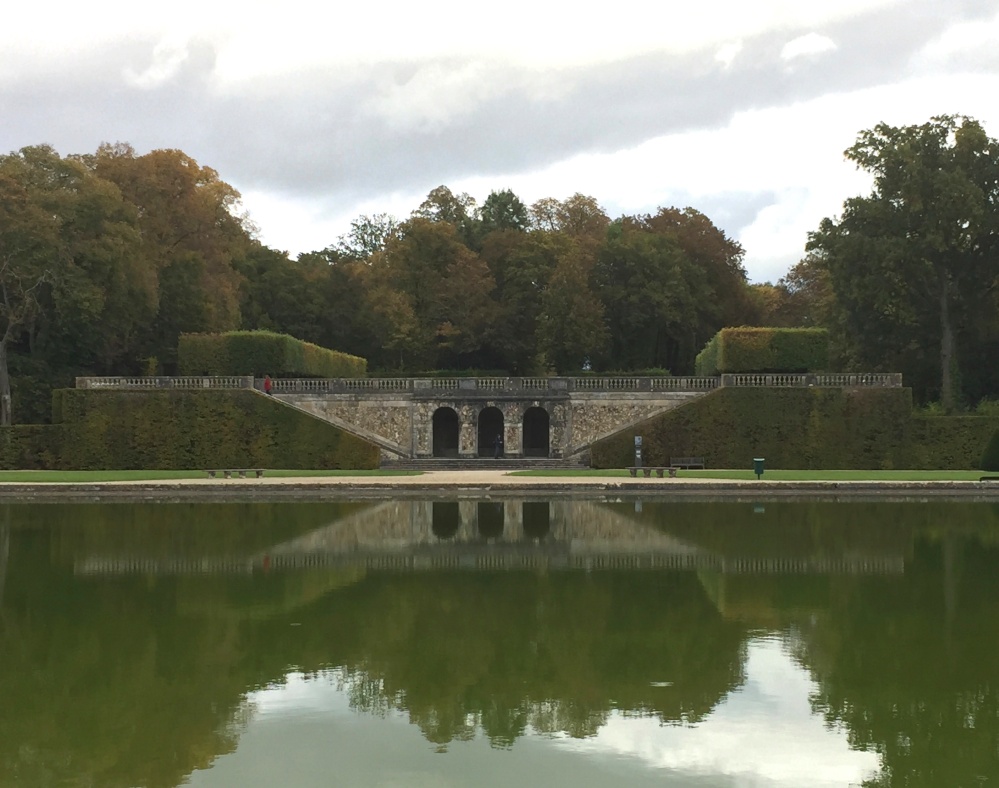 Stone and topiary across water.
Stone and topiary across water.
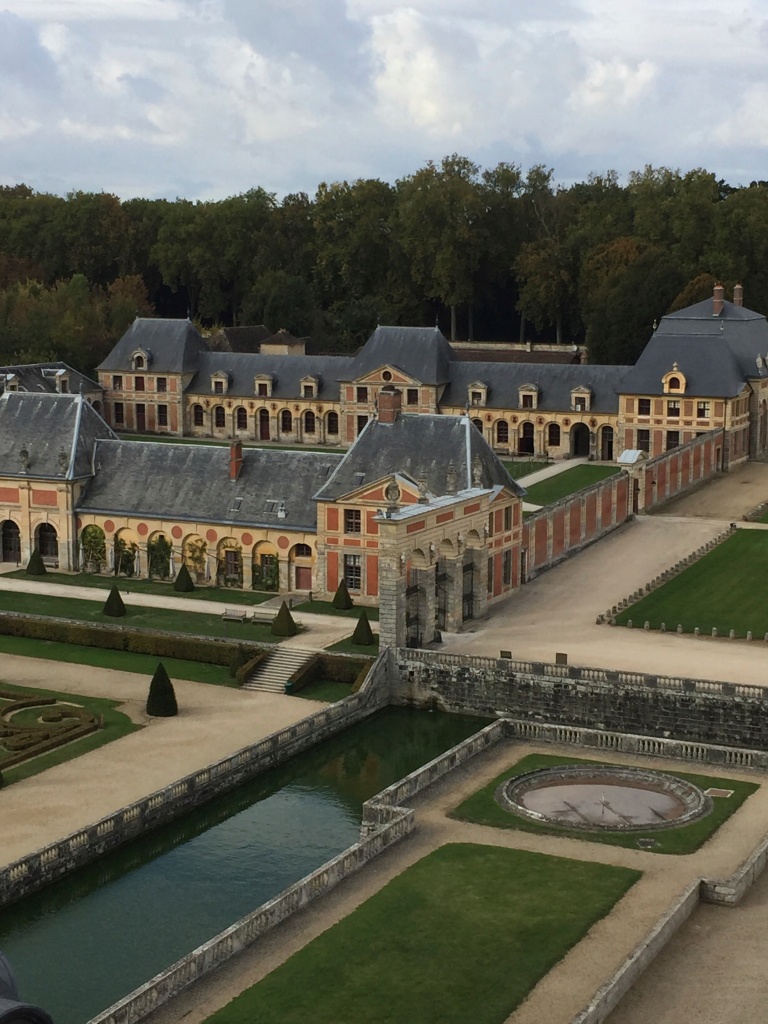 The moat and outbuildings seen from the top of the château.
The moat and outbuildings seen from the top of the château.
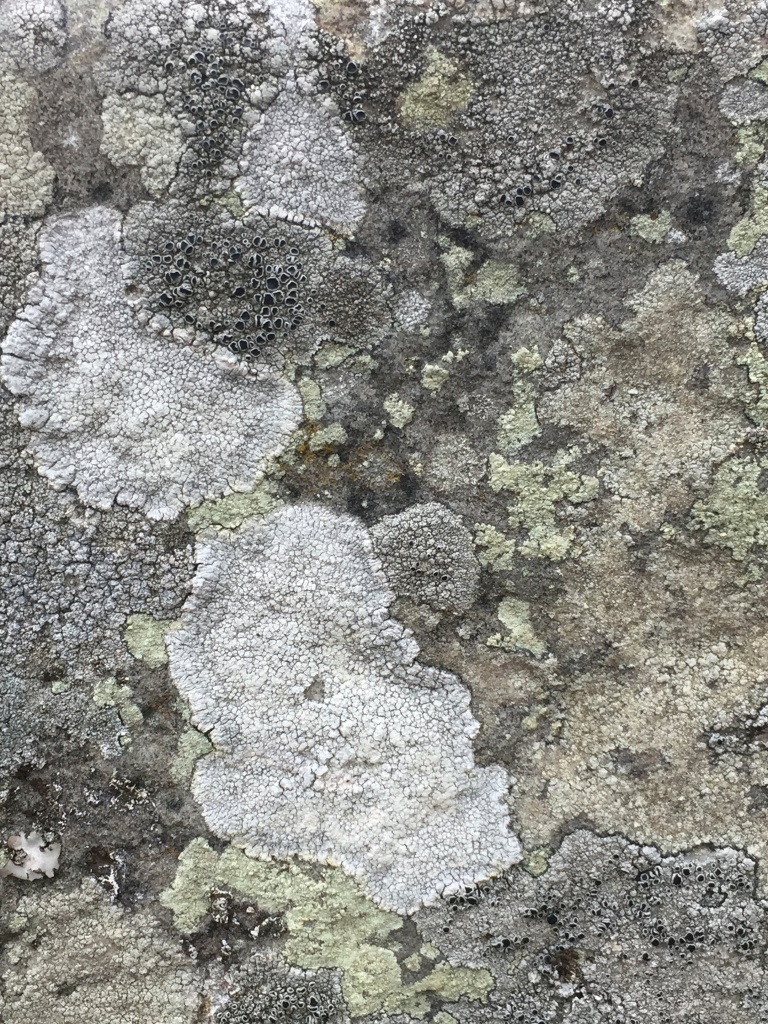 Lichen on a stone balustrade.
Lichen on a stone balustrade.
I would love to come back too to see the filled urns and flower parterres (to the right of the garden as you look down towards the canal) at their height in summer. Here is a golf-buggy-hazy October impression of the flower parterre:
 And here is a photograph of the slightly lost and curious-looking pelargoniums in diminutive pots (well diminutive in such an enormous space) – could there be another approach, I wonder, to this kind of border planting once the resoration to interior painting and garden statuary is complete?
And here is a photograph of the slightly lost and curious-looking pelargoniums in diminutive pots (well diminutive in such an enormous space) – could there be another approach, I wonder, to this kind of border planting once the resoration to interior painting and garden statuary is complete? Curiously small pots of pelargoniums next to the broderies parterre.
Curiously small pots of pelargoniums next to the broderies parterre.
But it is Mathieu Lespagnandel’s statue personifying the Anquiel River which runs through the estate which brings me back to Juilan and Isabel Bannerman:
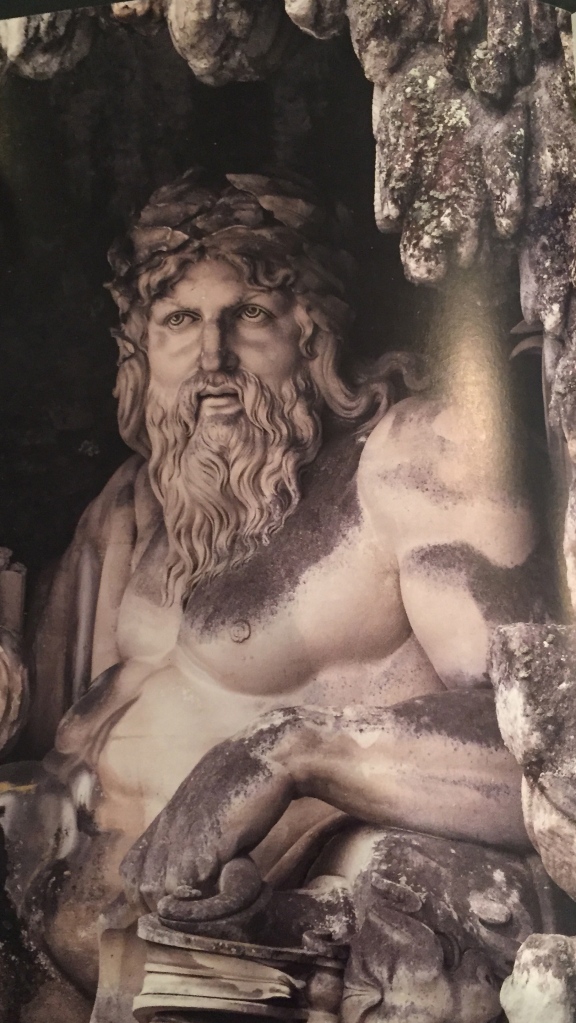 Mathieu Lespagnandel’s statue personifying the Anquiel River, photograph by Bruno Ehrs from the book A day at Château de Vaux-le-Vicomte by Alexandre, Ascanio and Jean-Charles de Vogüé.
Mathieu Lespagnandel’s statue personifying the Anquiel River, photograph by Bruno Ehrs from the book A day at Château de Vaux-le-Vicomte by Alexandre, Ascanio and Jean-Charles de Vogüé.
The statue transports me powerfully to the image I have just been looking at of the beautiful, muscly Rother God sculpture constructed of bath stone and Whitstable oyster shells by Tom Verity as part of a Bannerman scheme for Simon Sainsbury and Stewart Grimshaw at Woolbeding.

Tom Verity’s Rother God (bath stone and oyster shells) for Woolbeding, photograph from Landscape of Dreams by Isabel and Julian Bannerman.
Isabel and Julian’s verdict on the woodland garden there, particularly the area around the painted Gothic pavilion designed by Pip Jebb, was that it ‘lacked mystery and needed ‘lifting’. Lightness of touch is an intangible quality, something we all always seek to achieve and can never be sure of finding’. The Bannerman proposal was to dramatically cut away the river leading up to the pavilion so that the house would sit on a cliff and ‘for the entrance we lighted upon the idea of a raggedy ruin, a whisper of Northanger Abbey, fragments in the grass, a gothic portal and tracery window’. There followed a thatched rustic hut intricately lined with hazel wands and fir cones, an ‘oozing fountain’ of tufa, a swooping chinese bridge in a rich yellow (to replace the ‘sticky chocolate brown things they had chosen in haste and regretted at leisure’) and an uplifting, contemporary, almost mediterranean garden for National Trust visitors at the house entrance.



Images of the Rother God, Pip Jebb Gothic Pavilion, Tufa Fountain and yellow Chinese Bridge at Woolbeding from Landscape of Dreams by Isabel and Julian Bannerman.
I love Isabel’s storytelling about the way the Bannerman approach to gardens – and indeed houses – has evolved and become an unstoppable way of life. Falling in love with old, derelict, houses has been a long standing addiction. Julian’s first major purchase was a 1727 crumbling pile, The Ivy. The great age of the house ‘sparked in Julian and, later me, a crush on the formal gardens of England, Holland and France in the 17th century, the canals and terraces in Kip’s birds-eye engravings which were heartlessly, ruthlessly rooted out by Capability Brown’. The challenge involved in rescuing such a demanding building ‘appealed to all Julian’s natural love of the underdog and glamour’ and their priorities will always be upside down in the eyes of some. Their great friend, David Vicary, described Julian as impulsive saying it was ‘impetuous for the impecunious’ to plant ‘two avenues of lime trees’ when there was ‘barely a flushing lavatory on the premises’. It was the same friend who ‘taught that nothing is new, nothing is original and nothing comes wholly formed from the imagination. It is all observed and logged and then drawn on and altered, adapted or amended to a particular situation.’ Drawing constantly on all they have learnt, their goal is to create quiet settled spaces – ‘we like the kind of dreamy ‘left alone’ quality that allows the garden and the person in it to be.’
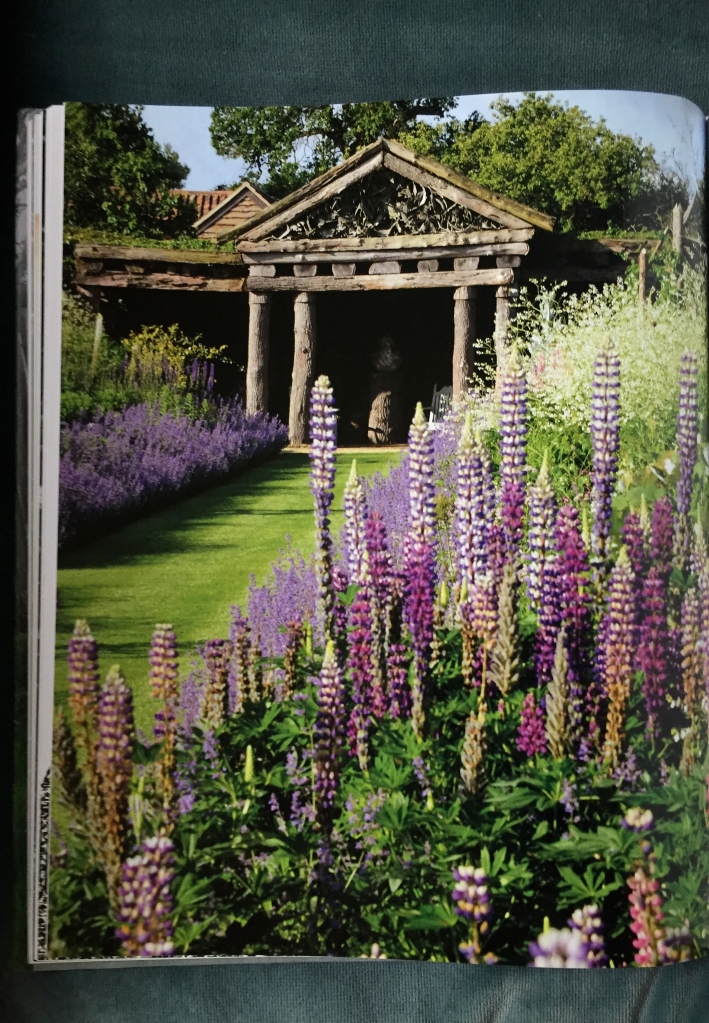

The Antler Temple at Houghton Hall from Landscape of Dreams by Isabel and Julian Bannerman.
After the absorption of history comes the need to make and invent. The temples at Highgrove were inspired as much by Ian Hamilton Finlay’s Little Sparta as by a souvenir cork model of the Temple of Concord, Agrigento, Sicily which they had bought in the visitor’s car park. Scouring for old building materials or the right plant requires a constant eagle eye – they spotted the spreading fifty year old mulberry tree for their 1994 Chelsea garden driving back from a Sunday lunch with Julian’s parents, their car full of young children. A small but perfect example of their tirelessness and attention to detail is their solution for a 70th birthday present for Paul Getty, for whom they had been ambitiously and painstakingly transforming a garden in the Chilterns. ‘At a loss for a present we gave him seventy little oak seedlings in a box which we had grown from acorns picked from the veteran oak at Hanham Court, a tree under which James II had dined on venison in an act of reconciliation with the owners following a misunderstanding during the Monmouth Rebellion’.
And at its best, despite the hard work, they manage to make making gardens tremendous fun. ‘Building Euridge’ (for Jigsaw founder, John Robinson) ‘was probably the happiest thing we have ever done. It involved many children, dogs, stonemasons, chippies, hippies, builders and project managers, drinking, dancing, fancy dress, head-scratching, problem solving …’ or at Highgrove ‘The Prince himself would sneak out whenever possible and help, chat, despair of Julian’s Coca-Cola drinking and send for tea and sandwiches to be shared by everyone among the roots’.
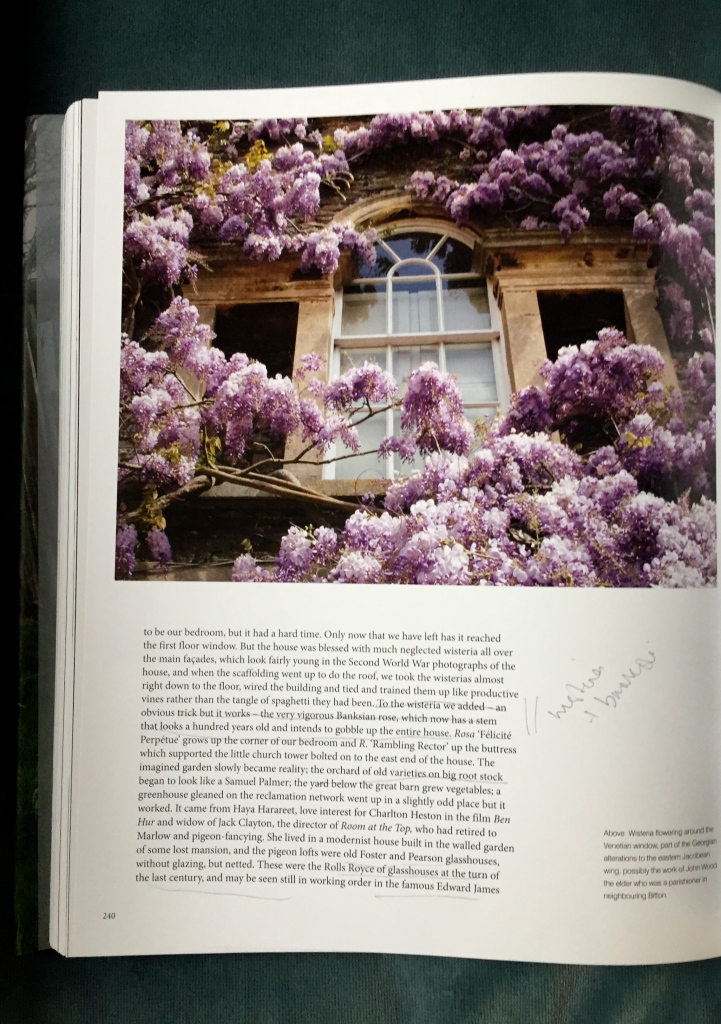 Wisteria against the house wall at Hanham Court from Landscape of Dreams by Isabel and Julian Bannerman.
Wisteria against the house wall at Hanham Court from Landscape of Dreams by Isabel and Julian Bannerman.
But the pair’s approach to planting, their deeply knowledgeable, tried and tested, passionate understanding of how plants work together to create atmosphere is perhaps the most uplifting element in the book. I remember visiting Hanham Court near Bristol whilst the Bannermans still lived there. It was possibly the only time I have been truly blown away by the scent of wisteria which hit you as you entered the garden through a darkened gateway and stepped into the sunshine under the south facing walls of the house which was completely smothered in the most voluptuous purple flowers. I remember fantastic, simple, but astonishingly effective, combinations of yew mounds, Euphorbia characias, Iris pallida subsp. pallida and Erysimum Bowles Mauve, and elsewhere yew, Iris pallida subsp. pallida, with the silvery Eryngium bourgatii. I remember being introduced to their new passion, the yellow magnolia (I am now completely hooked), I remember the louche, comfortable, faded Riviera feel of the planting and ‘ruined’ buildings around the swimming pool and, most of all, I remember a deep romantic enthusiasm for a certain kind of enduring English garden plant (NB my copy of the book is already covered in notes).
 Yew, Iris pallida subsp. pallida, Hanham Court from Landscape of Dreams by Isabel and Julian Bannerman.
Yew, Iris pallida subsp. pallida, Hanham Court from Landscape of Dreams by Isabel and Julian Bannerman.
 The swimming pool Hanham Court, from Landscape of Dreams by Isabel and Julian Bannerman.
The swimming pool Hanham Court, from Landscape of Dreams by Isabel and Julian Bannerman.
There is huge generosity here and so much to learn – why Isabel will choose Noisette roses for a house wall ‘because they are long-flowering, tend to be exquisitely scented and have a great ‘garlanded’ quality forming natural swags of flowers ‘and how they might use ‘ferns, ash sapling, ivy, primroses, cowslips, rambling roses, valerian and acanthus’ to create an ancient feel to a newly built structure. Do not dismiss her throw away description of the outer ring of the Rose Garden at Houghton Hall ‘mixed Sissinghurst-like planting, shrubs and shrub roses underplanted with delights. Just the usual favourites, philadelphus, lilac, old fashioned roses washed about with pinks and aquilegias’ – it is this insistence on plants like philadelphus, lilac and old fashion roses (and plenty of them) to make a garden feel lived in, that can be too often missed in the more calculated contemporary planting plan. Isabel describes visiting ‘Queen of Hellebores, Helen Ballard’ where they learnt about north-facing borders and the winning combination of snowdrops, hellebores and species peonies. For Houghton Hall they are keen to create ‘a peony border mixed with regale lilies, a pairing we had seen in Vaux-le-Vicomte and vowed to reproduce’.
And so we are back at Vaux where I feel that the current châtelaine, the ever glamorous Comtesse de Vogüé, has not a little in common with Julian Bannerman and his pleasure in high standards, celebration of the past and the all round delight of living.
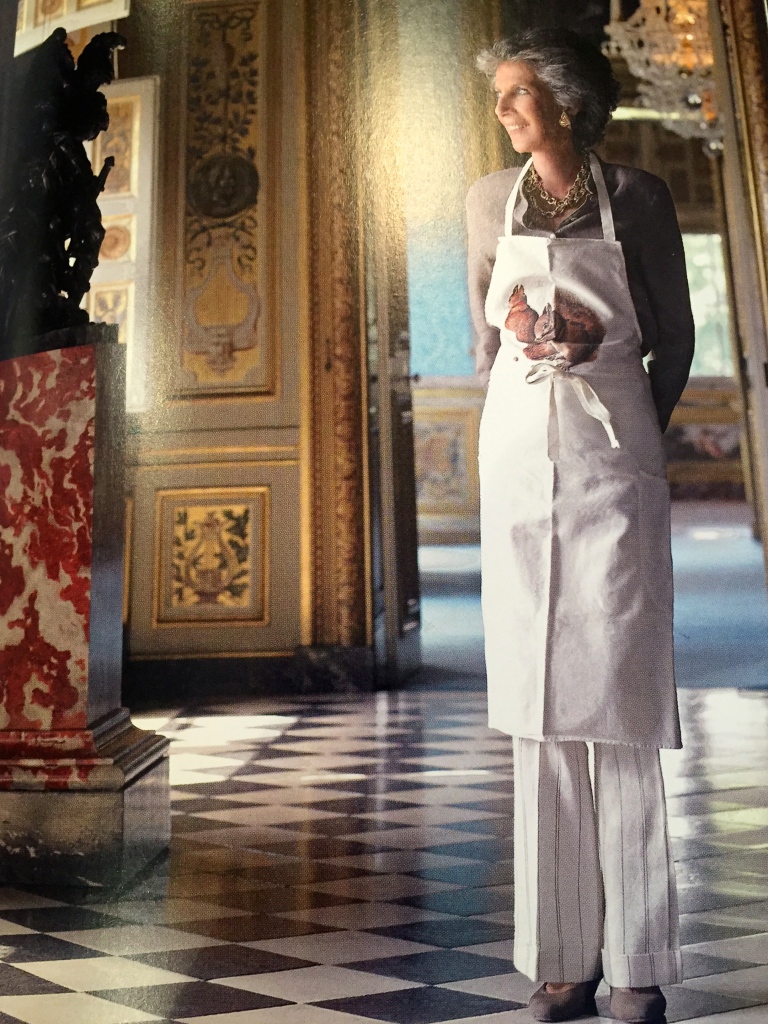 The Comtesse de Vogüé in the black and white tiled Grand Salon at Vaux-le-Vicomte. Photograph by Bruno Ehrs from the book A day at Château de Vaux-le-Vicomte by Alexandre, Ascanio and Jean-Charles de Vogüé.
The Comtesse de Vogüé in the black and white tiled Grand Salon at Vaux-le-Vicomte. Photograph by Bruno Ehrs from the book A day at Château de Vaux-le-Vicomte by Alexandre, Ascanio and Jean-Charles de Vogüé.
 The Comtesse de Vogüé’s Floating Island with Pink Pralines and Green Tea Custard – a family recipe. Photograph by Bruno Ehrs from the book A day at Château de Vaux-le-Vicomte by Alexandre, Ascanio and Jean-Charles de Vogüé.
The Comtesse de Vogüé’s Floating Island with Pink Pralines and Green Tea Custard – a family recipe. Photograph by Bruno Ehrs from the book A day at Château de Vaux-le-Vicomte by Alexandre, Ascanio and Jean-Charles de Vogüé.
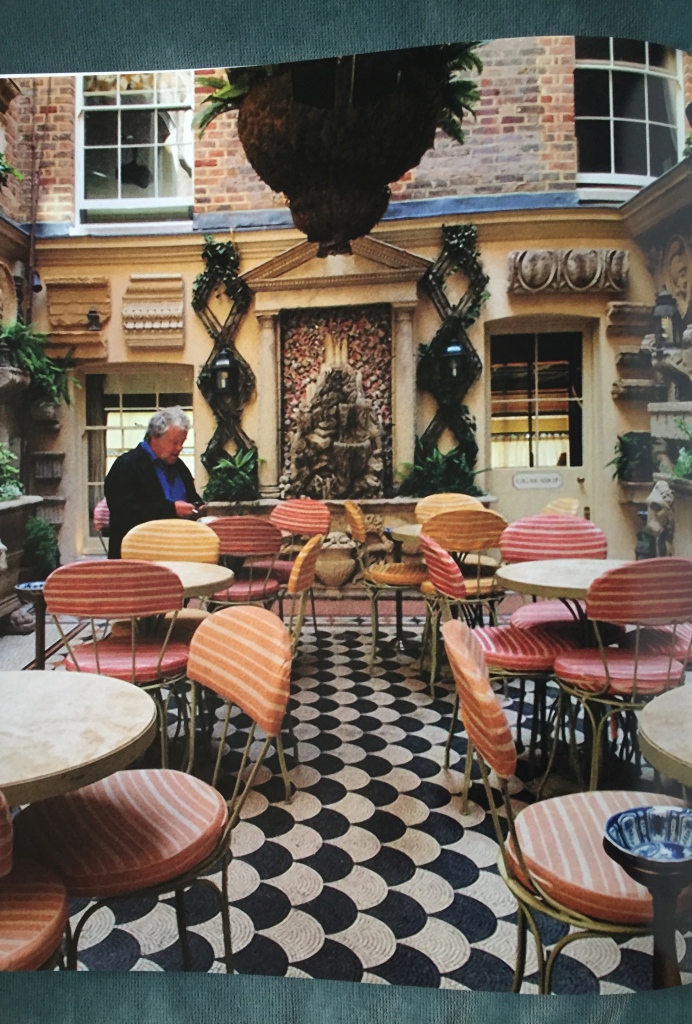
Julian Bannerman in the Smoking Garden with black and white tiled floor and shell fountain they designed for ‘private members’ establishment’, 5 Hertford Street. From Landscape of Dreams by Isabel and Julian Bannerman.
My second bet is that this splendidly outrageous scene from the Bond movie Moonraker, with the elegant Vaux-le-Vicomte as a backdrop, has all the theatrical, fun, immaculately executed ingredients to please Julian and Isabel Bannerman immensely.

Scene from Moonraker, shot at Vaux in 1978 with Roger Moore playing James Bond, Photograph from the book A day at Château de Vaux-le-Vicomte by Alexandre, Ascanio and Jean-Charles de Vogüé.

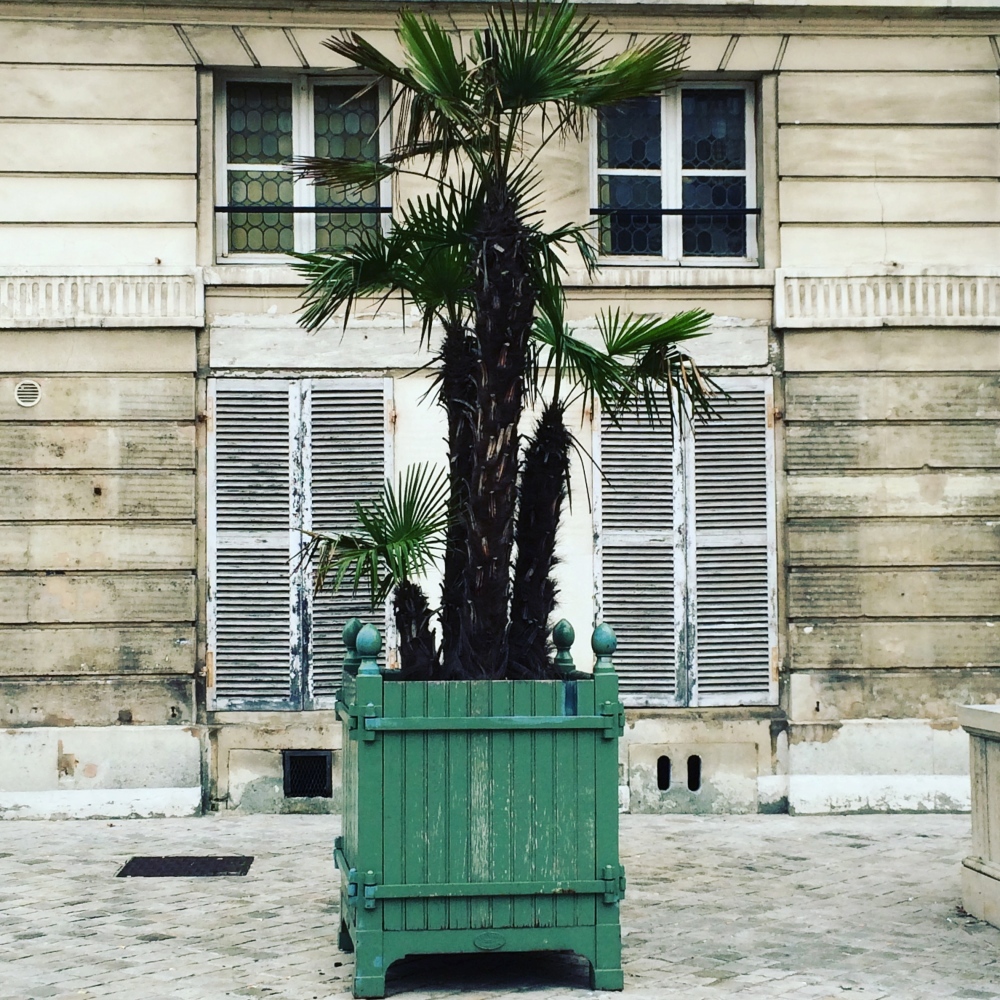
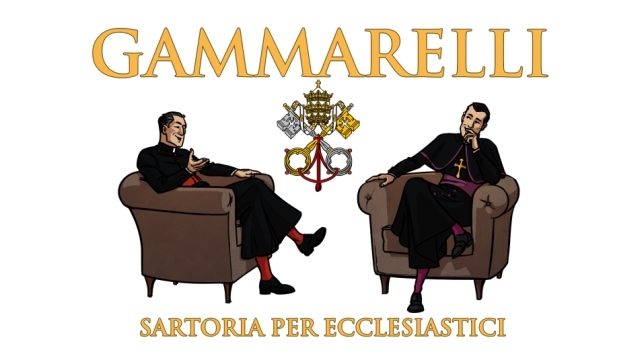
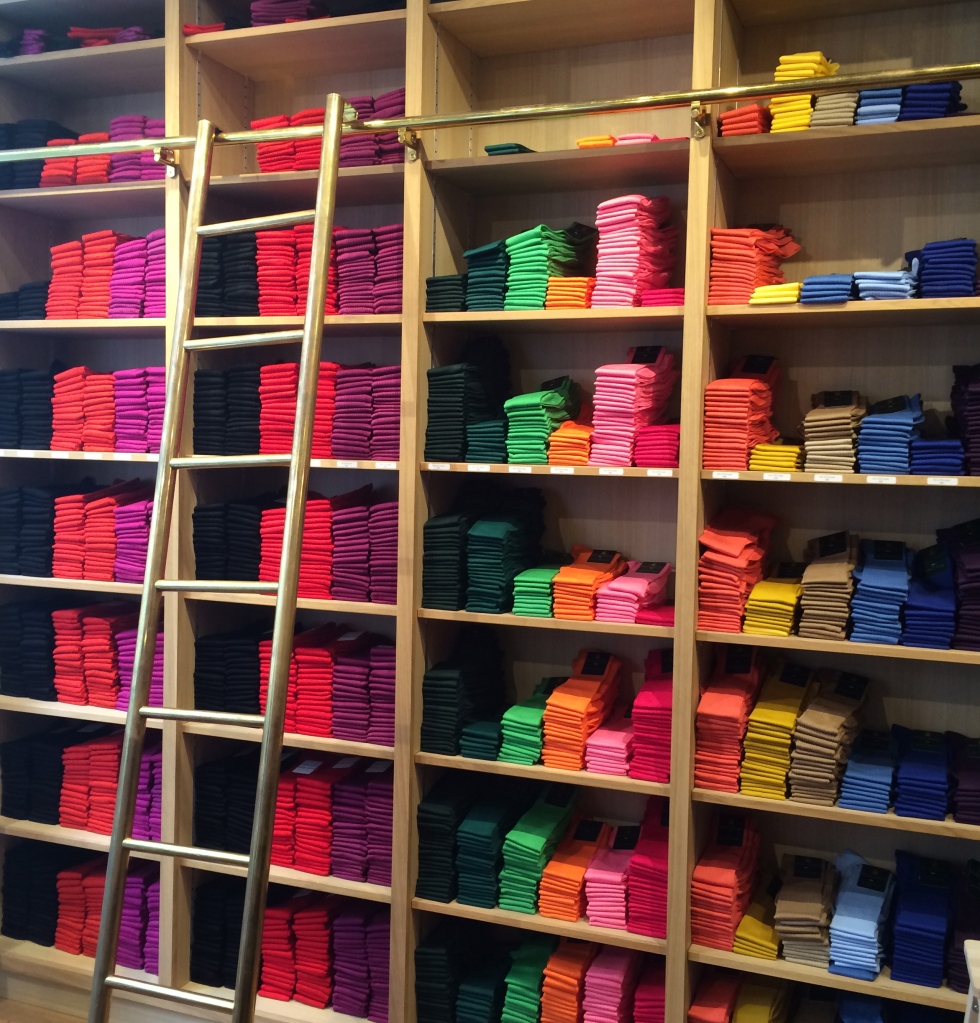
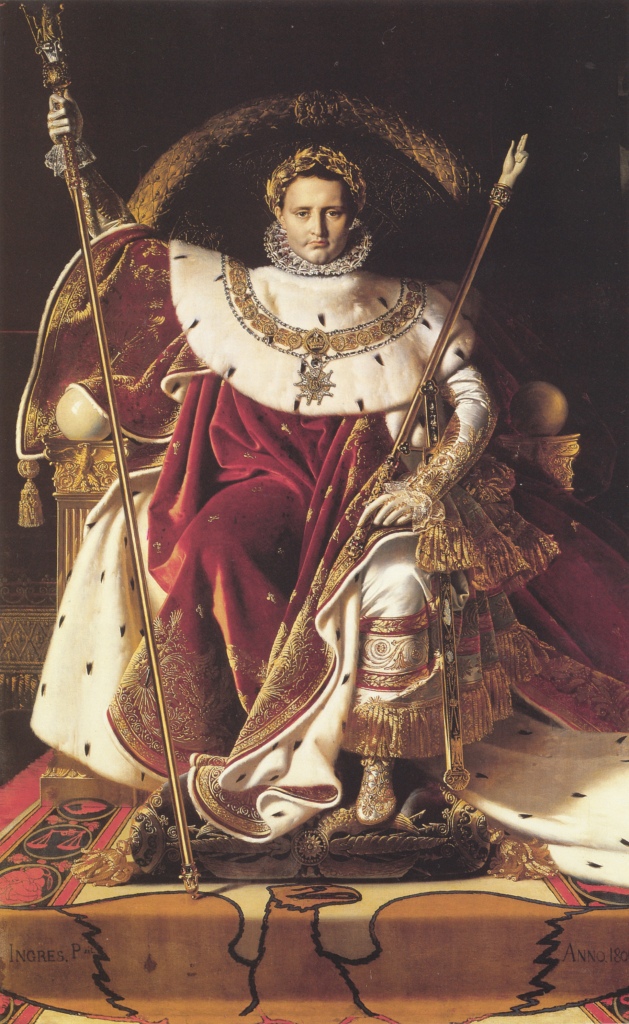
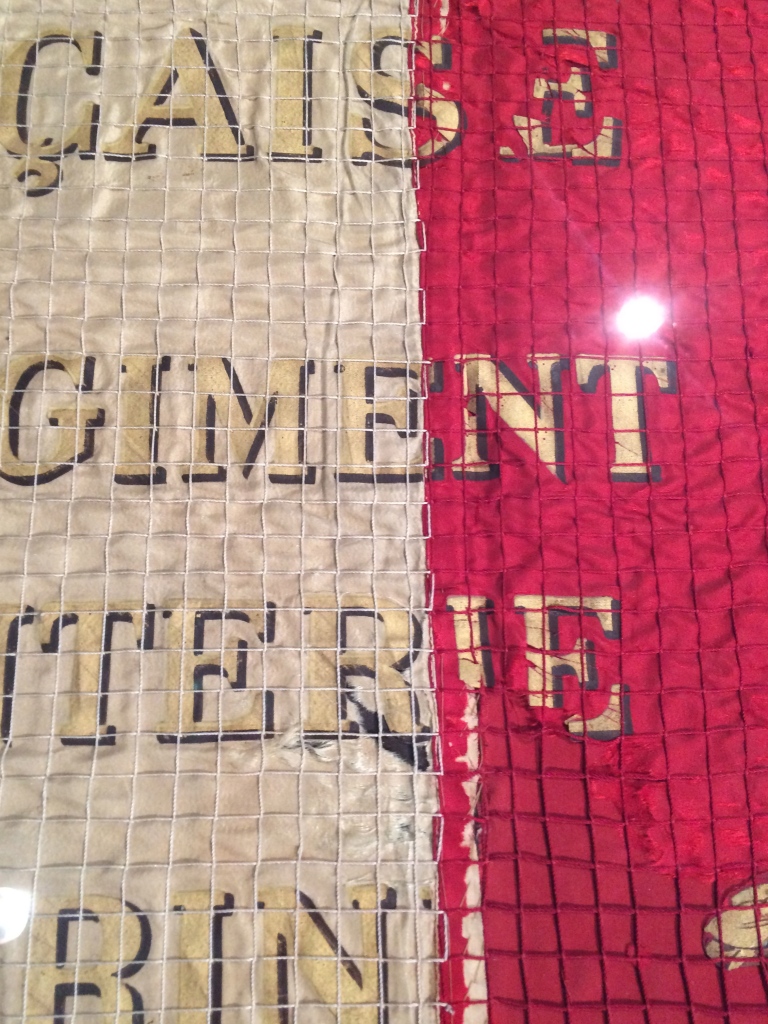
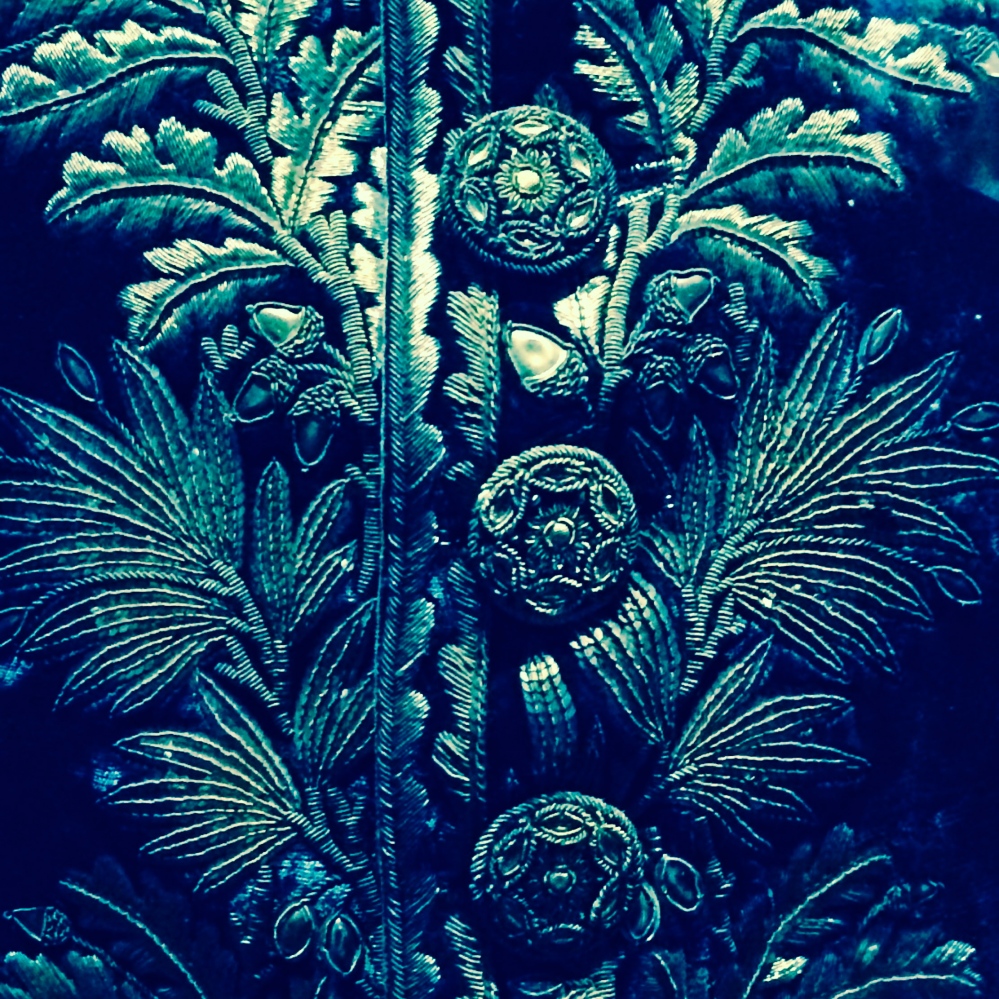 Detail of oak leaf embroidery in gold thread, late 18th Century French uniform
Detail of oak leaf embroidery in gold thread, late 18th Century French uniform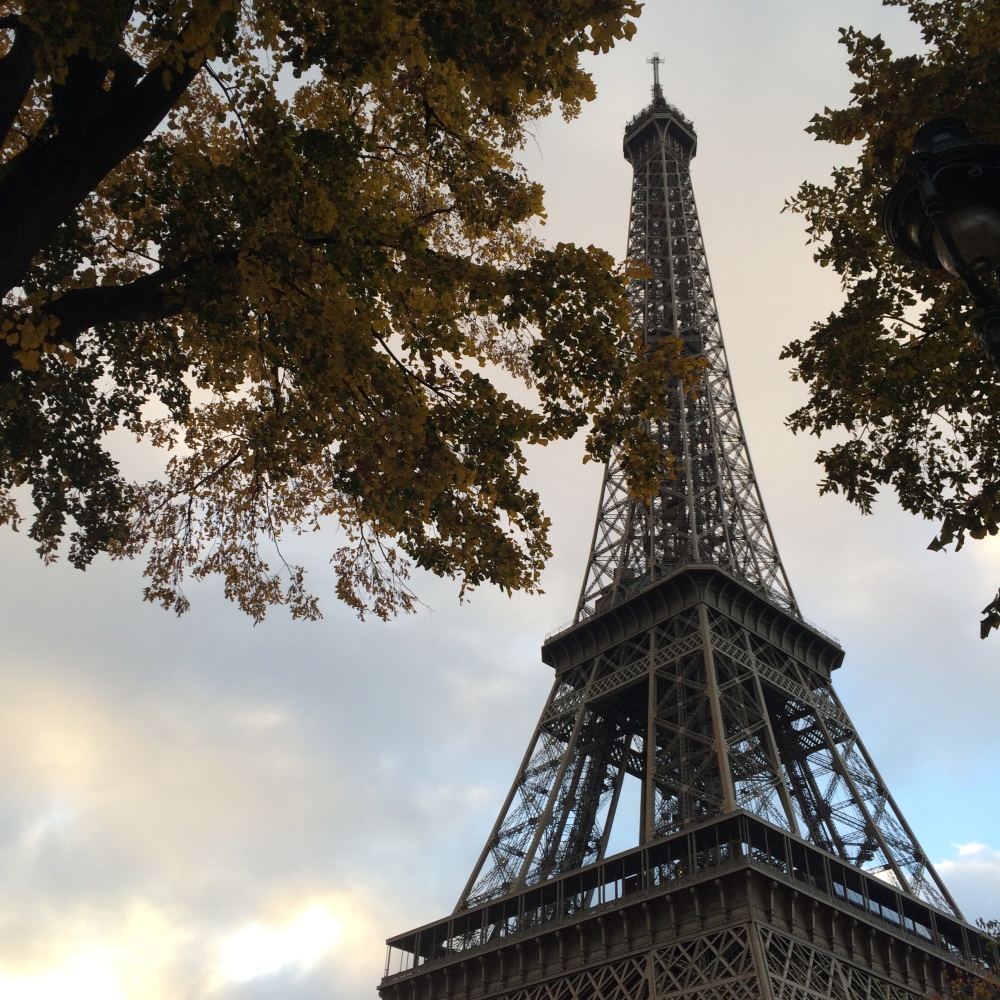 Eiffel Tower, late October, late afternoon
Eiffel Tower, late October, late afternoon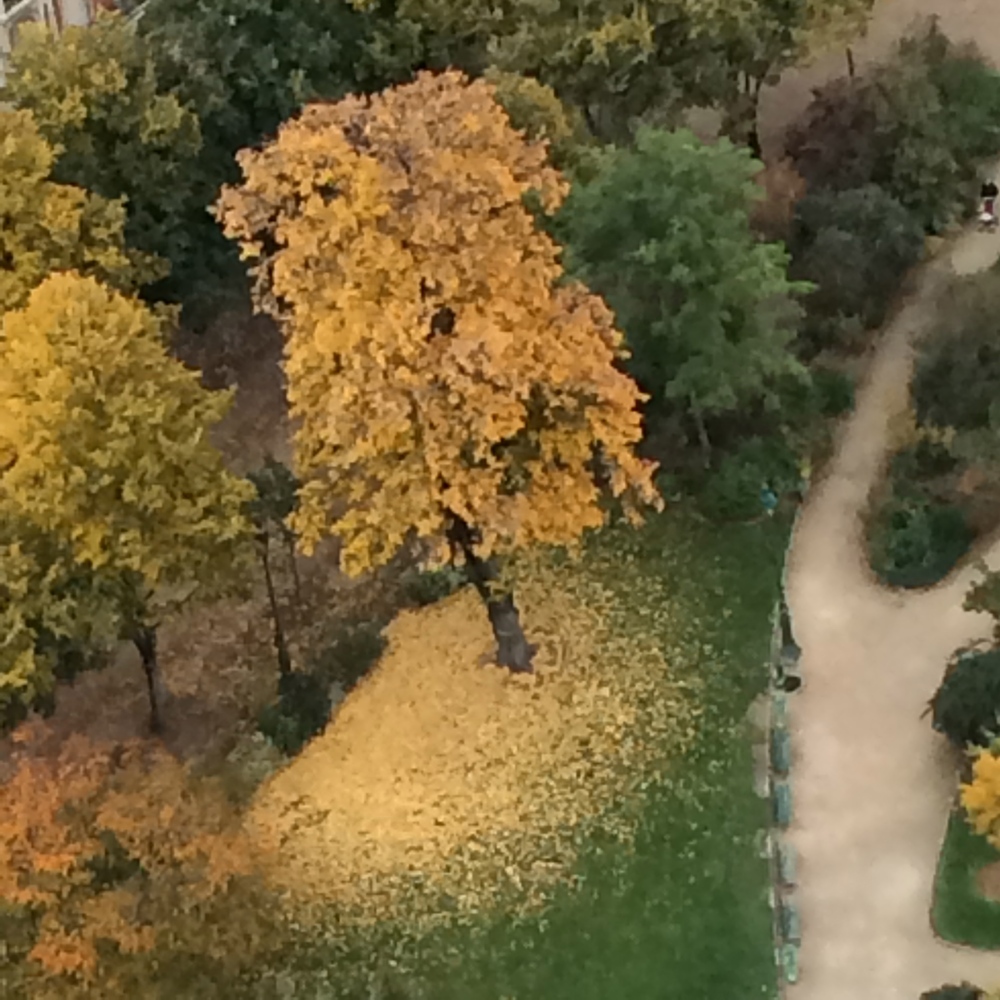
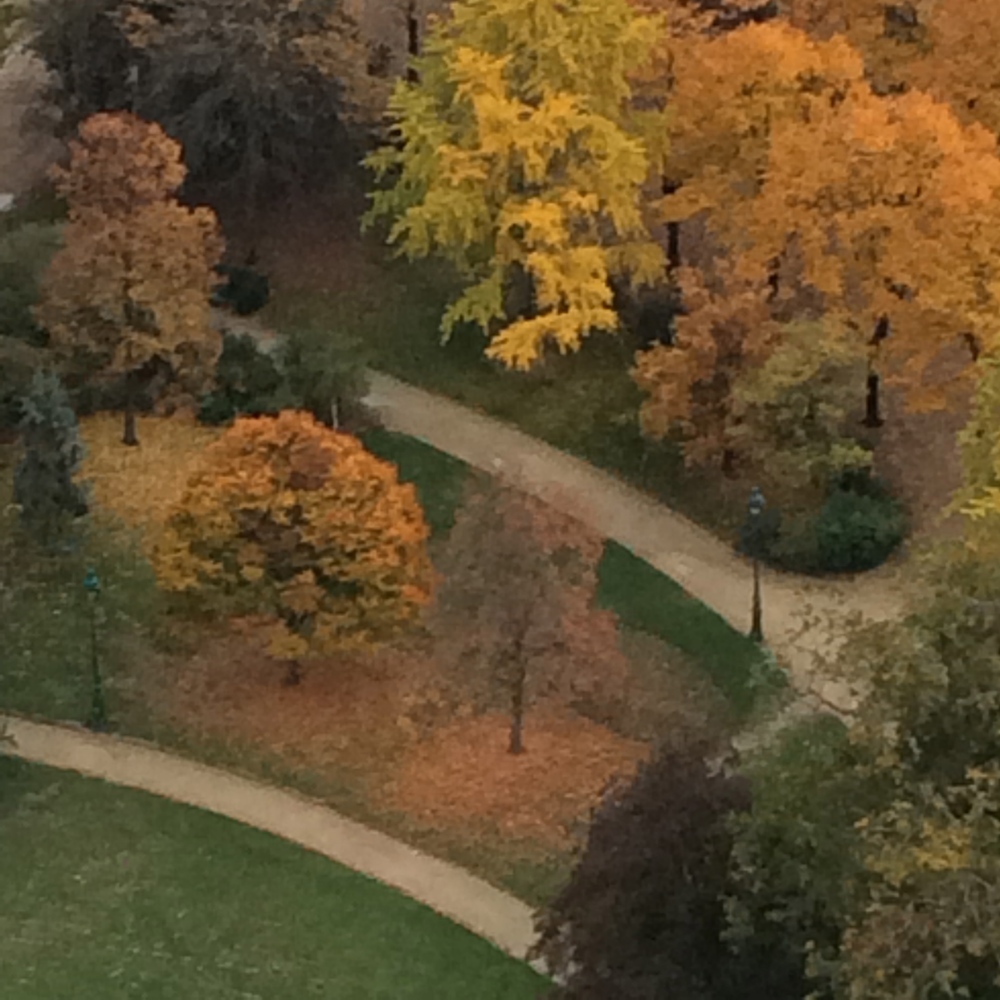
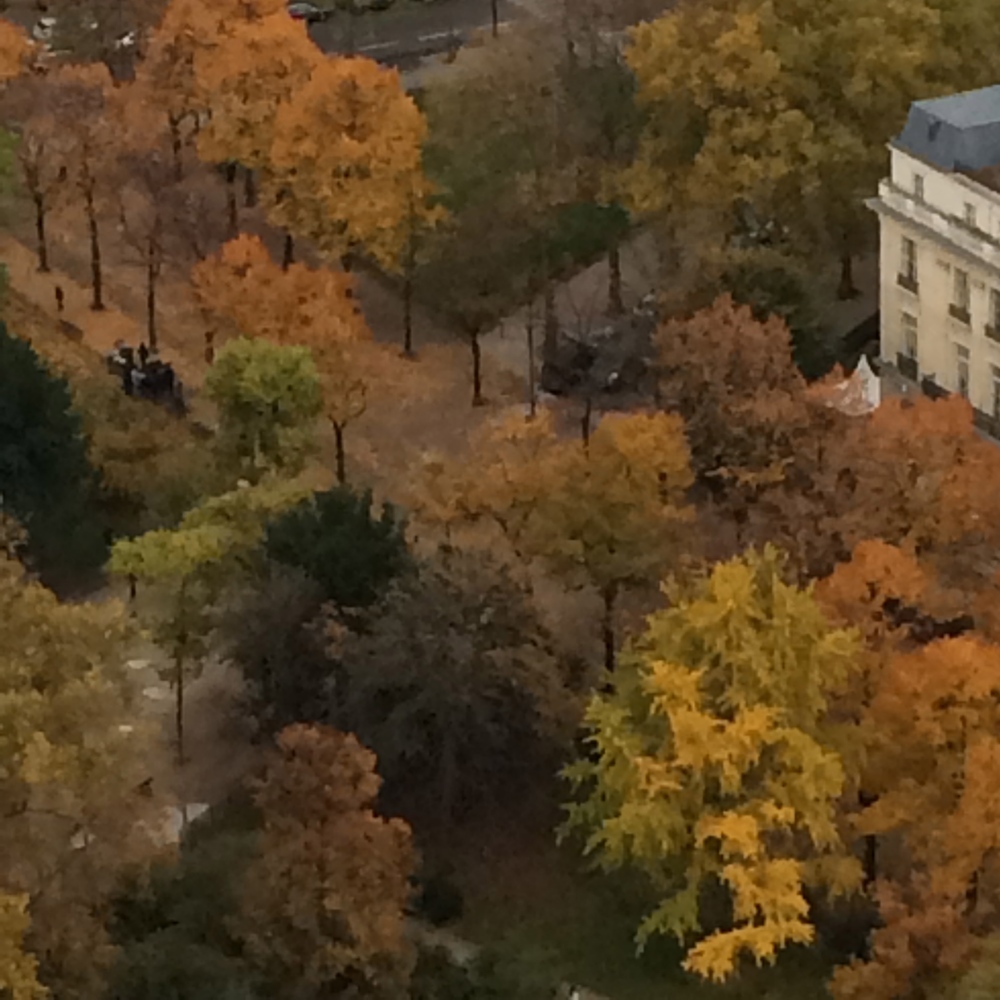 Autumn colour along a network of pale paths viewed from the Eiffel Tower
Autumn colour along a network of pale paths viewed from the Eiffel Tower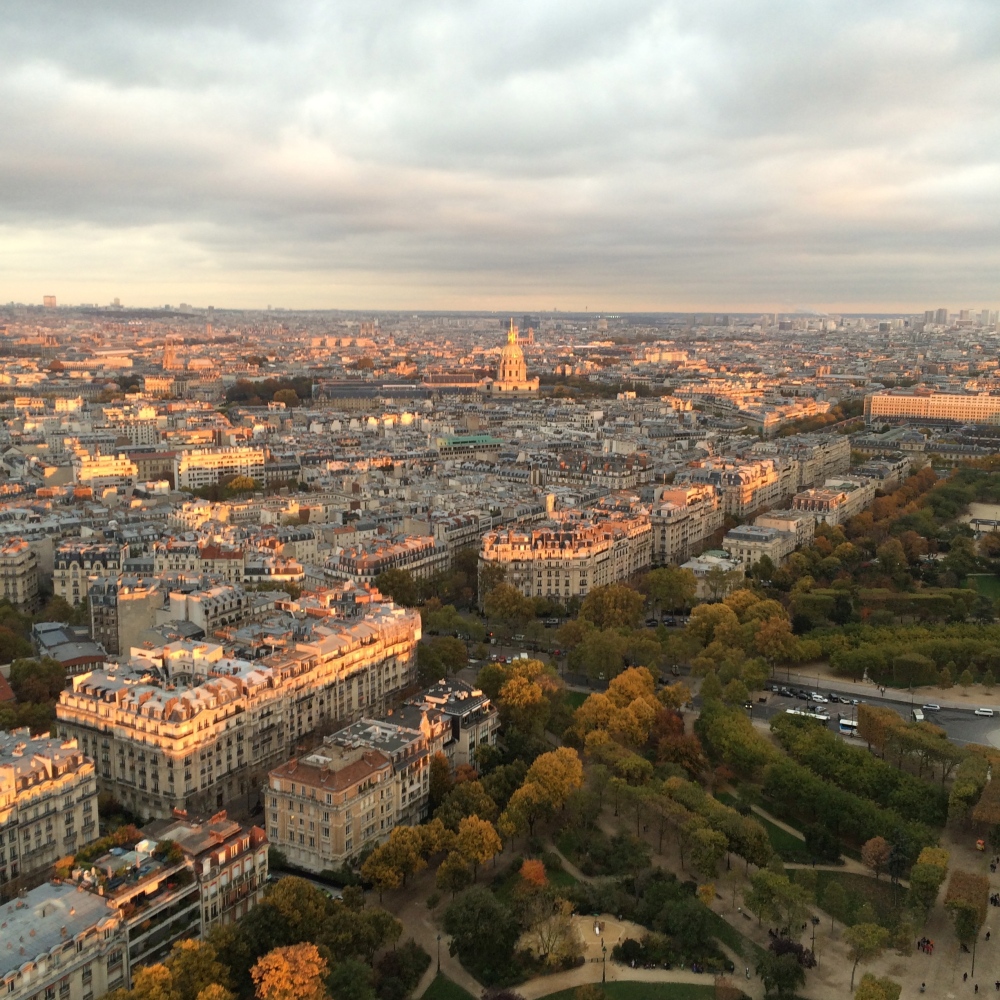 Sunset over Paris, October 2015
Sunset over Paris, October 2015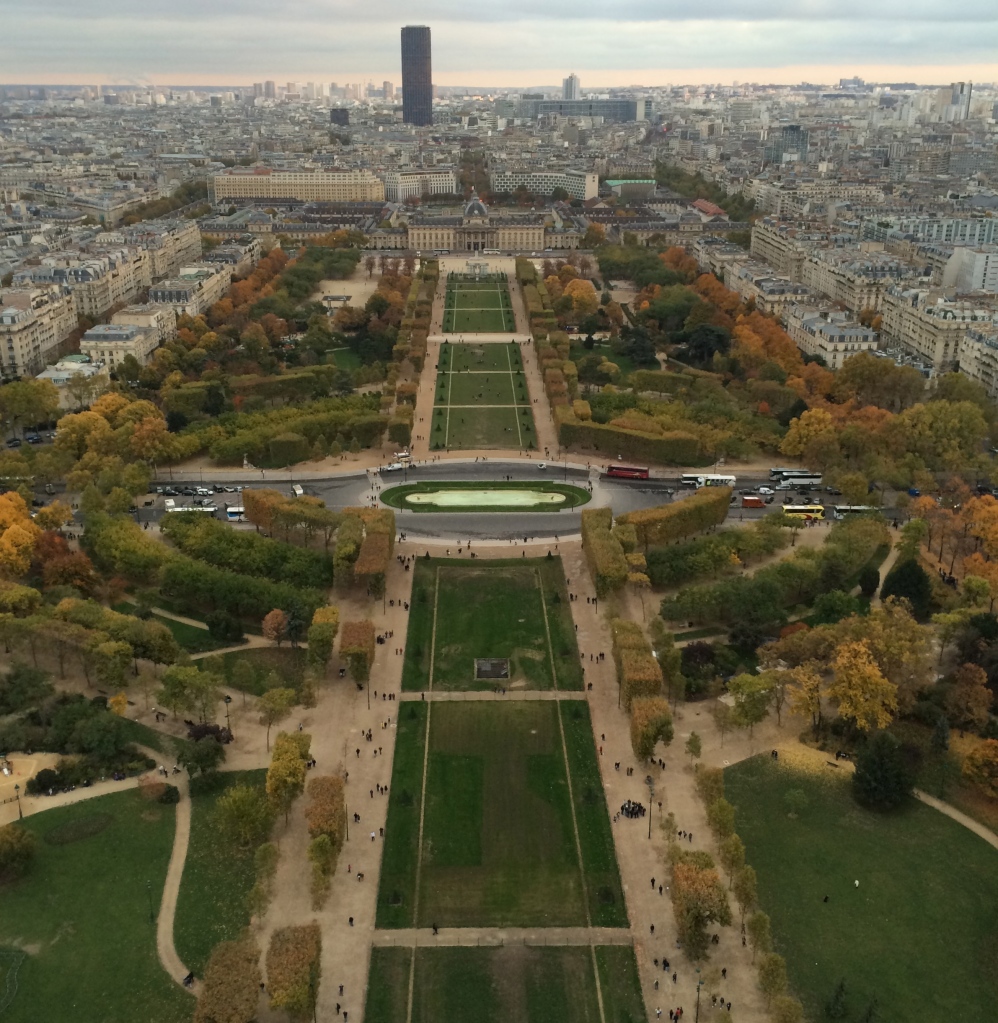 I love the pearly green of the elliptical central pool and the way the soft light of the water seems to fragment into sophisticated pockets of glowing green light as darkness falls:
I love the pearly green of the elliptical central pool and the way the soft light of the water seems to fragment into sophisticated pockets of glowing green light as darkness falls: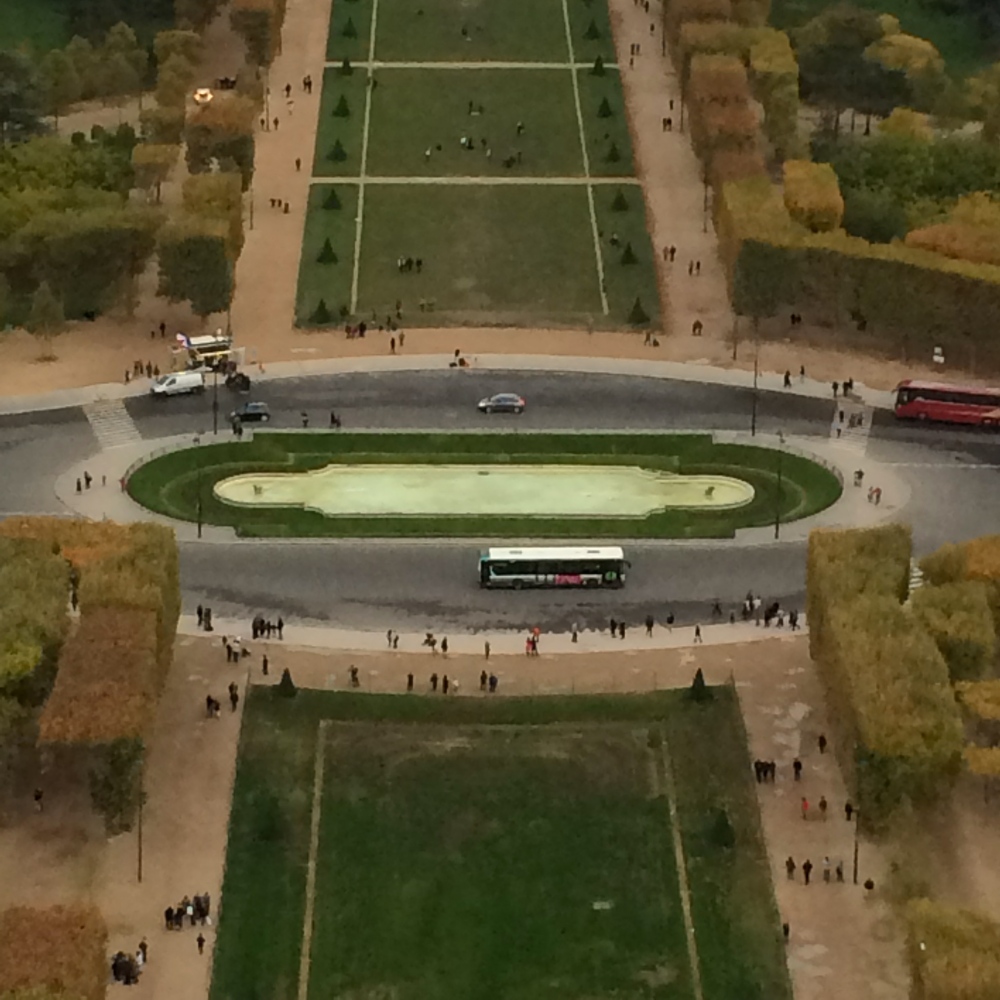 The milky green of the elliptical pool, Le Champ de Mars
The milky green of the elliptical pool, Le Champ de Mars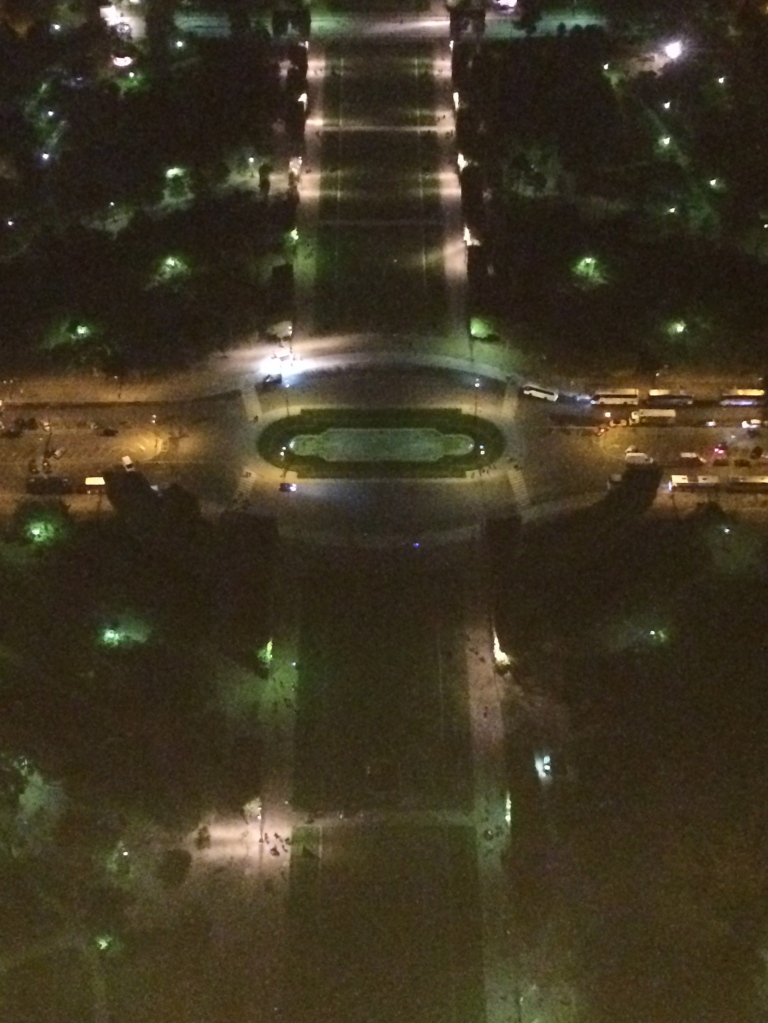
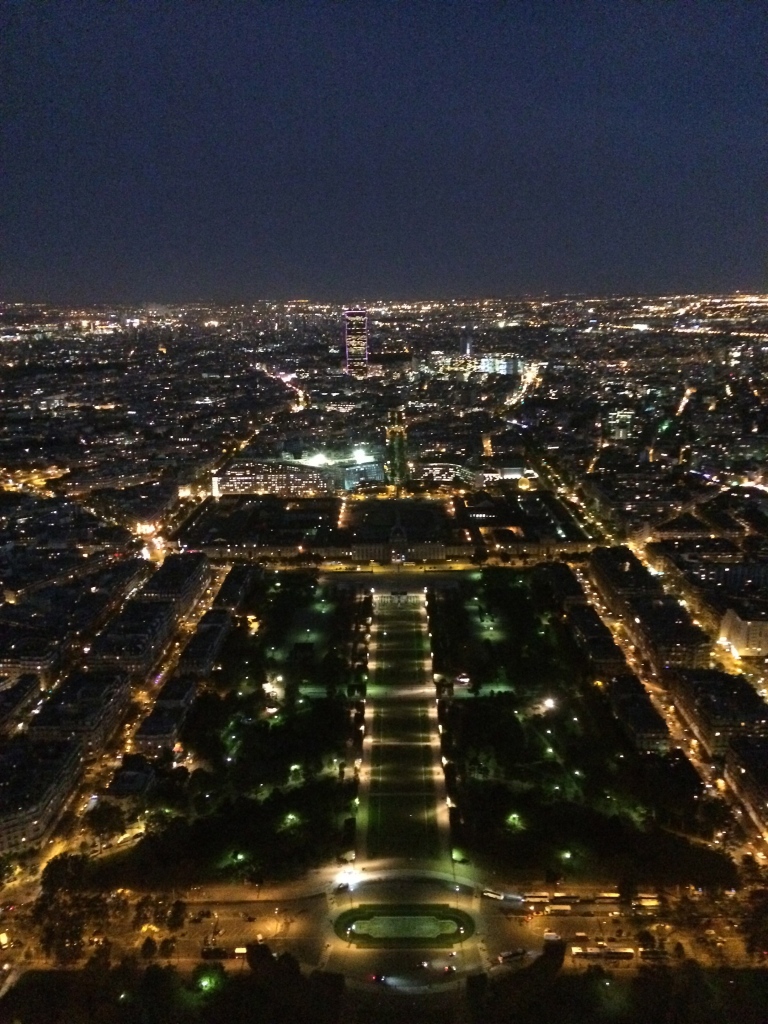 Le Champ de Mars at night – an elegant network of green lights
Le Champ de Mars at night – an elegant network of green lights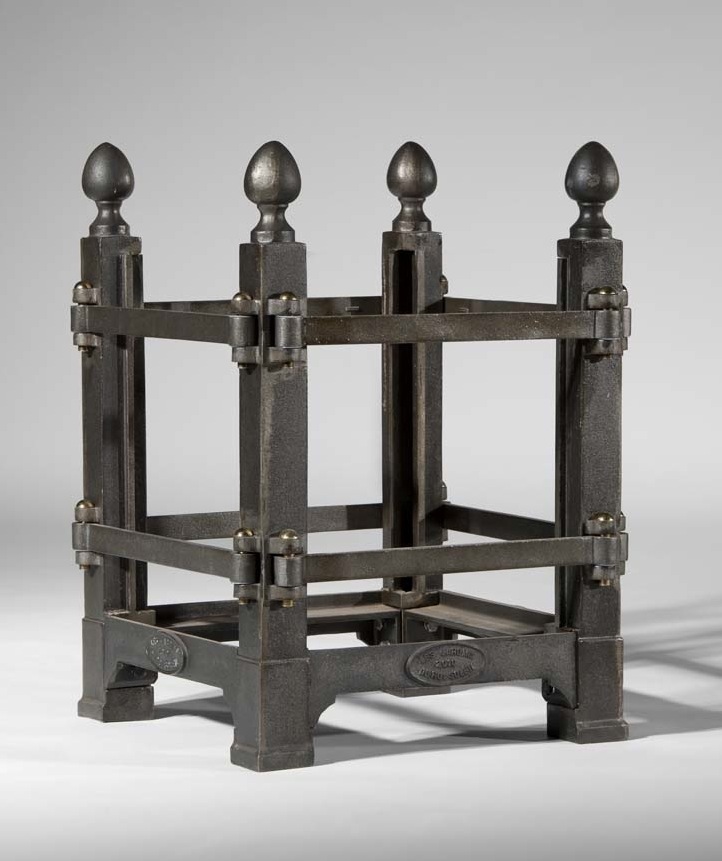 Cast iron frame of the Jardins du Roi Soleil Versailles planter
Cast iron frame of the Jardins du Roi Soleil Versailles planter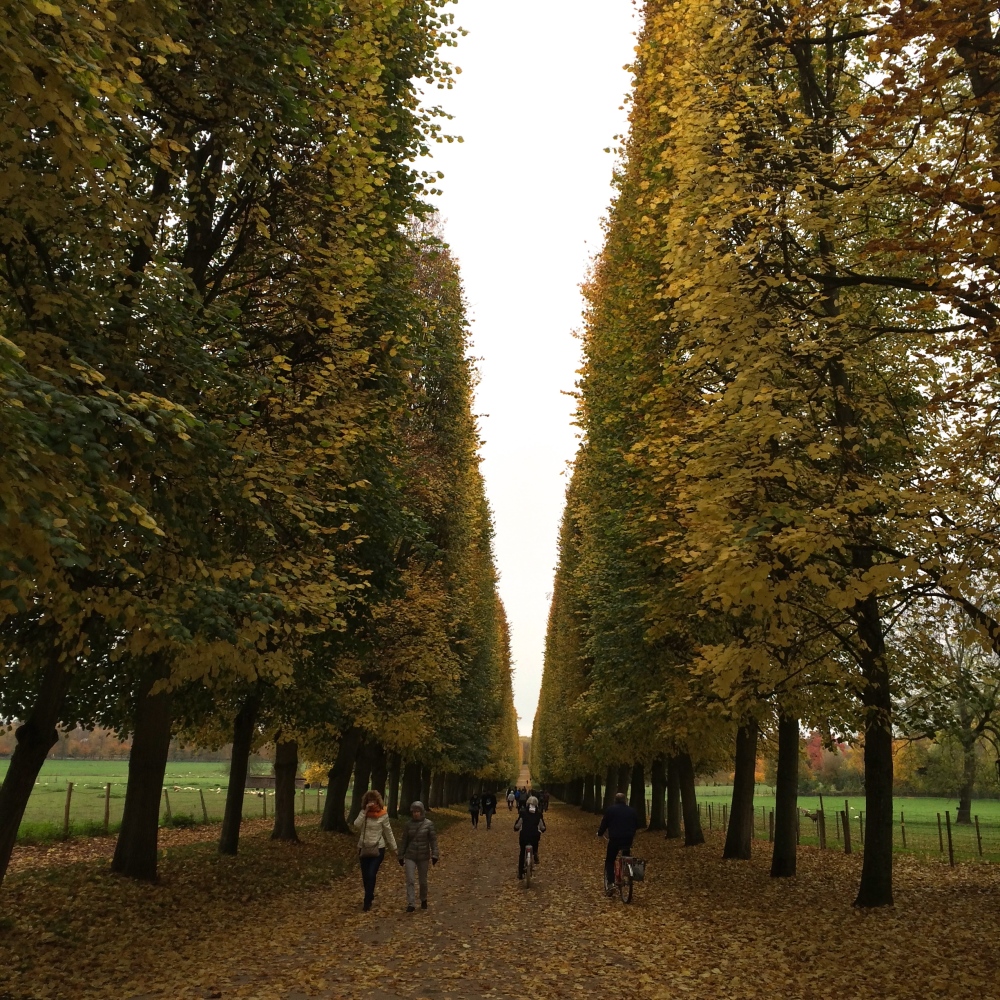 Avenue of Lime Trees, Chateau de Versailles
Avenue of Lime Trees, Chateau de Versailles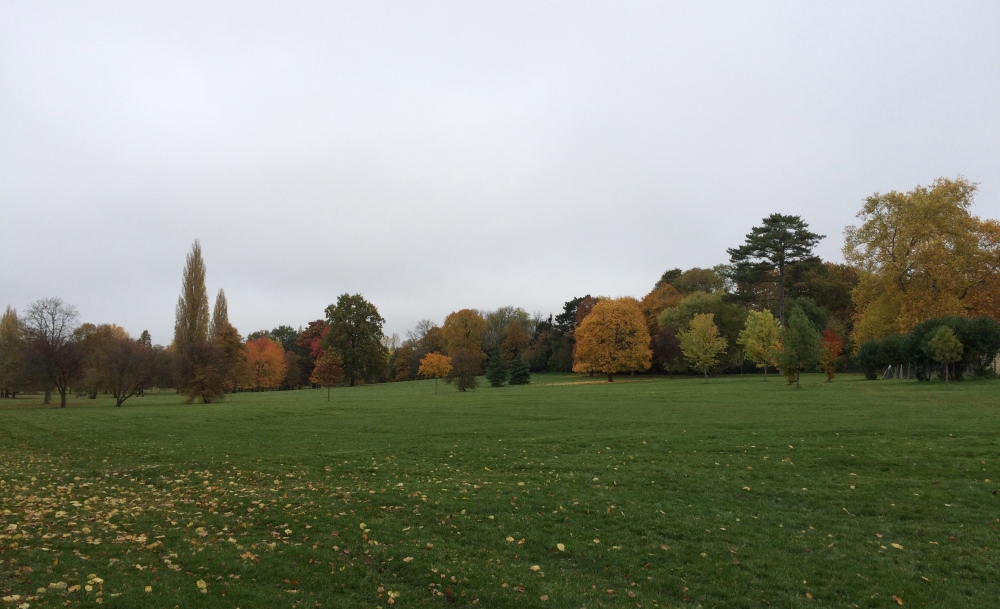
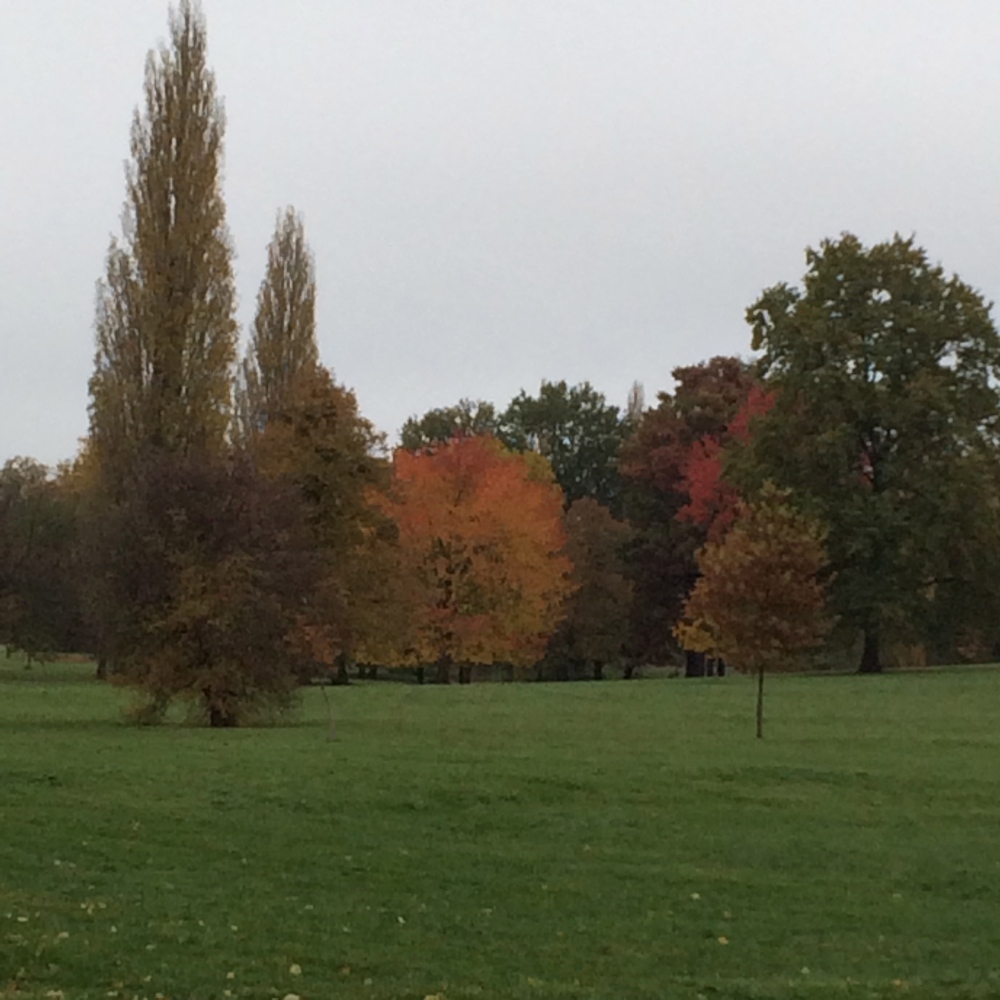
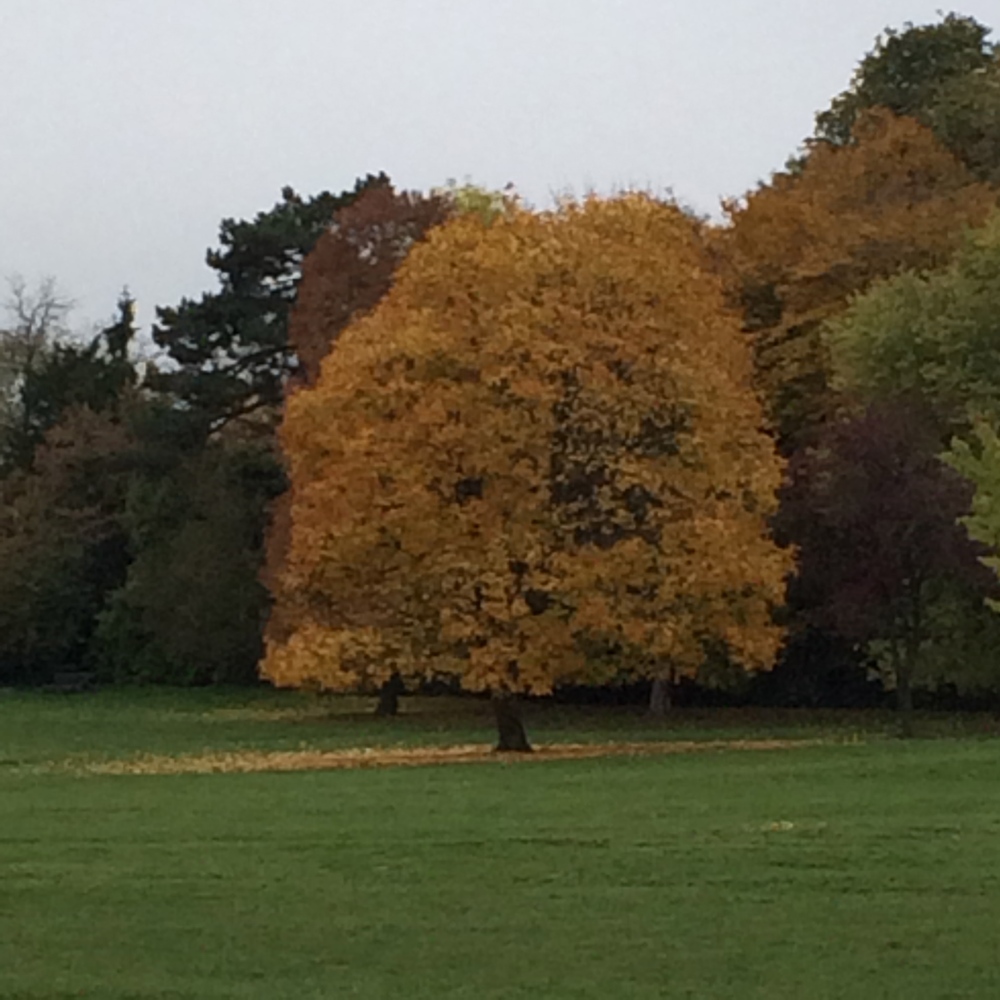 Autumn colour in the parkland, Château de Versailles
Autumn colour in the parkland, Château de Versailles

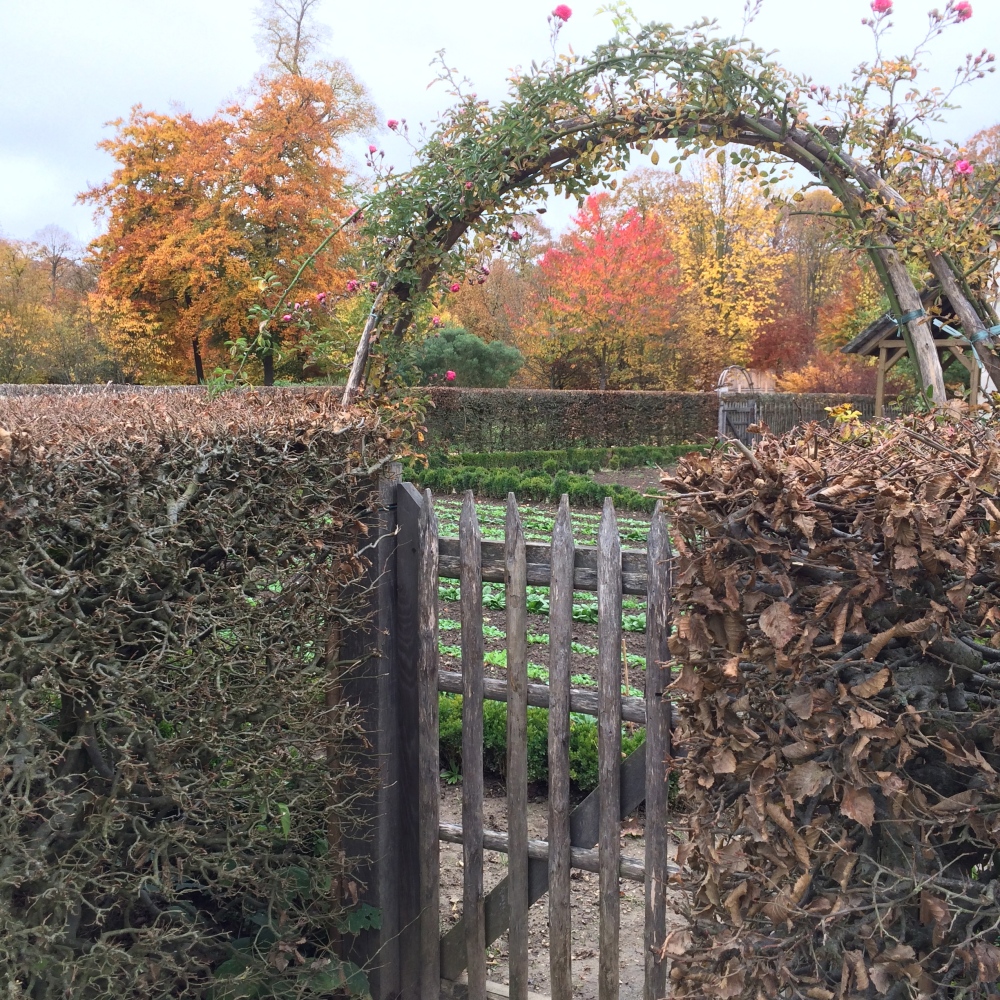
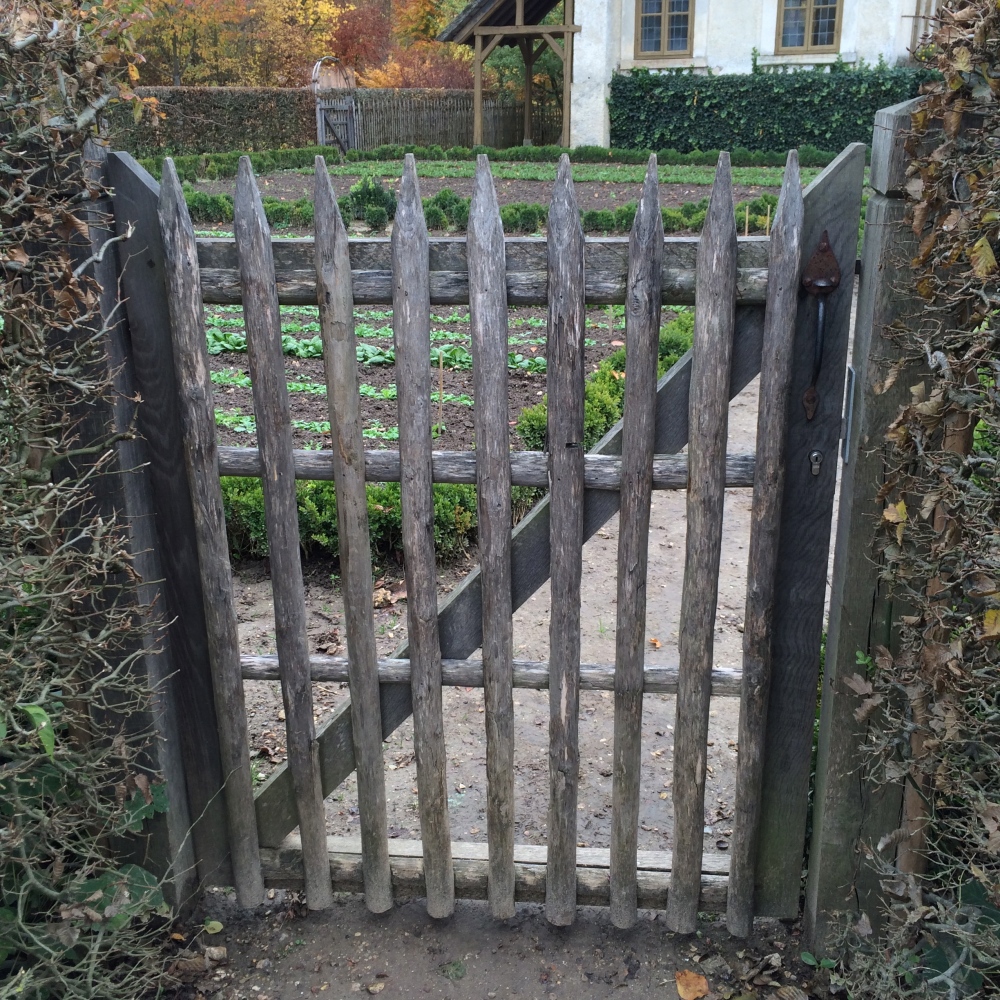
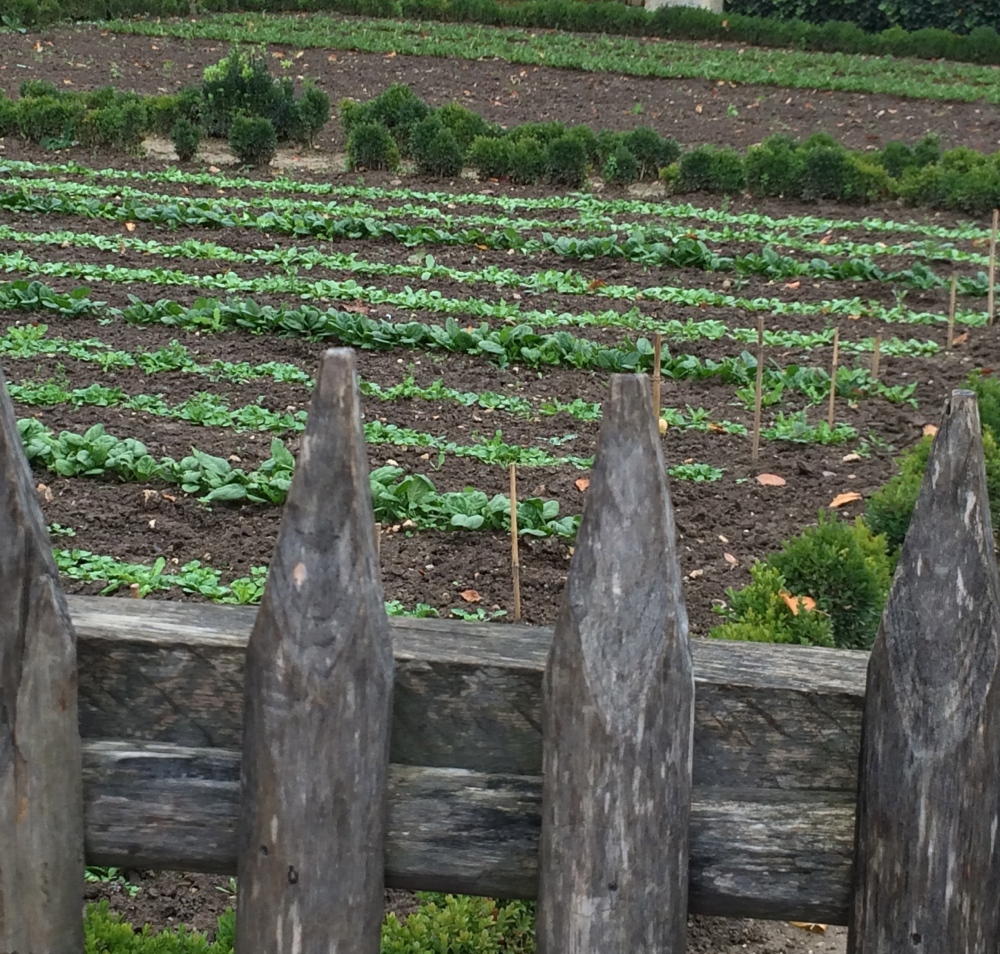 Rustic buildings with immaculate kitchen gardens, chestnut fencing and glowing autumn woodland behind, The ‘Queen’s Hamlet’, Versailles
Rustic buildings with immaculate kitchen gardens, chestnut fencing and glowing autumn woodland behind, The ‘Queen’s Hamlet’, Versailles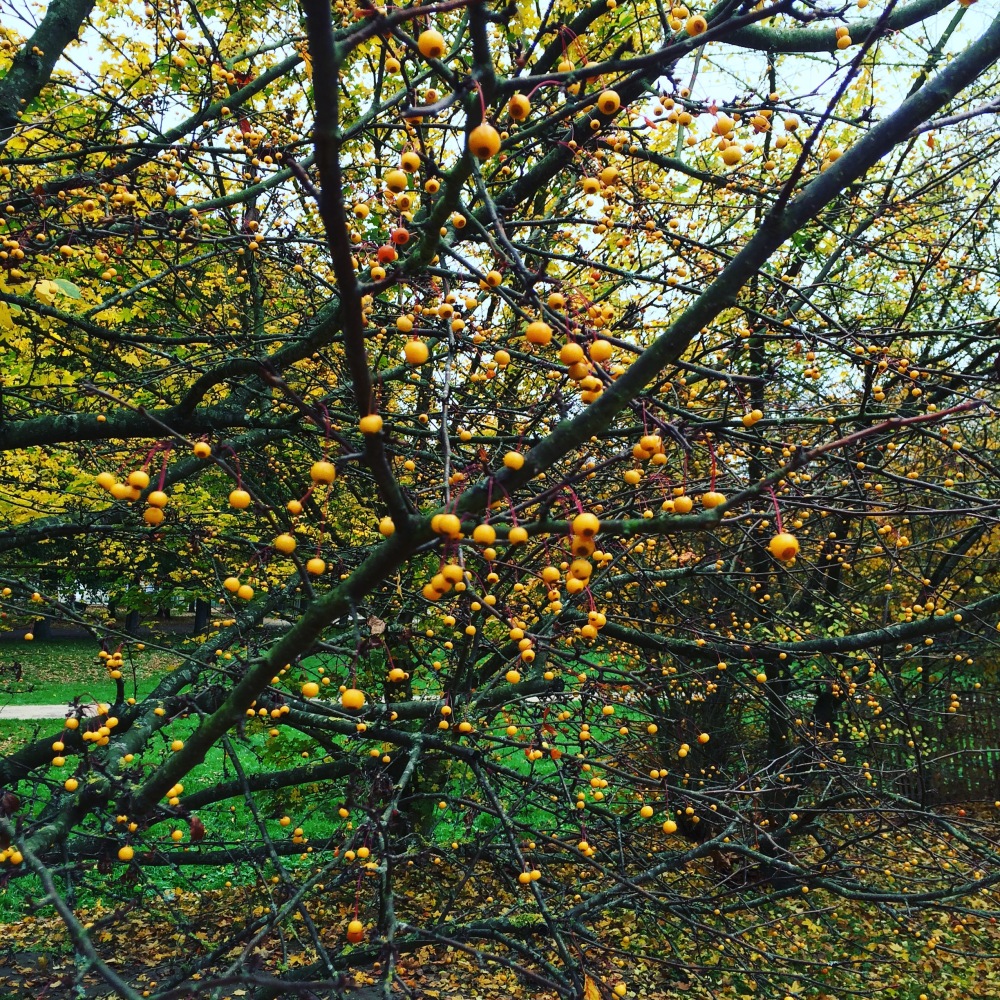
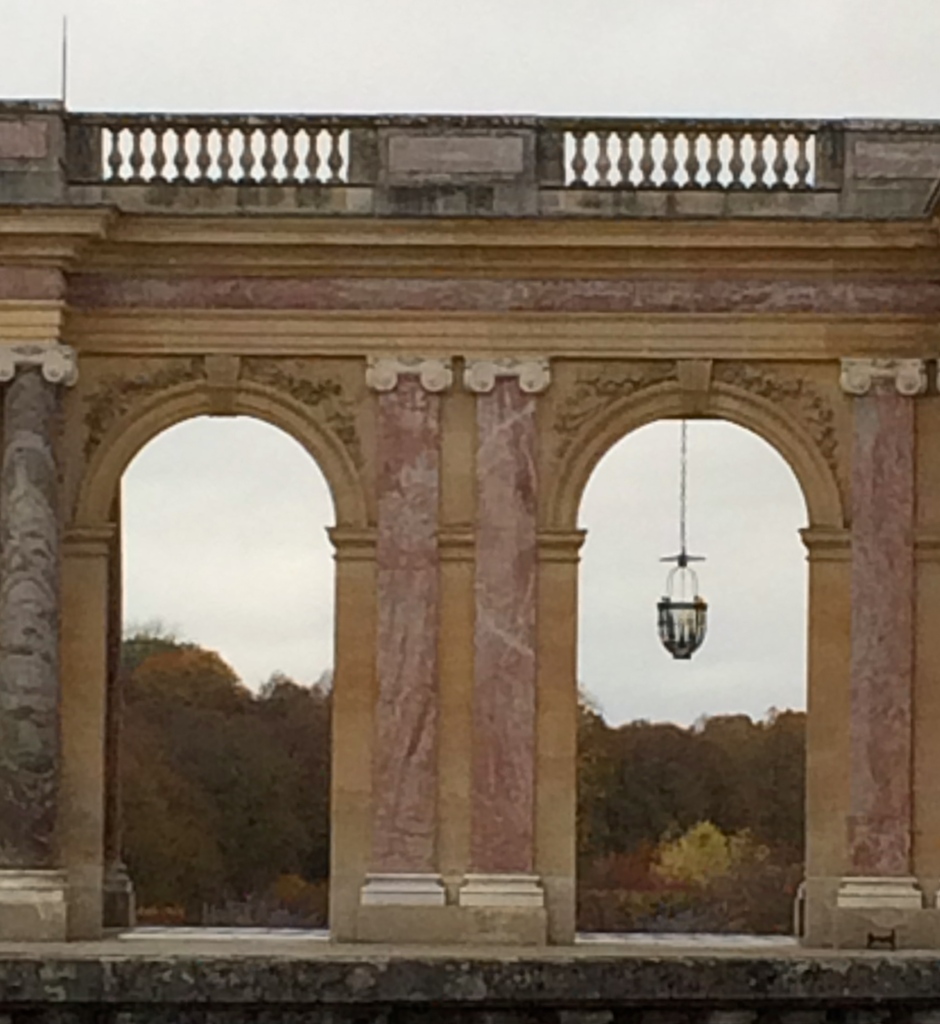
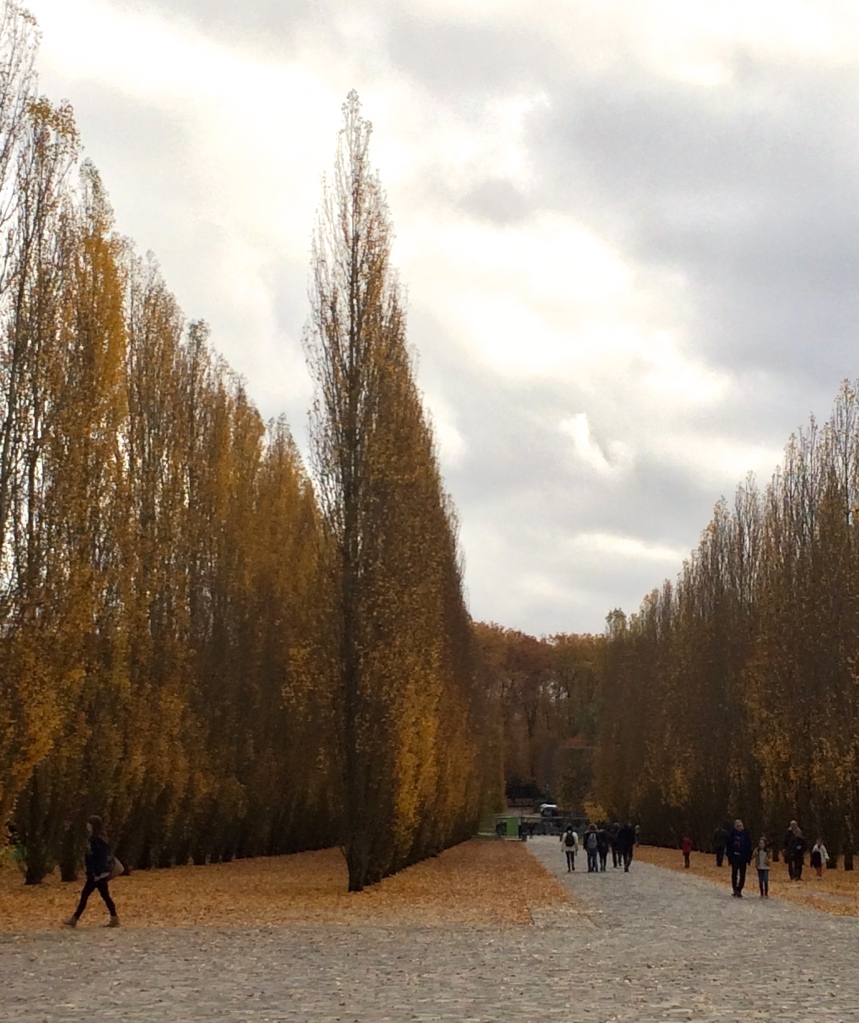
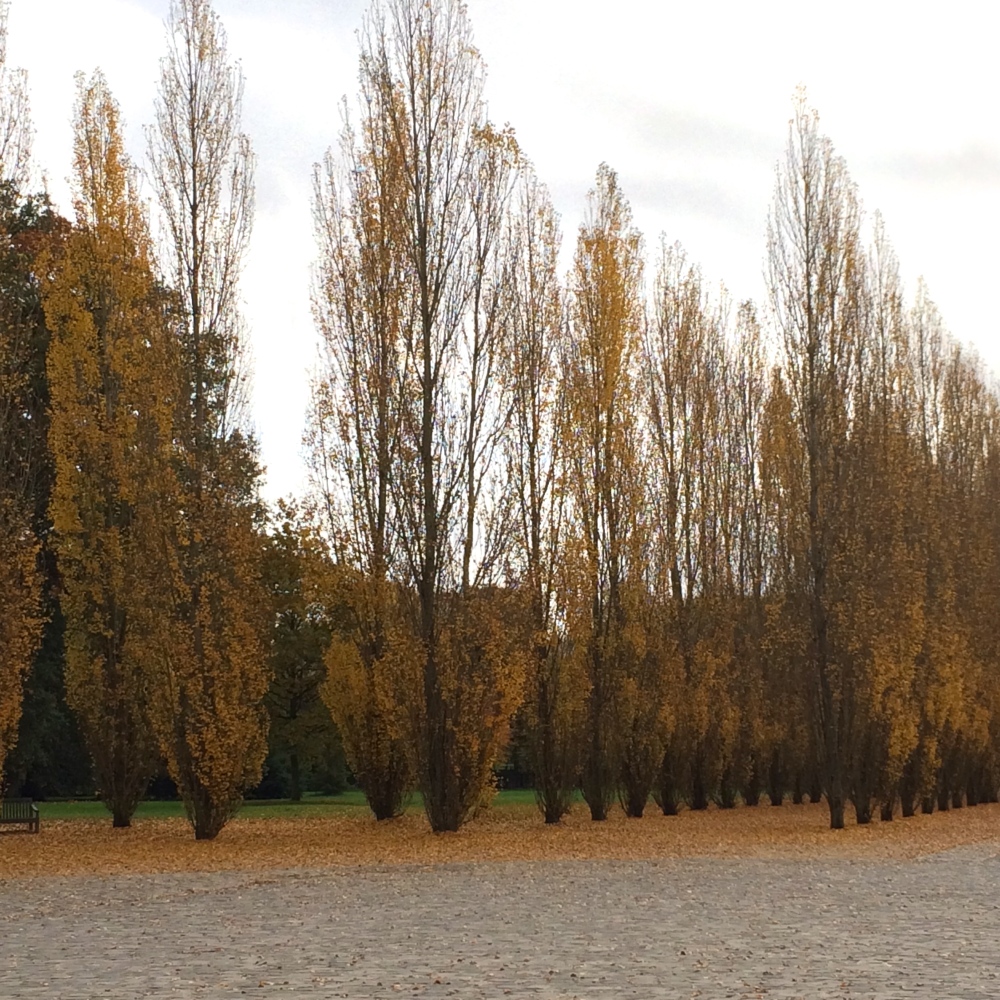
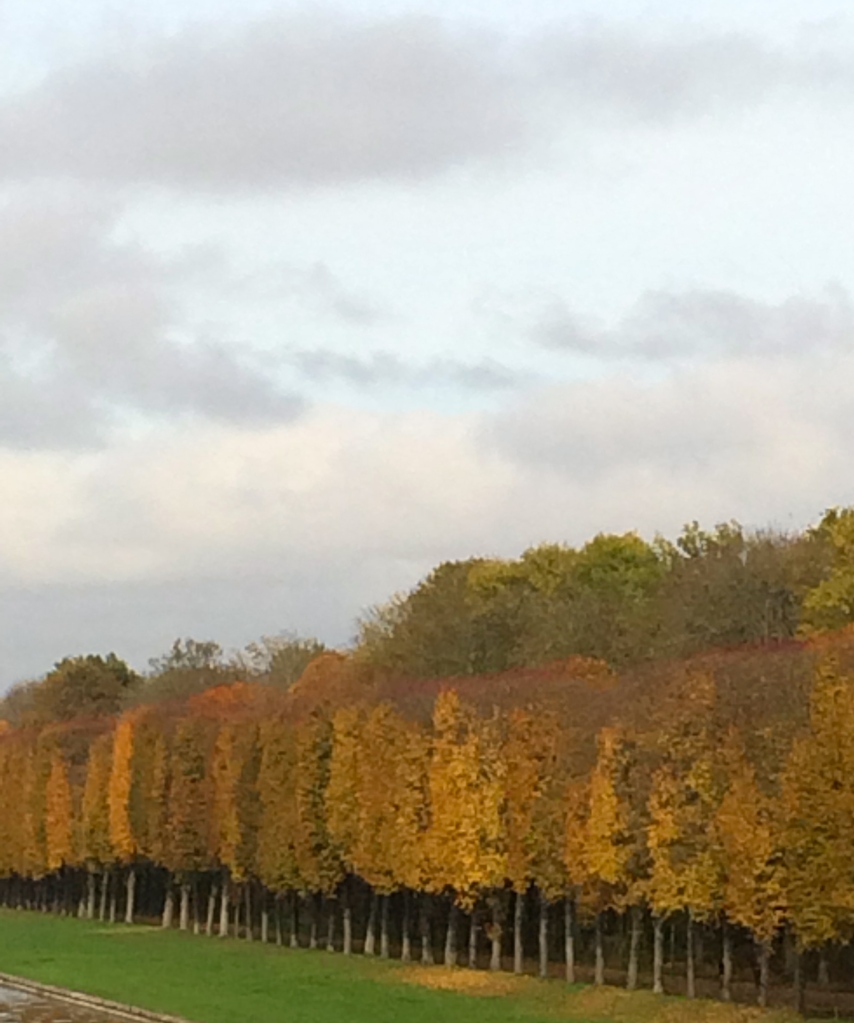
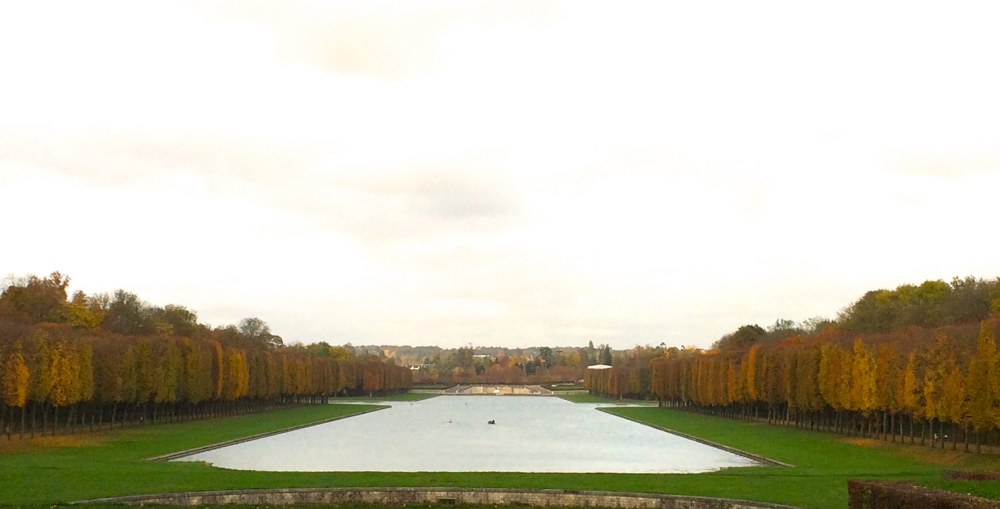
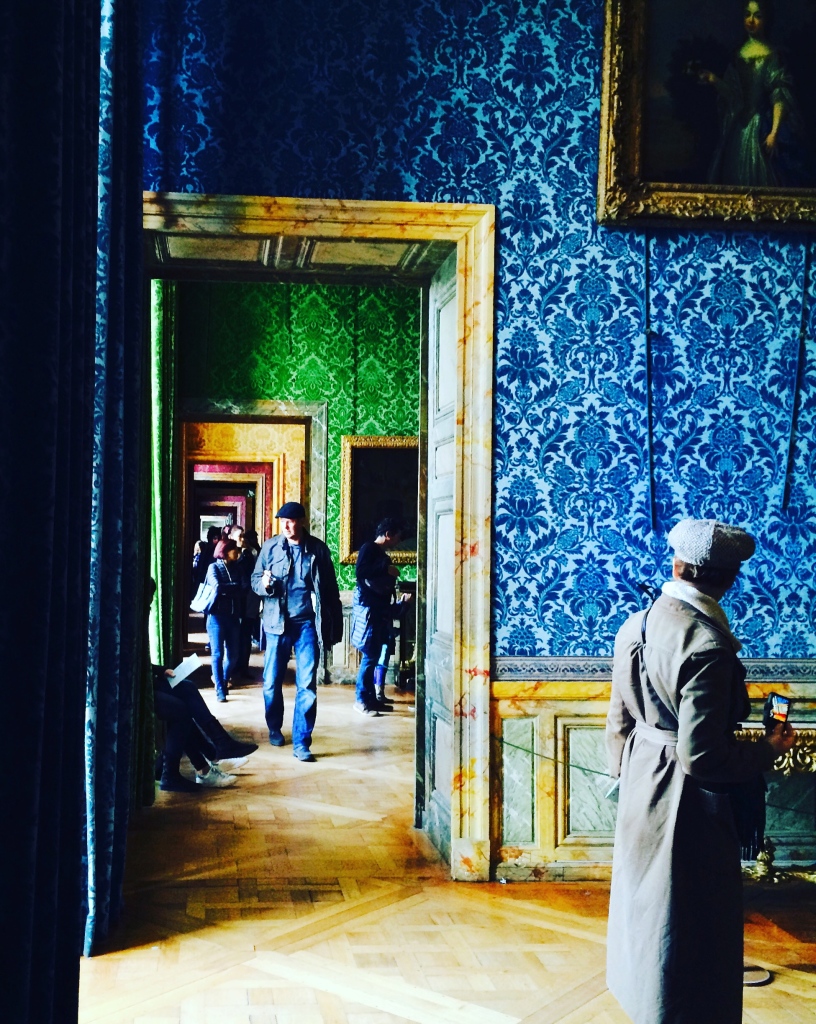
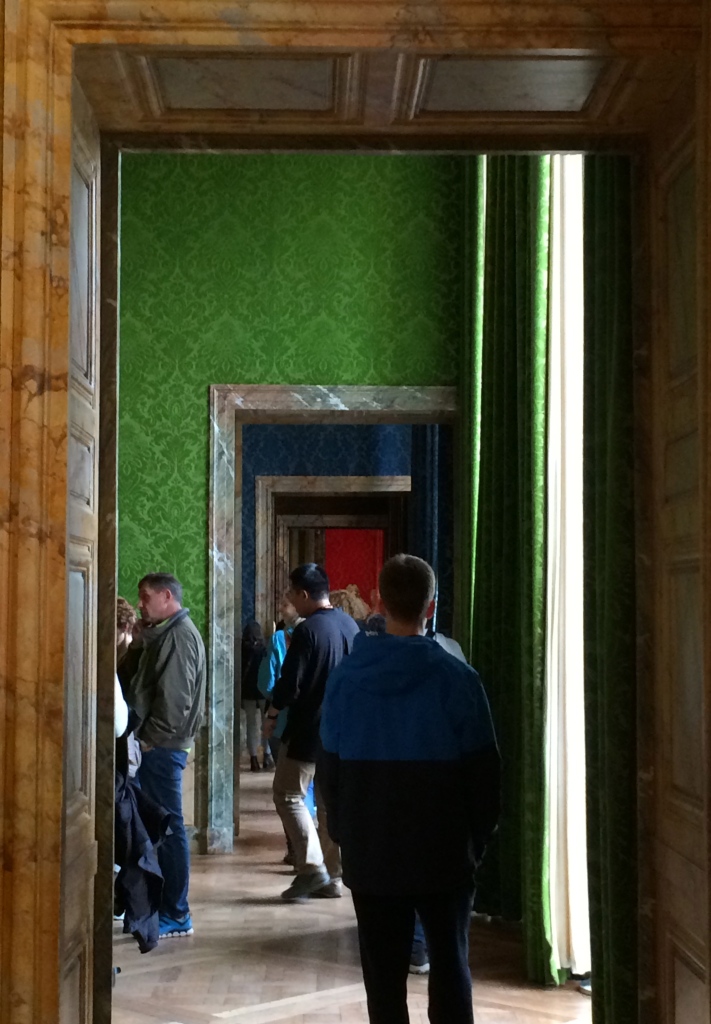
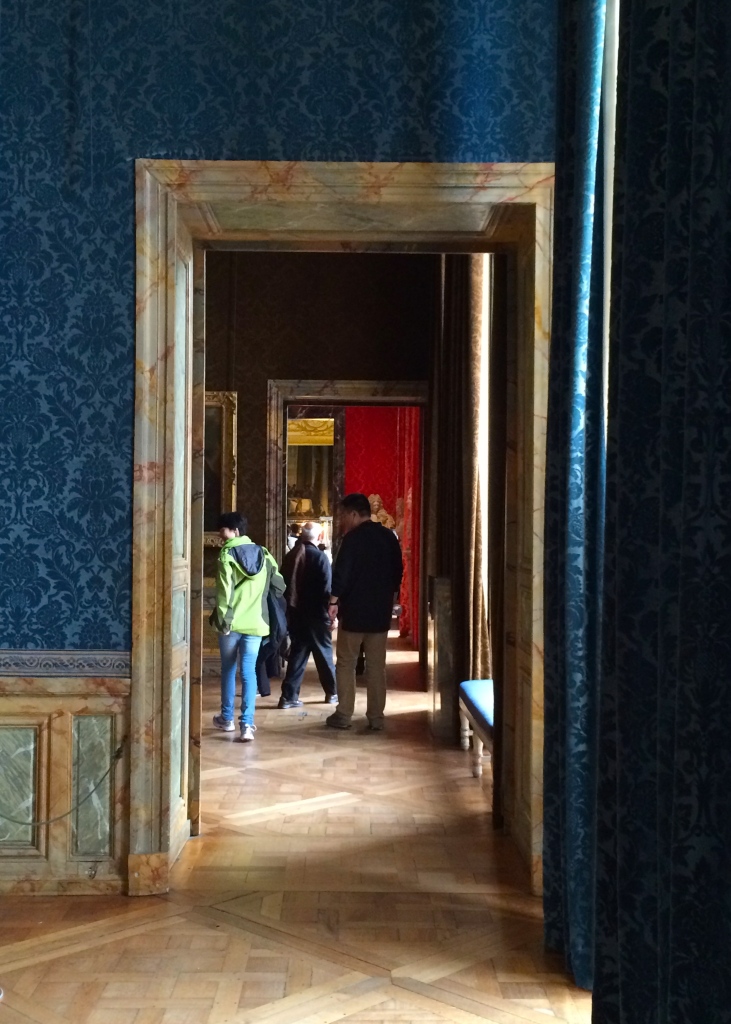 Room upon room of intense colour in the Palace of Versailles
Room upon room of intense colour in the Palace of Versailles

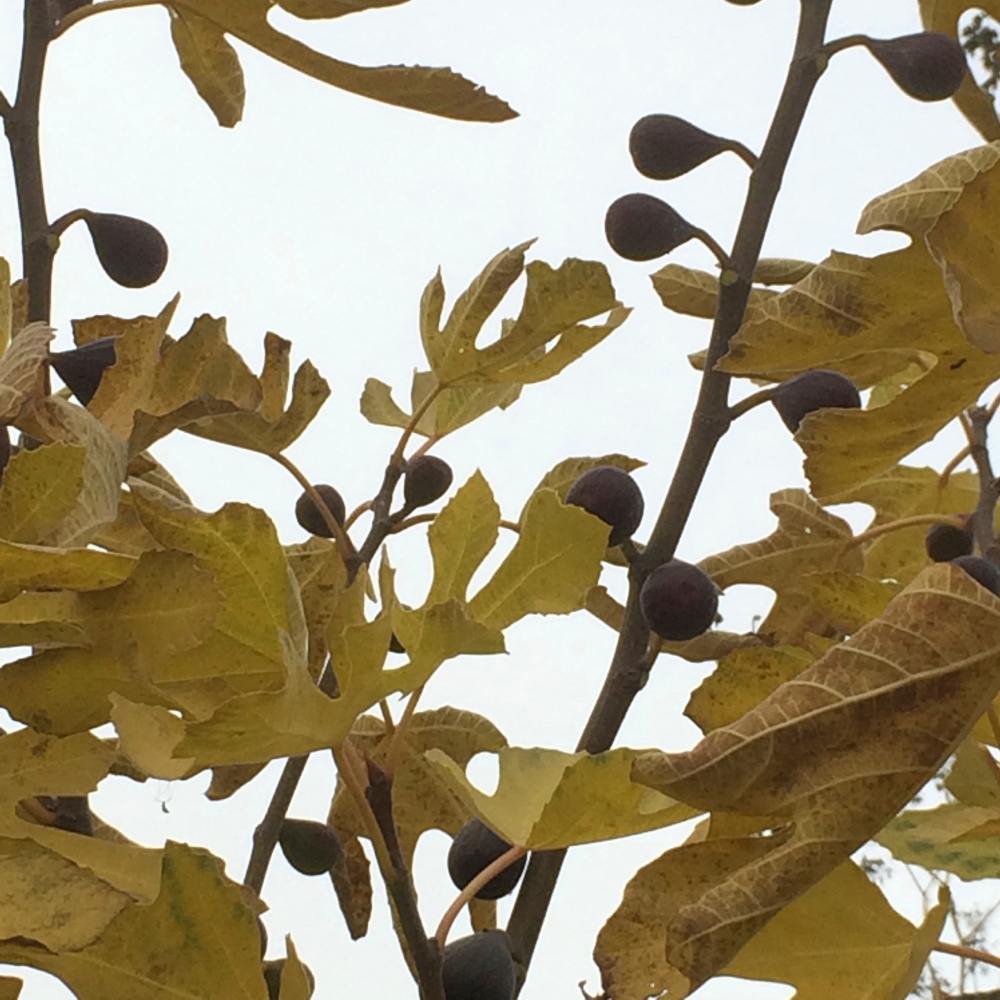
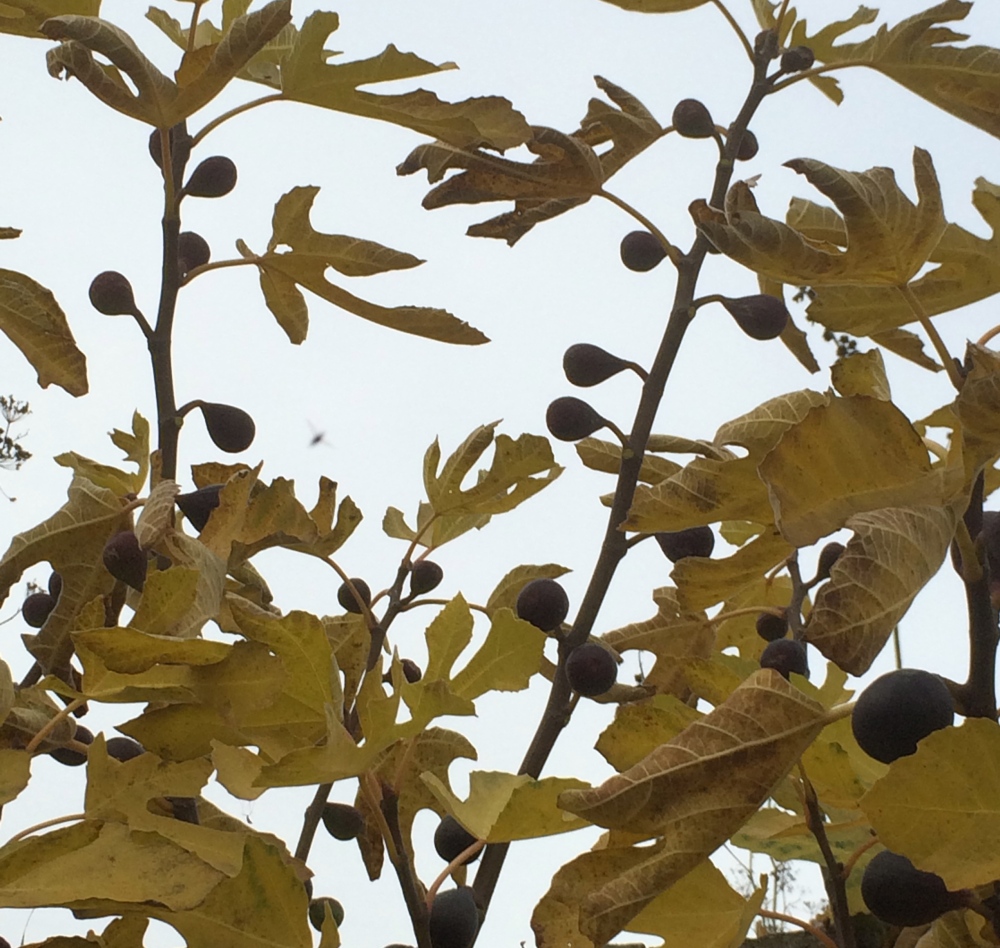 wall of figs, Potager du Roi, October 2015
wall of figs, Potager du Roi, October 2015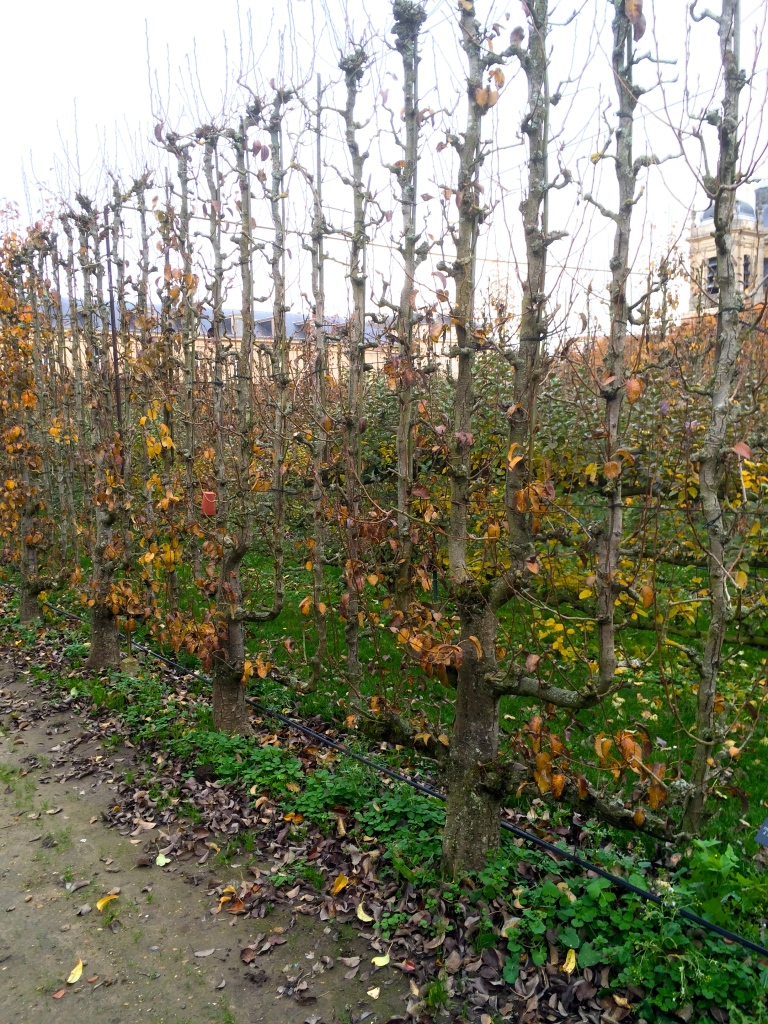
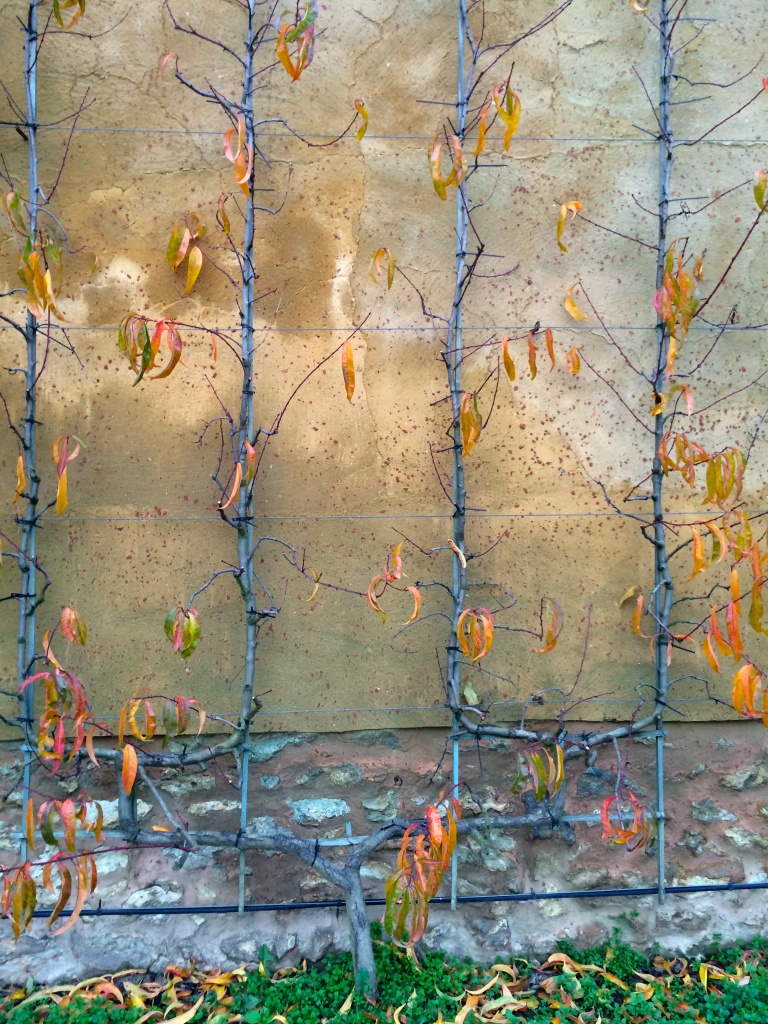
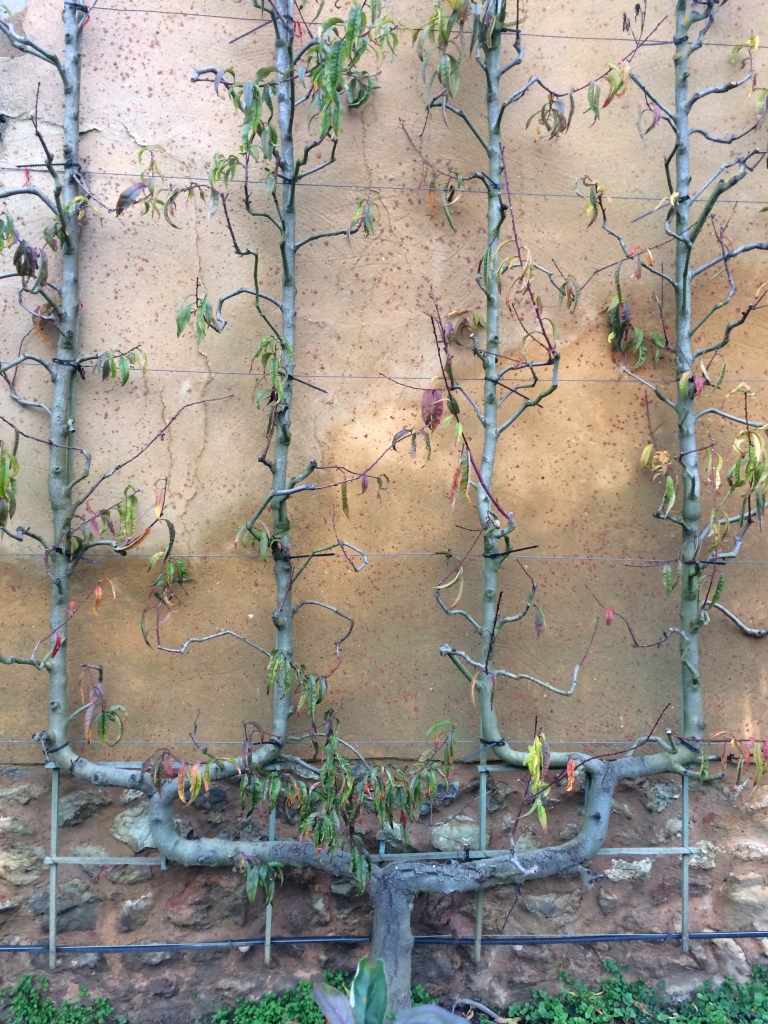
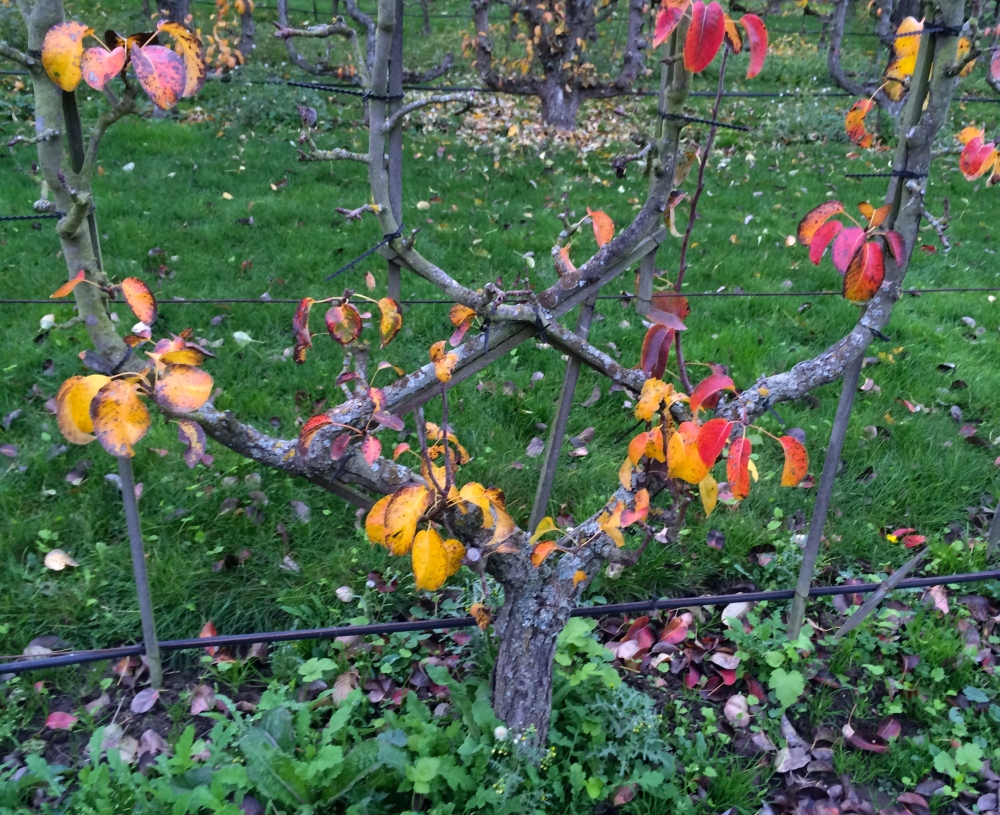 A tiny sample of trained apple and pear trees, Potager du Roi, October 2015
A tiny sample of trained apple and pear trees, Potager du Roi, October 2015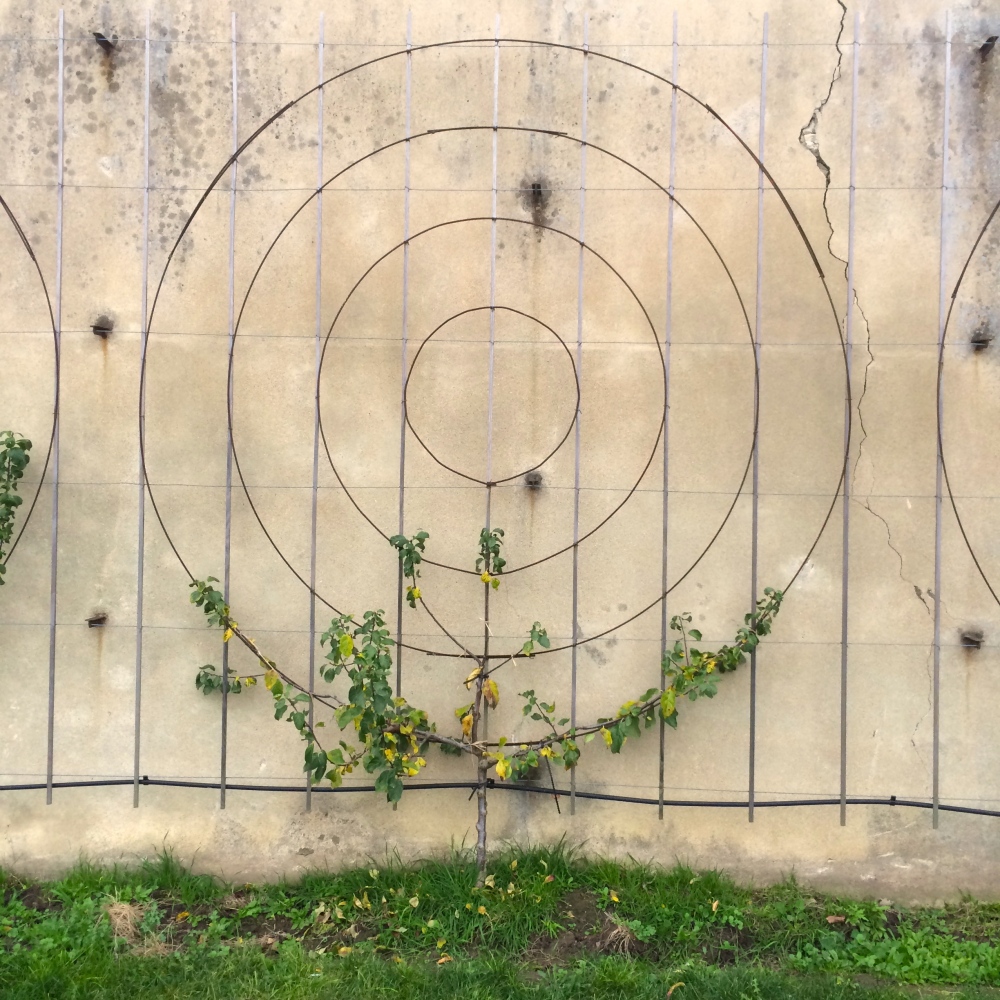
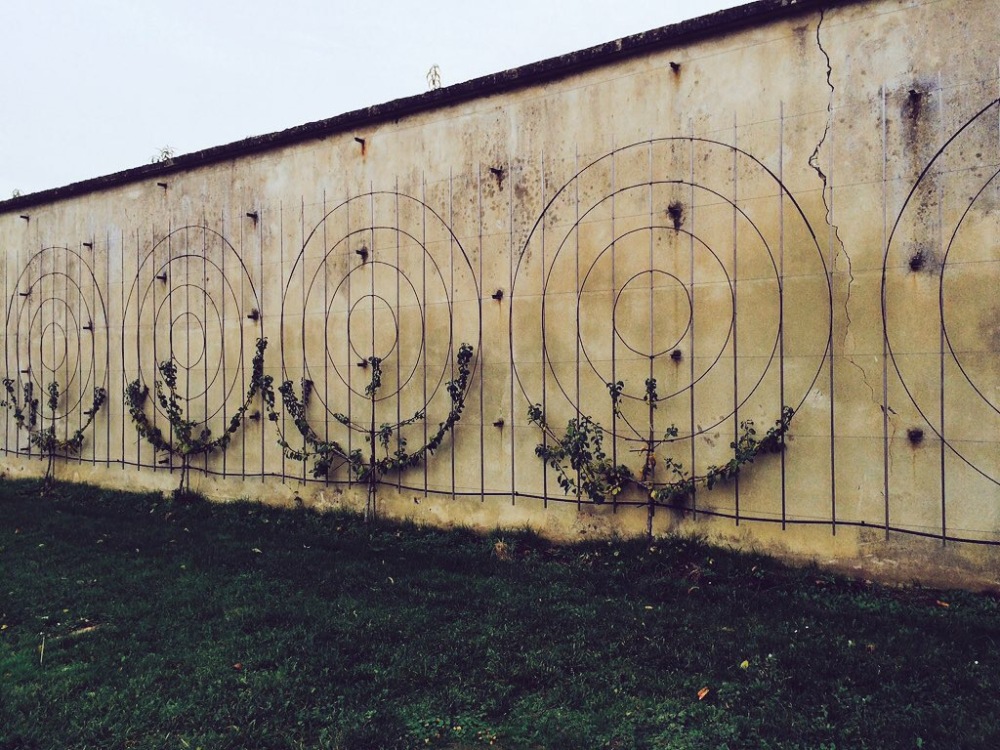 Reine Claude greengages being trained into circles, Potager du Roi
Reine Claude greengages being trained into circles, Potager du Roi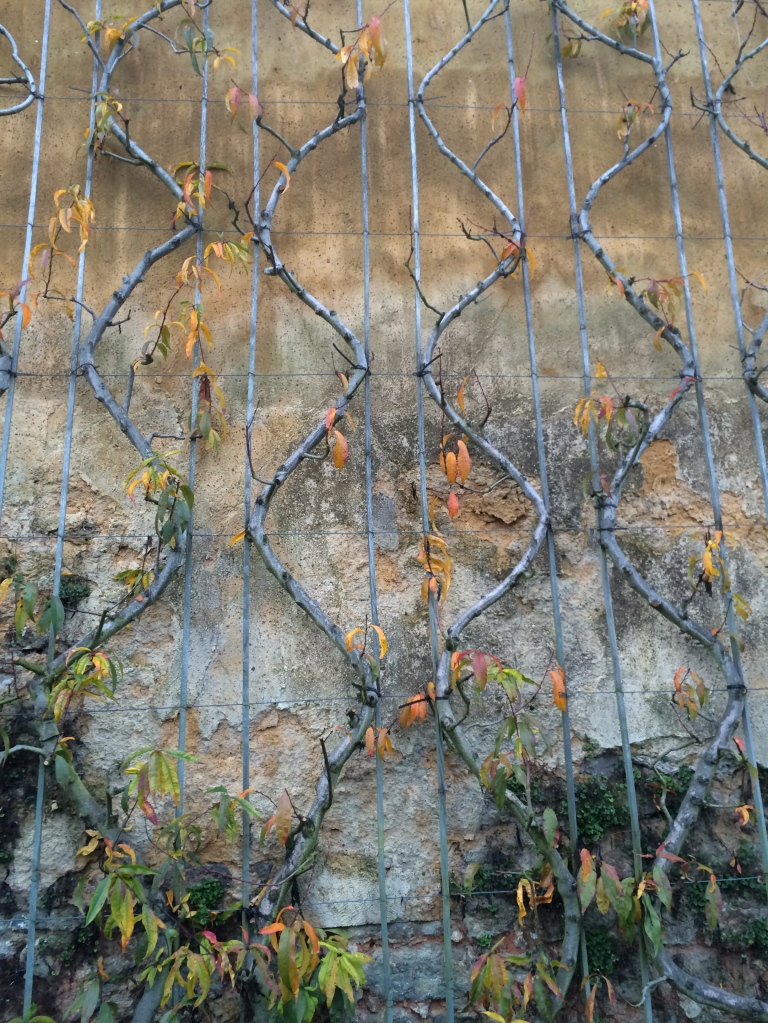
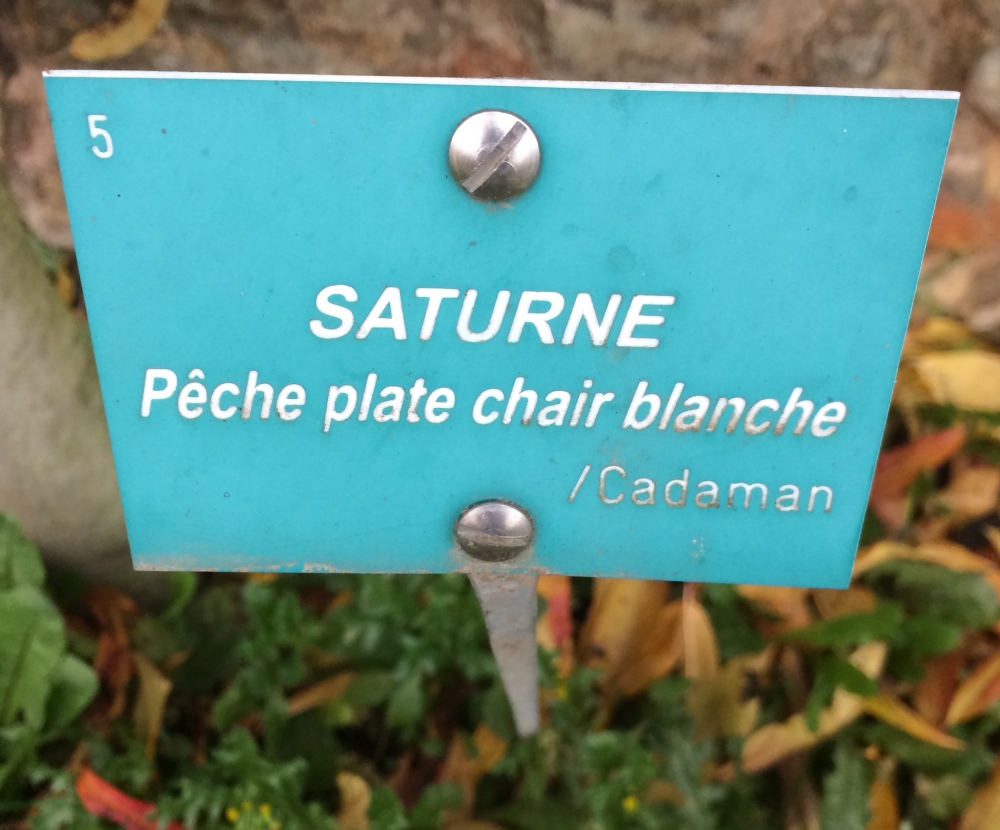
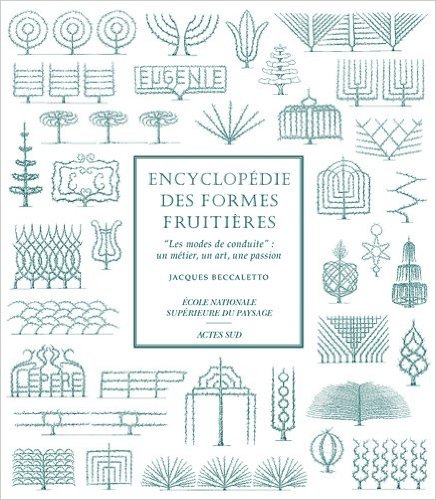
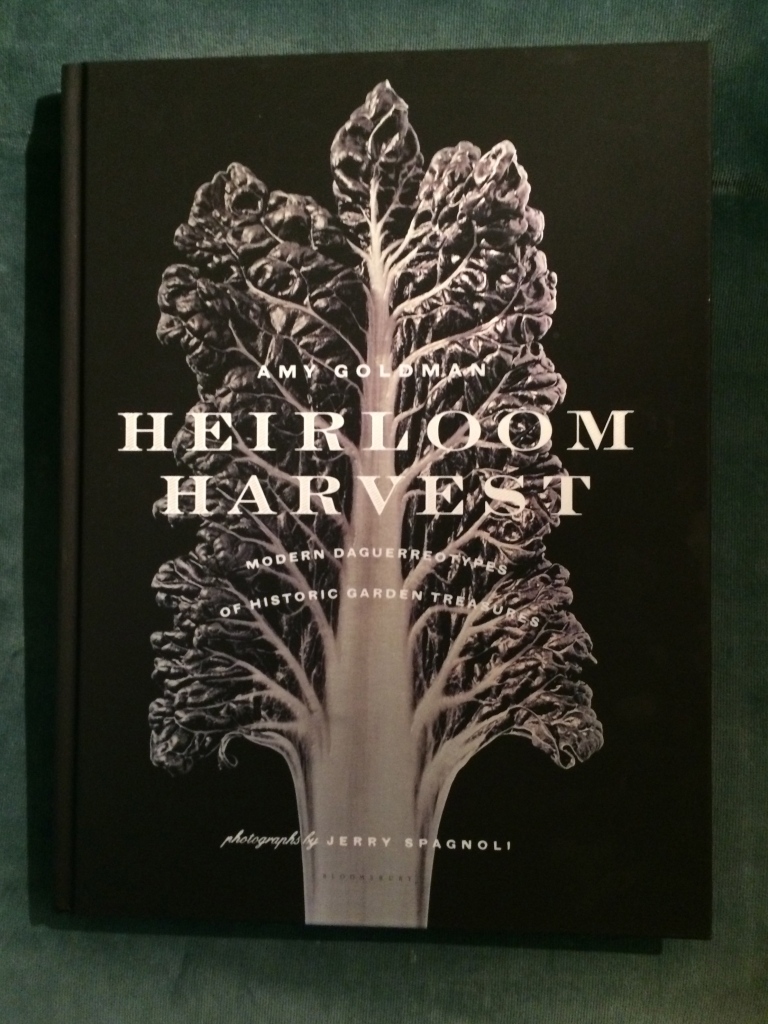
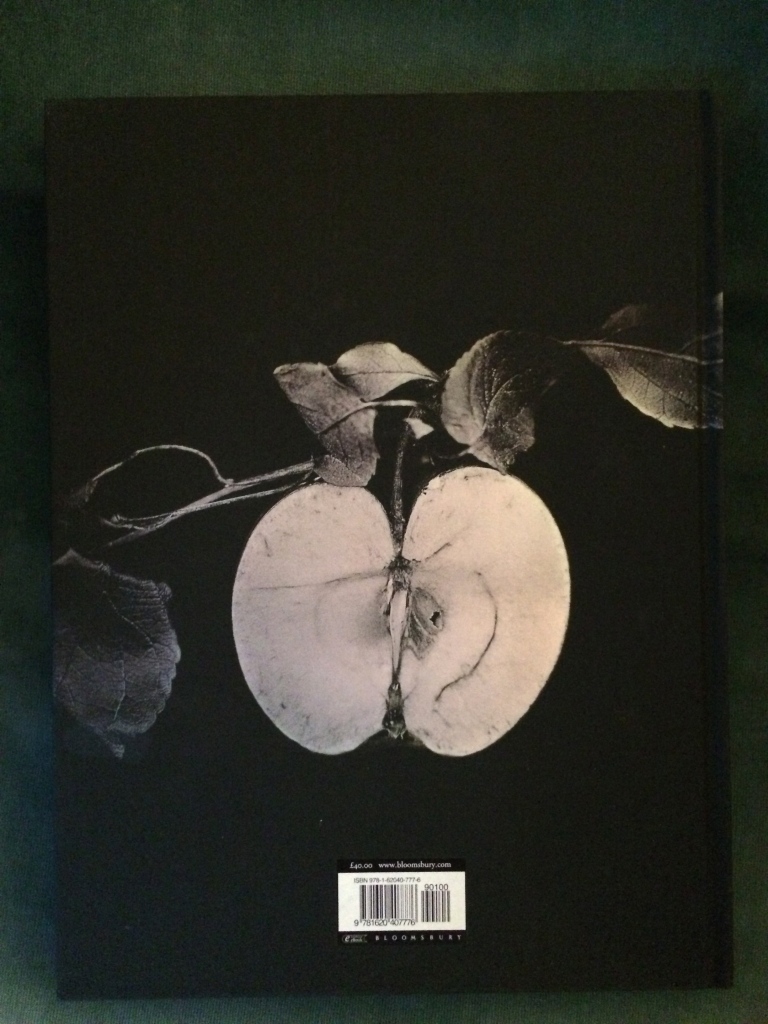 The sumptuous front and back covers of ‘Heirloom Harvest’ by Amy Goldman
The sumptuous front and back covers of ‘Heirloom Harvest’ by Amy Goldman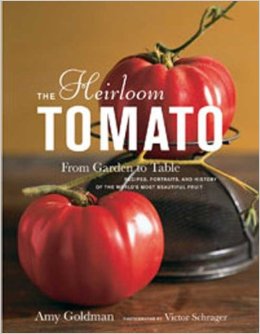
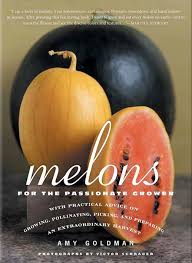 ‘Heirloom Harvest’ is gripping because it is the story of one person’s life and the garden they have made and how one stage of the journey lead to another. She is clear that two key books changed the course of her life. Rosalind Creasy’s ‘Cooking from the Garden’ which ‘opened my eyes to the splendour and diversity of heirlooms, their uses in cookery and edible landscaping’ and Cary Fowler and Pat Mooney’s ‘Shattering: Food, Politics and the Loss of Genetic Diversity’ which ‘alerted me to the dangers of crop uniformity and the staggering and mounting losses of genetic diversity in agriculture’. If Paris is the ‘City of Love’, it fits well with this post that Amy ended up falling in love with and marrying Cary, and they now live and farm together, always trying to grow and protect new varieties of fruits, vegetables and now rare breeds of animal too, and storing seeds in their basement refrigerator seed bank.
‘Heirloom Harvest’ is gripping because it is the story of one person’s life and the garden they have made and how one stage of the journey lead to another. She is clear that two key books changed the course of her life. Rosalind Creasy’s ‘Cooking from the Garden’ which ‘opened my eyes to the splendour and diversity of heirlooms, their uses in cookery and edible landscaping’ and Cary Fowler and Pat Mooney’s ‘Shattering: Food, Politics and the Loss of Genetic Diversity’ which ‘alerted me to the dangers of crop uniformity and the staggering and mounting losses of genetic diversity in agriculture’. If Paris is the ‘City of Love’, it fits well with this post that Amy ended up falling in love with and marrying Cary, and they now live and farm together, always trying to grow and protect new varieties of fruits, vegetables and now rare breeds of animal too, and storing seeds in their basement refrigerator seed bank.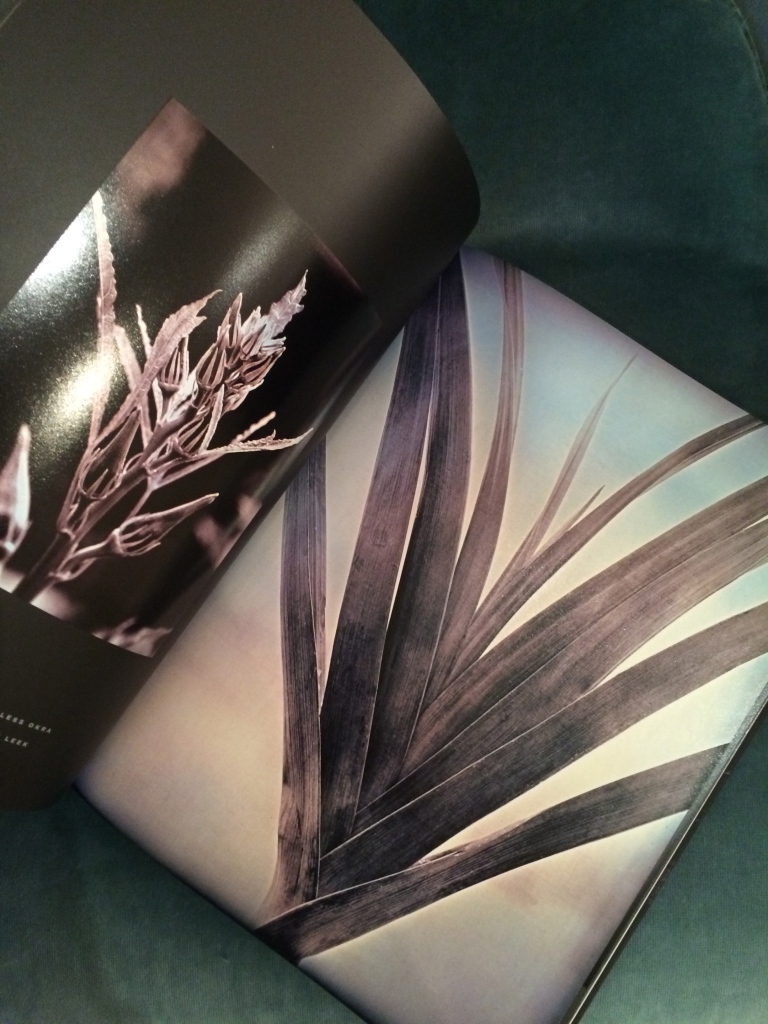 ‘American Flag Leek’ by Jerry Spagnoli from ‘Heirloom Harvest’ by Amy Goldman
‘American Flag Leek’ by Jerry Spagnoli from ‘Heirloom Harvest’ by Amy Goldman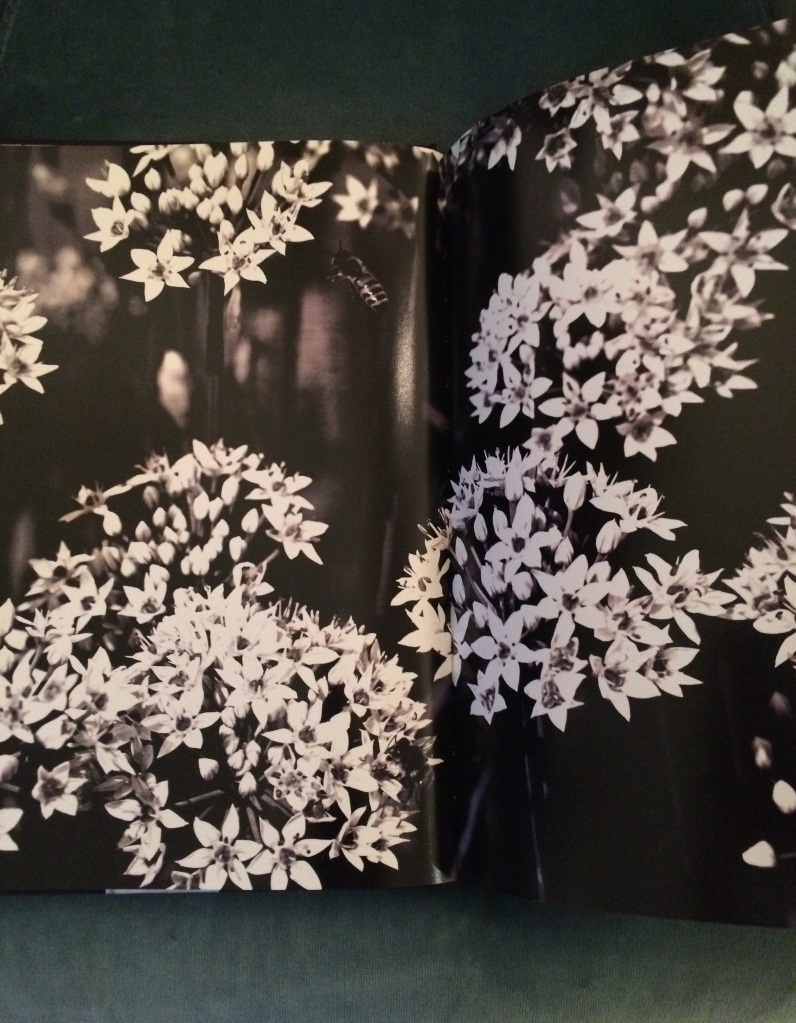 ‘Garlic Chives’ by Jerry Spagnoli from ‘Heirloom Harvest’ by Amy Goldman
‘Garlic Chives’ by Jerry Spagnoli from ‘Heirloom Harvest’ by Amy Goldman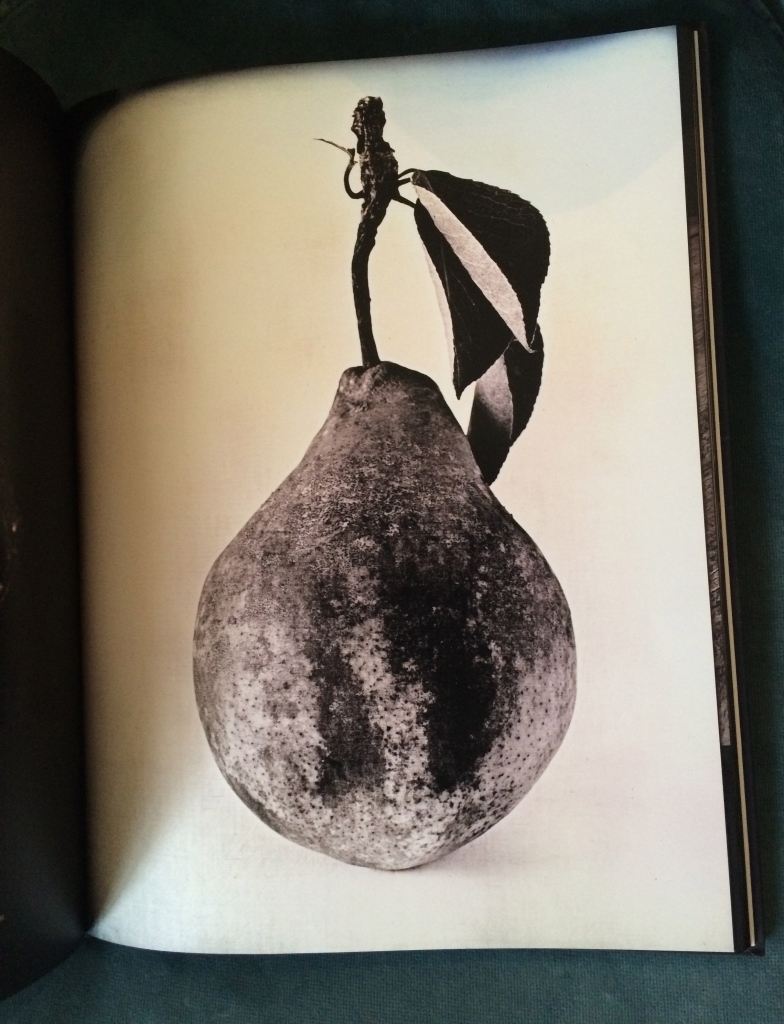 ‘Tyson Pear’, photograph by Jerry Spagnoli from ‘Heirloom Harvest’ by Amy Goldman
‘Tyson Pear’, photograph by Jerry Spagnoli from ‘Heirloom Harvest’ by Amy Goldman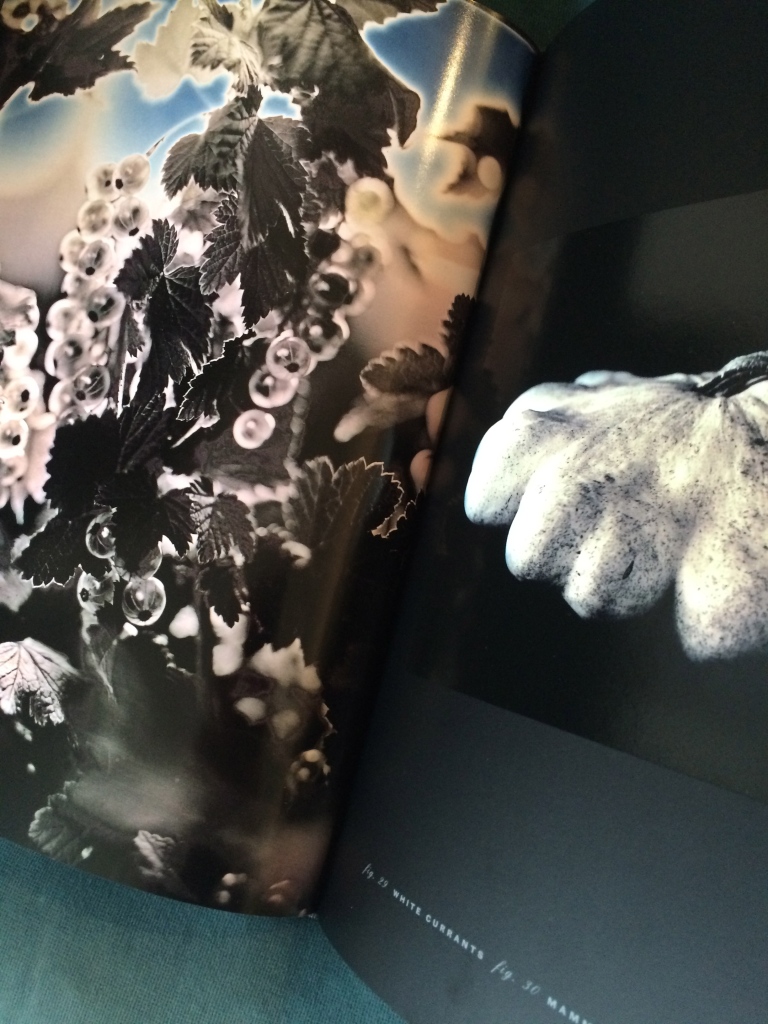 ‘White Currants’ by Jerry Spagnoli from ‘Heirloom Harvest’ by Amy Goldman
‘White Currants’ by Jerry Spagnoli from ‘Heirloom Harvest’ by Amy Goldman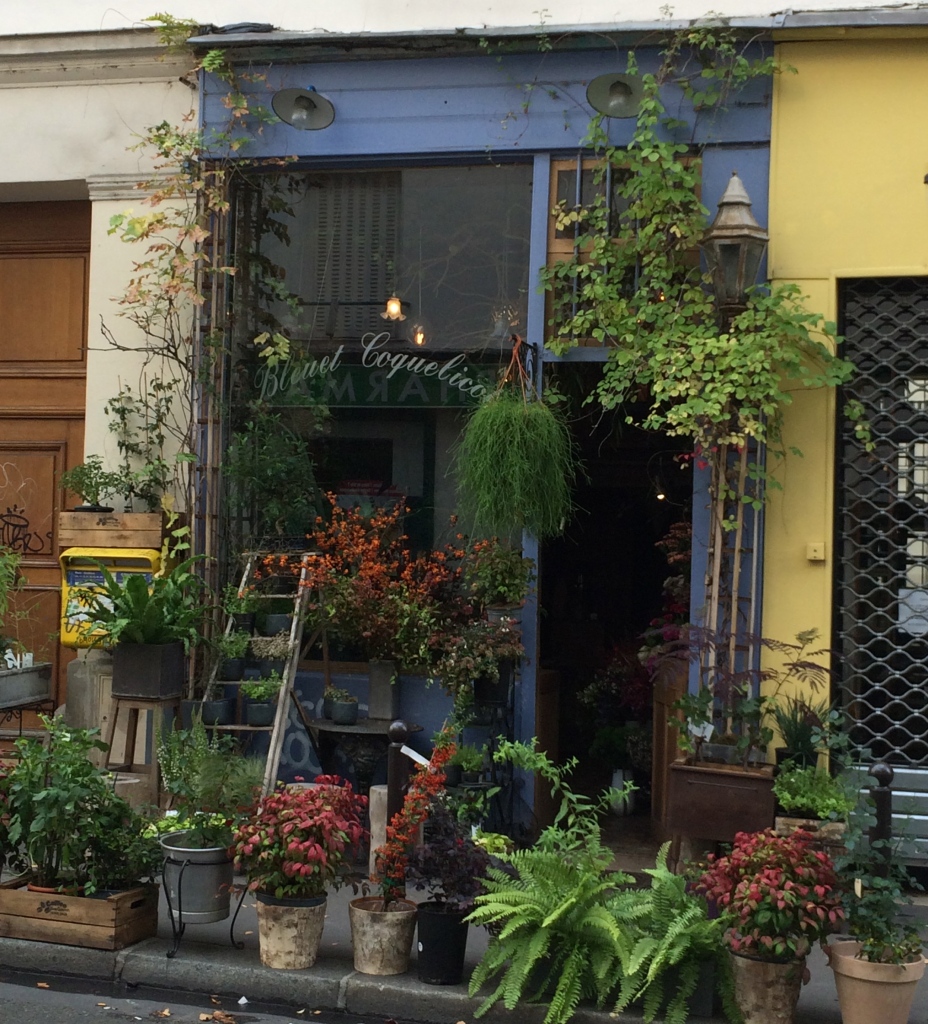
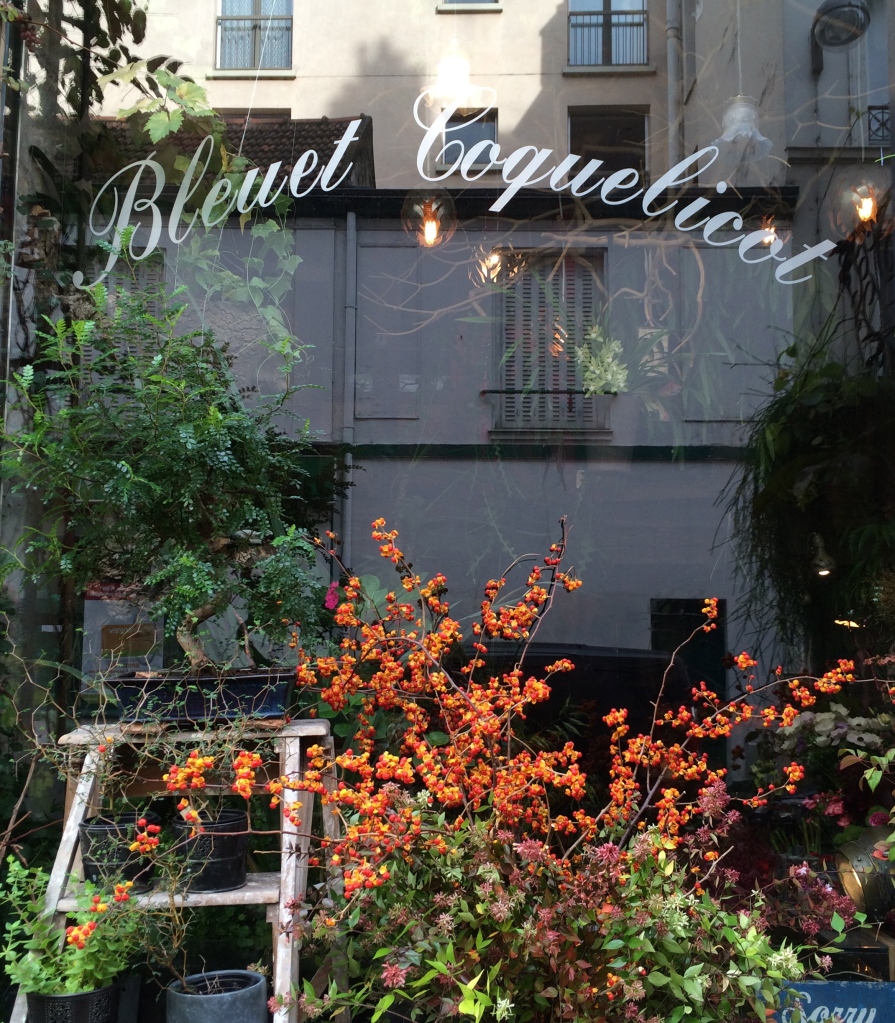
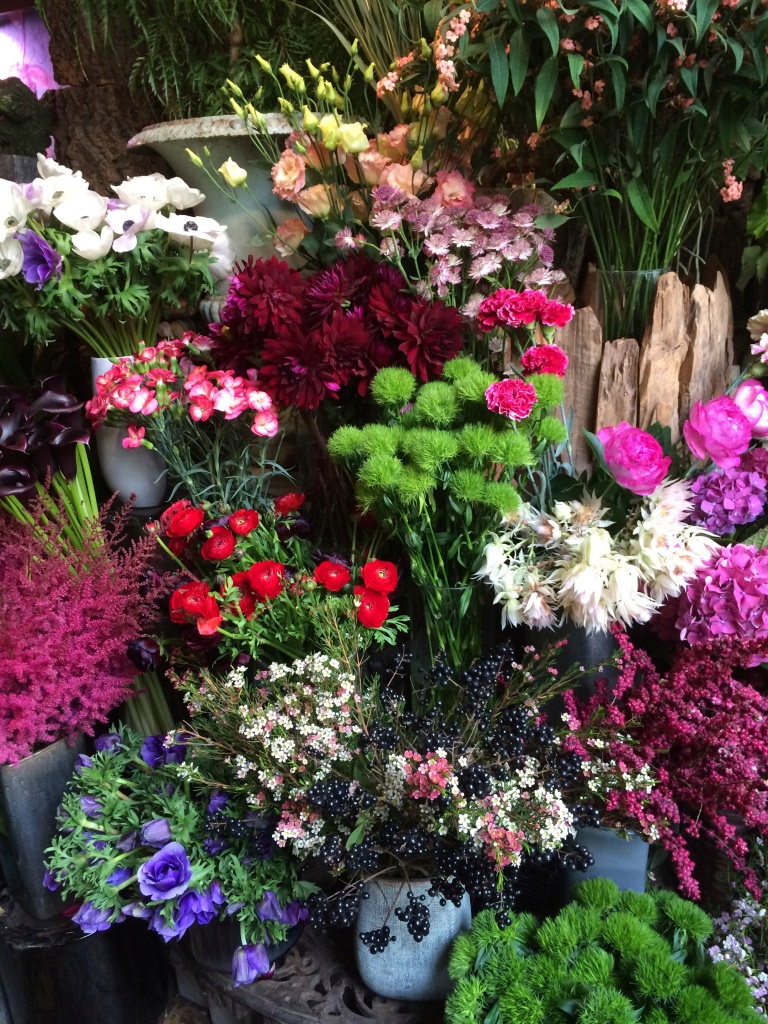
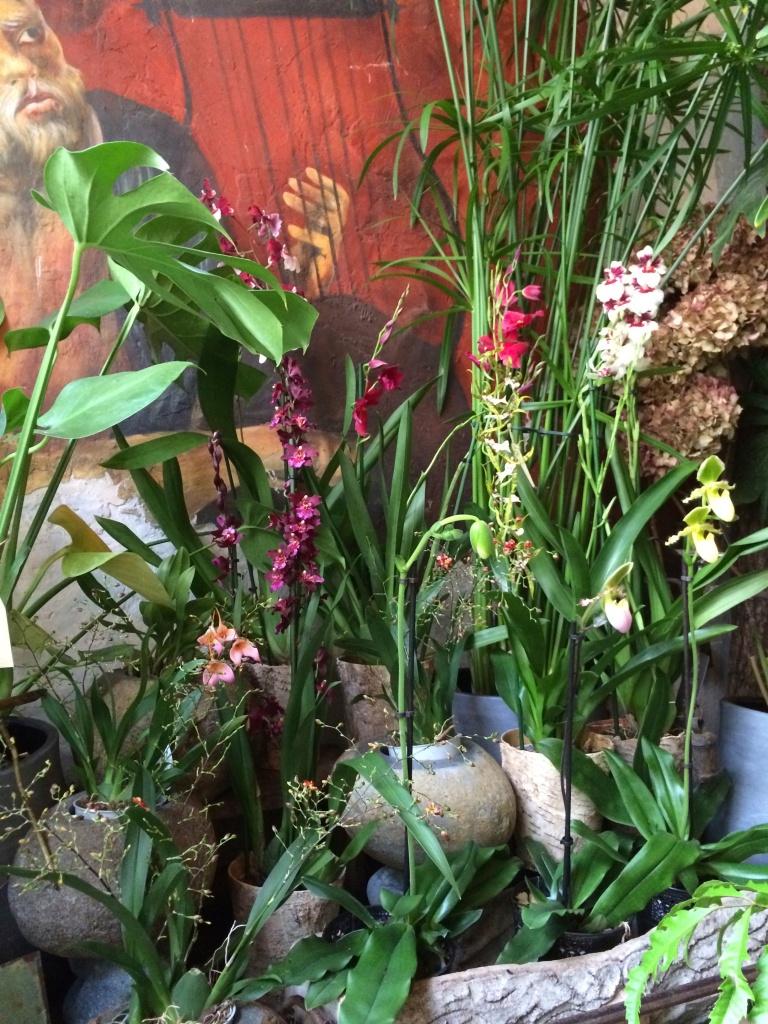 Bleuet Coquelicot, florist, inside and out
Bleuet Coquelicot, florist, inside and out
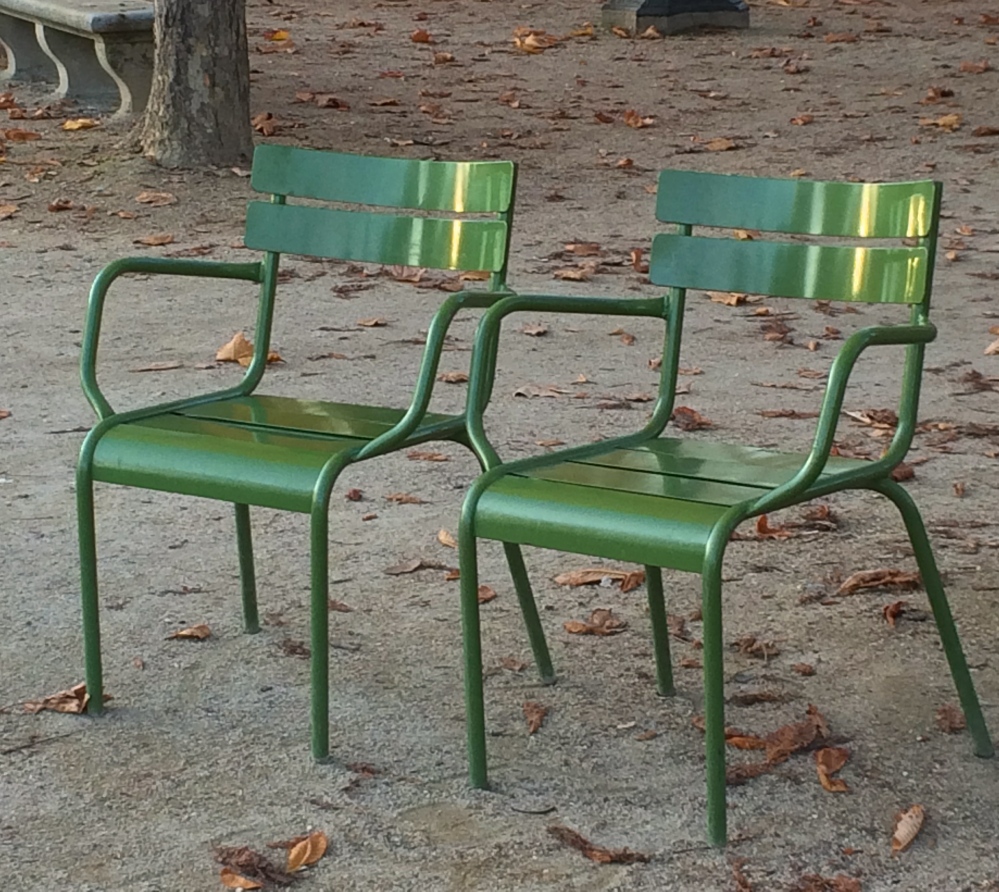 ‘Luxembourg’ chairs, Tuileries Gardens, Paris
‘Luxembourg’ chairs, Tuileries Gardens, Paris








